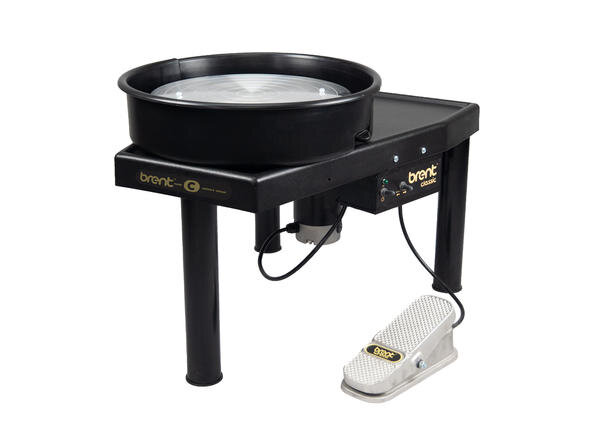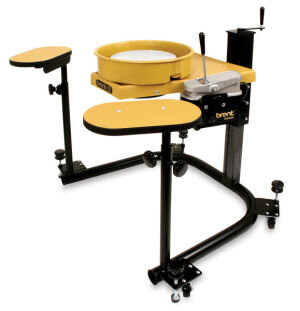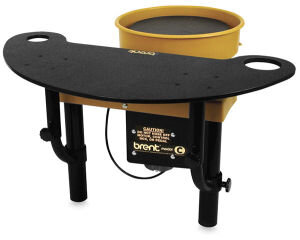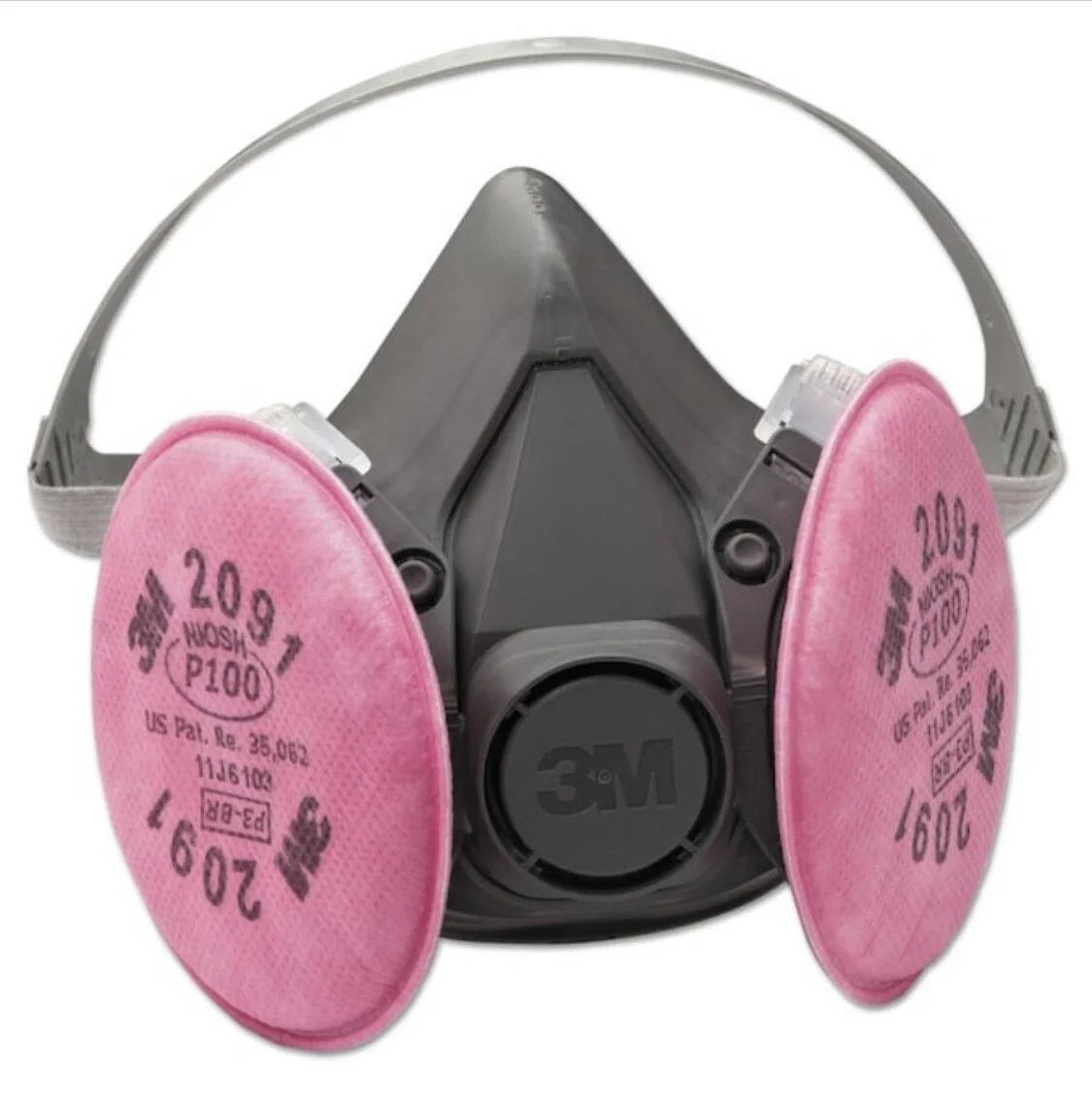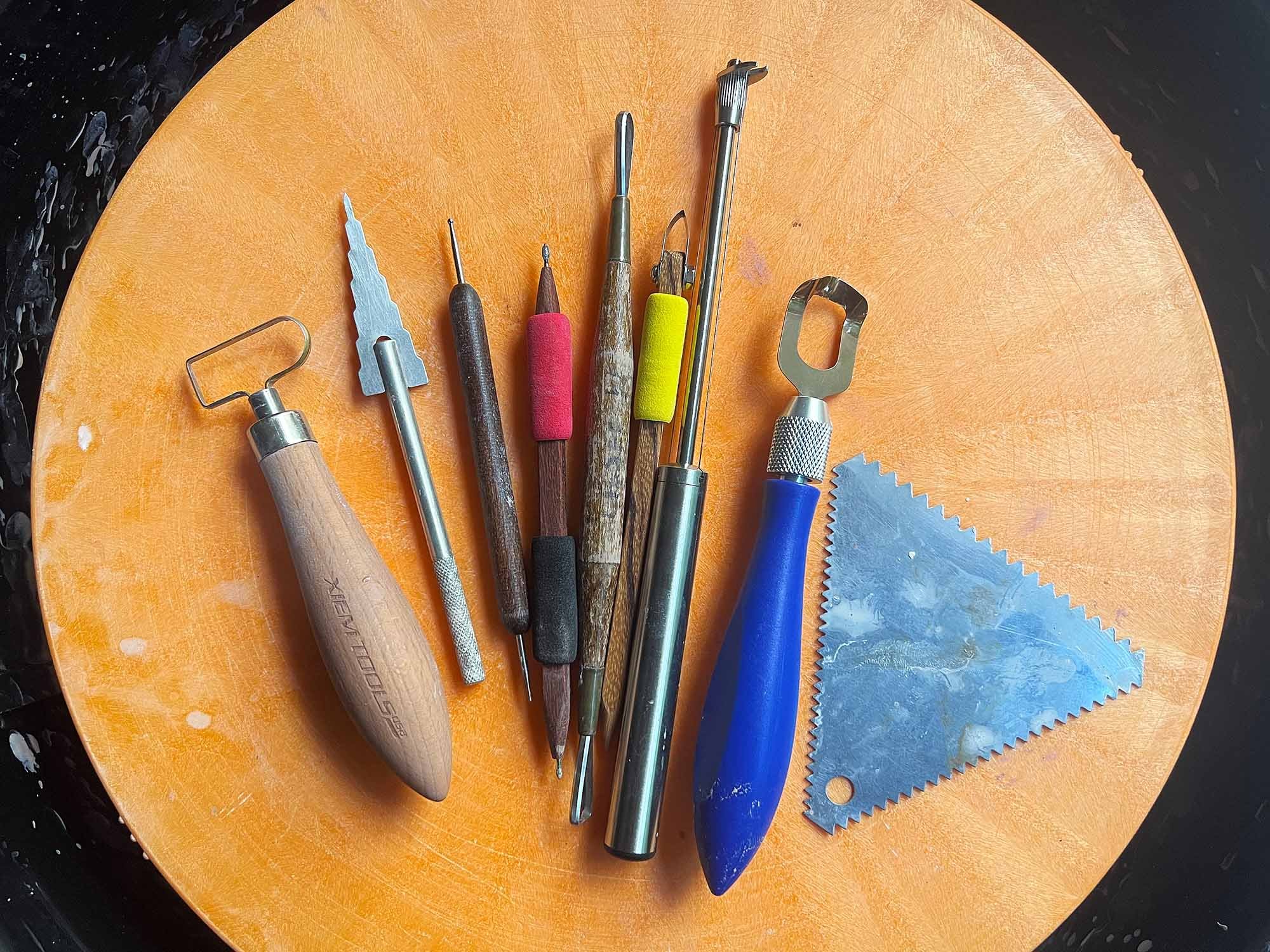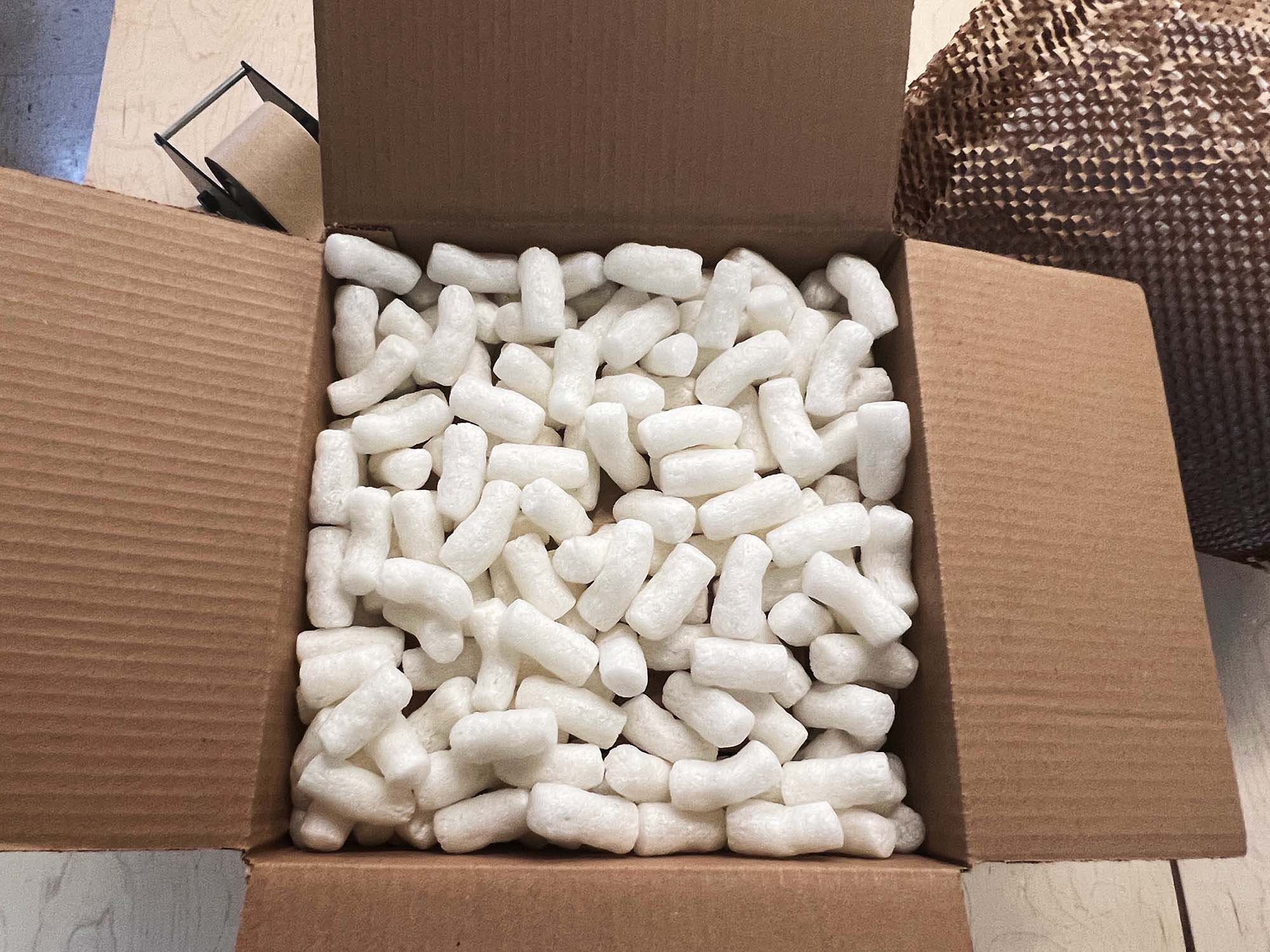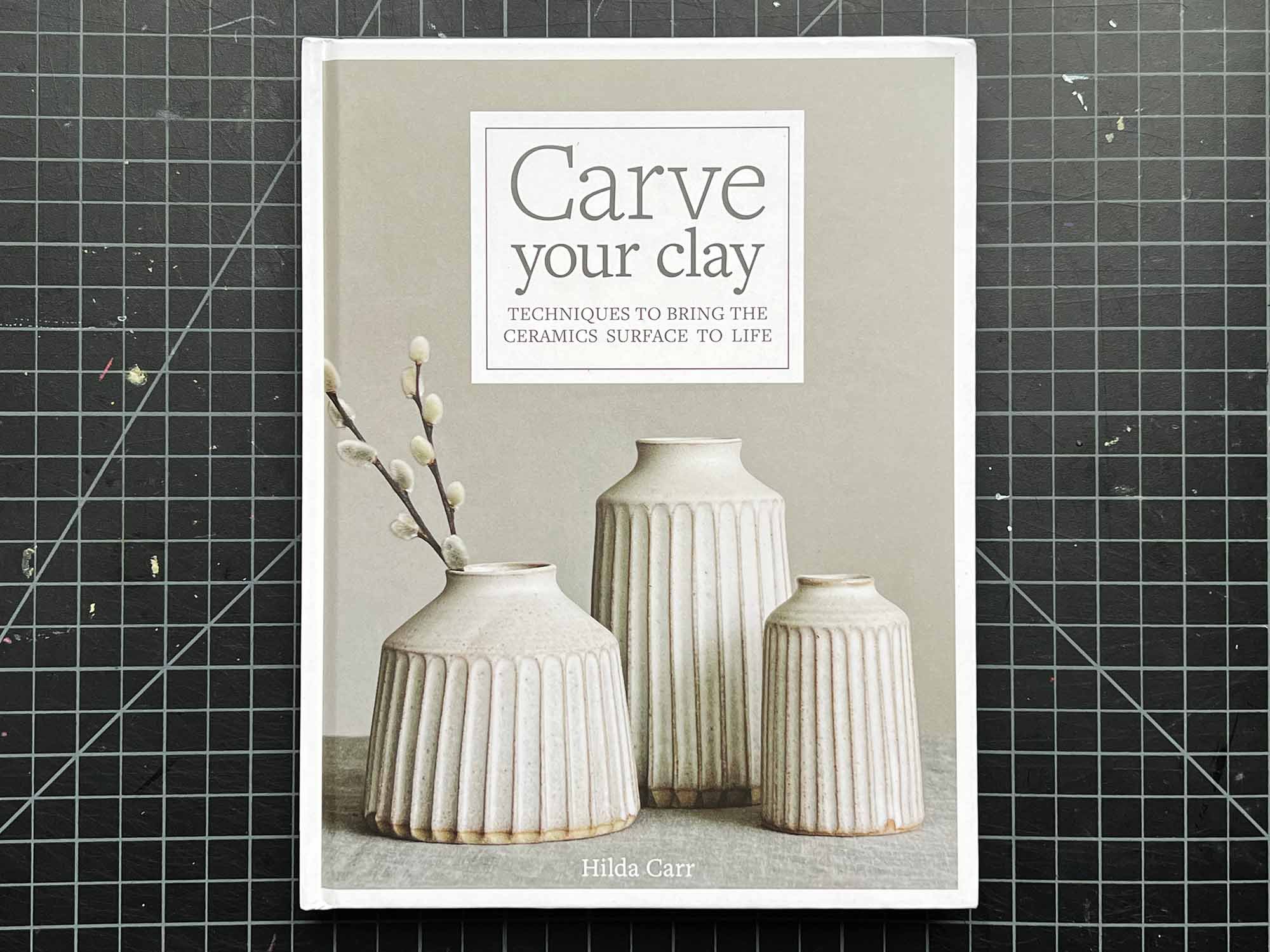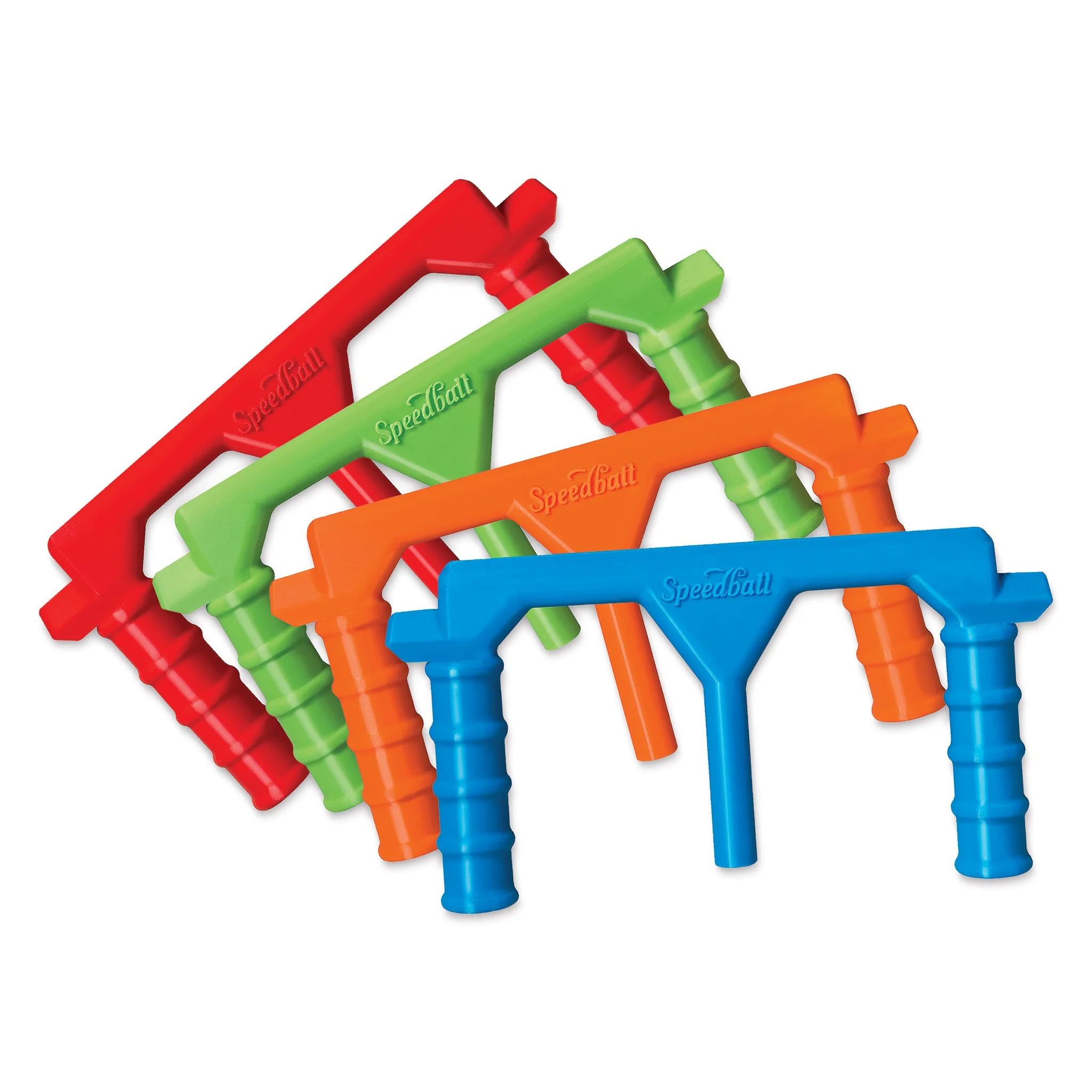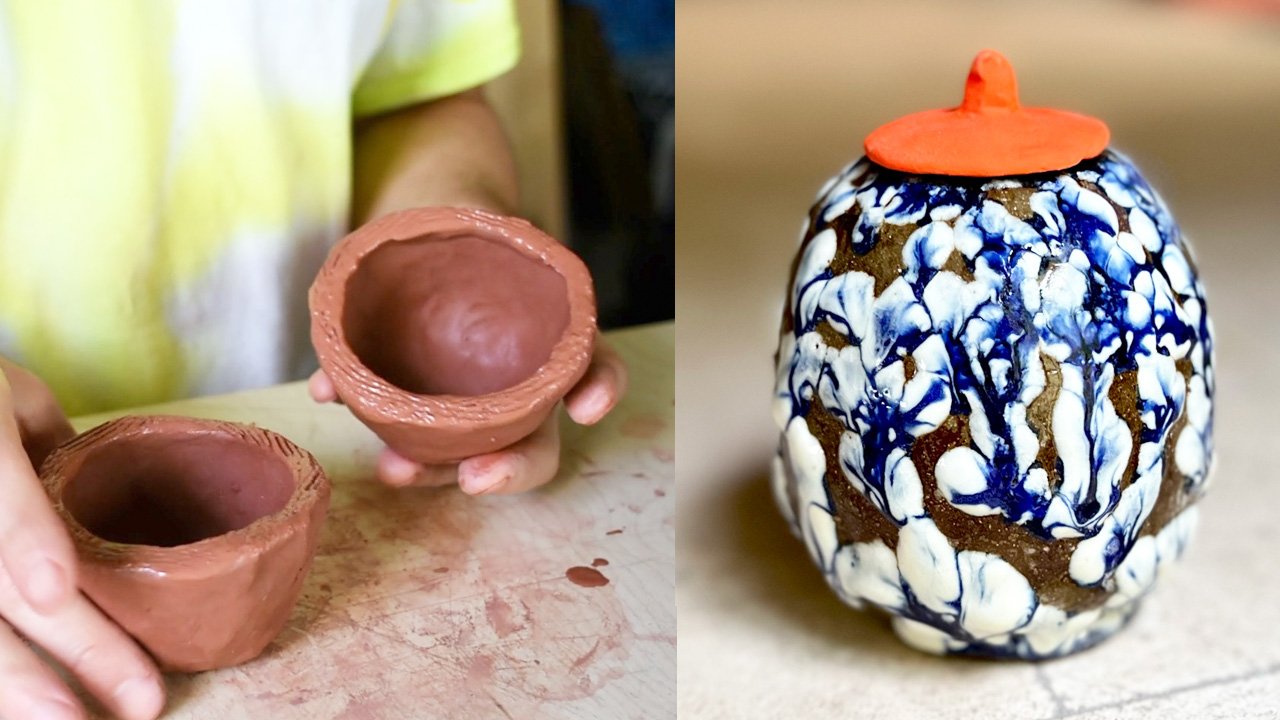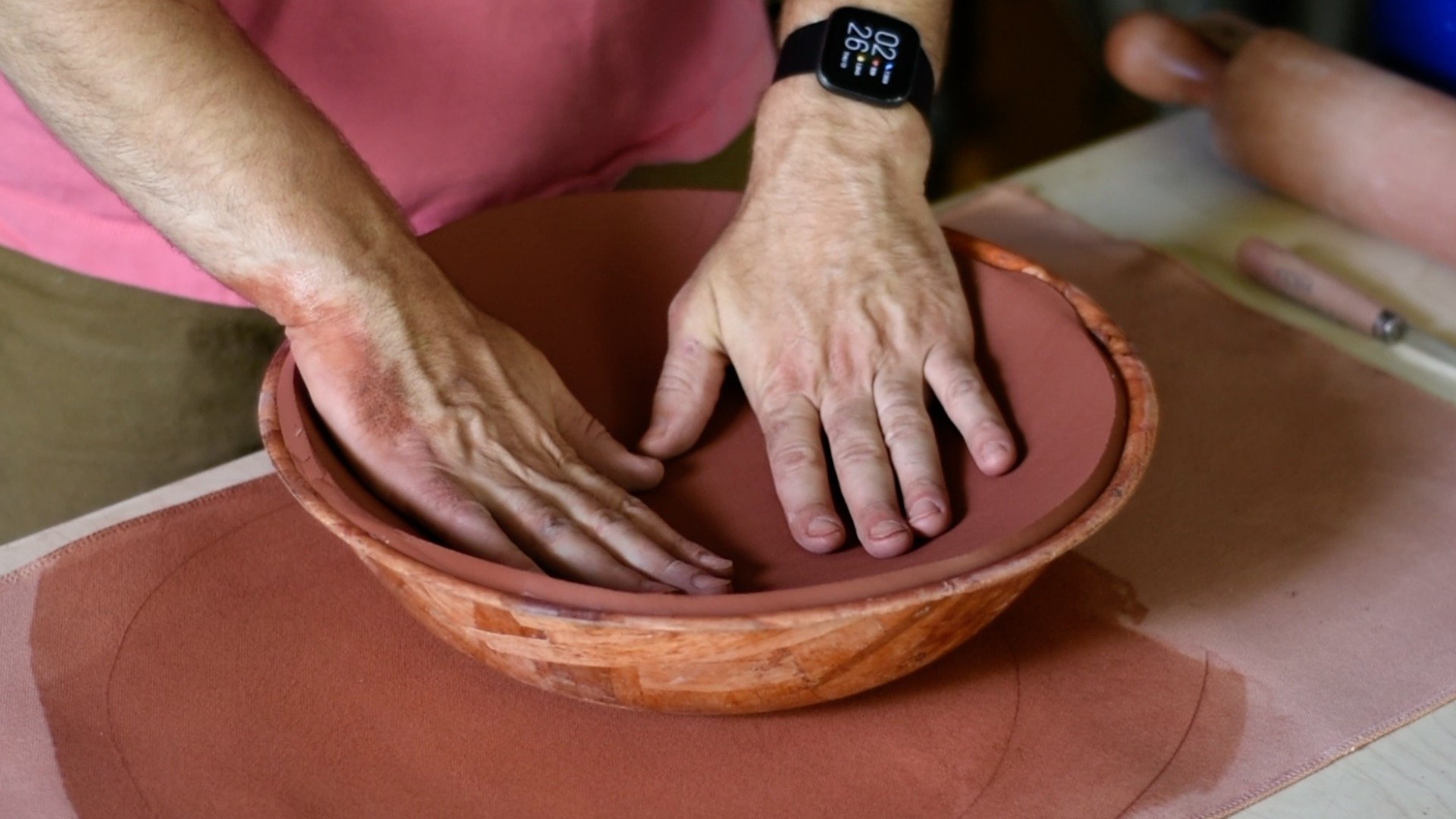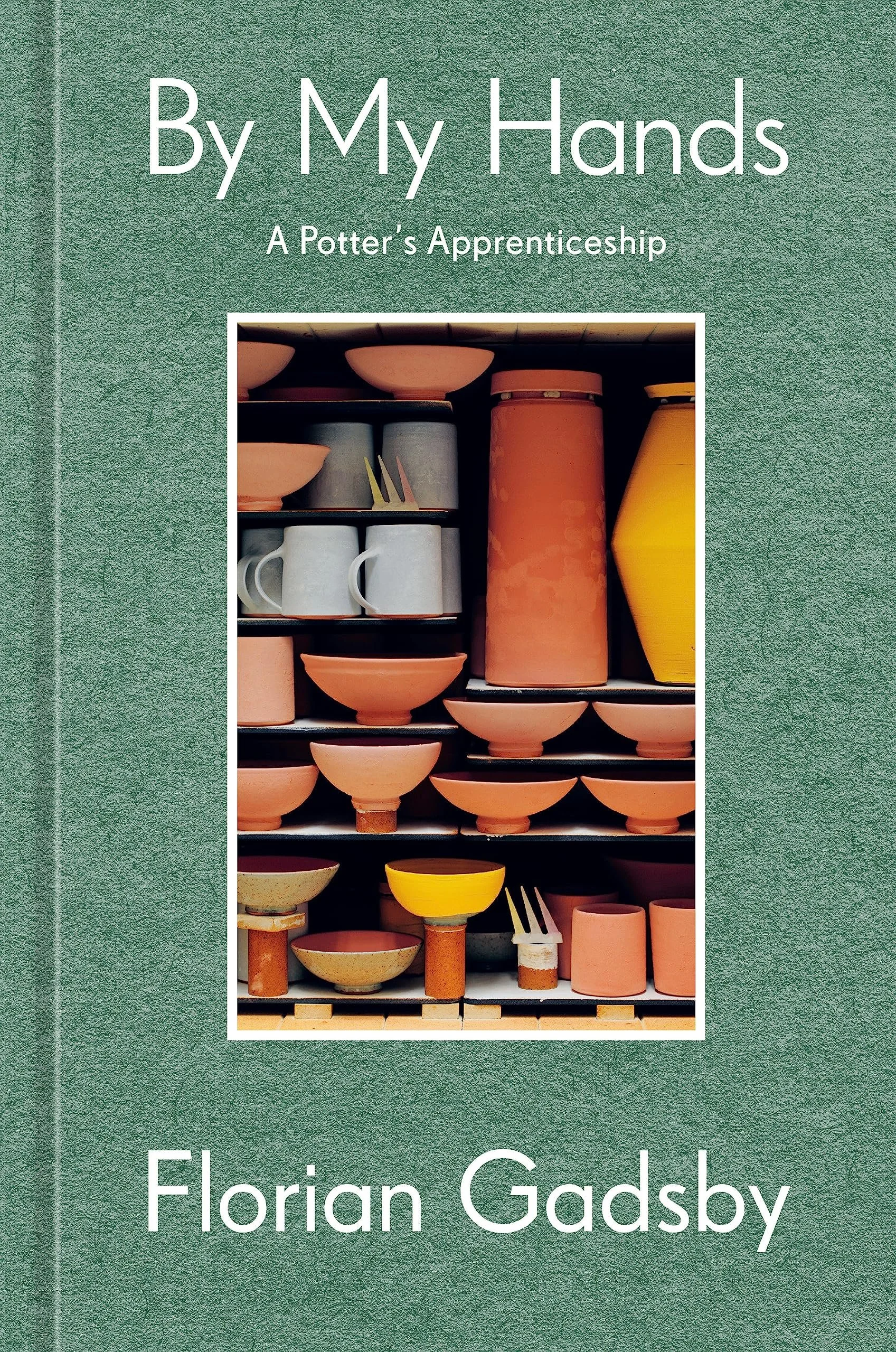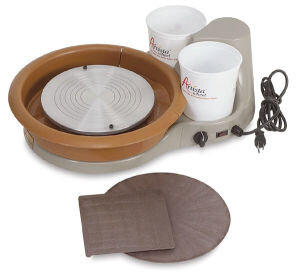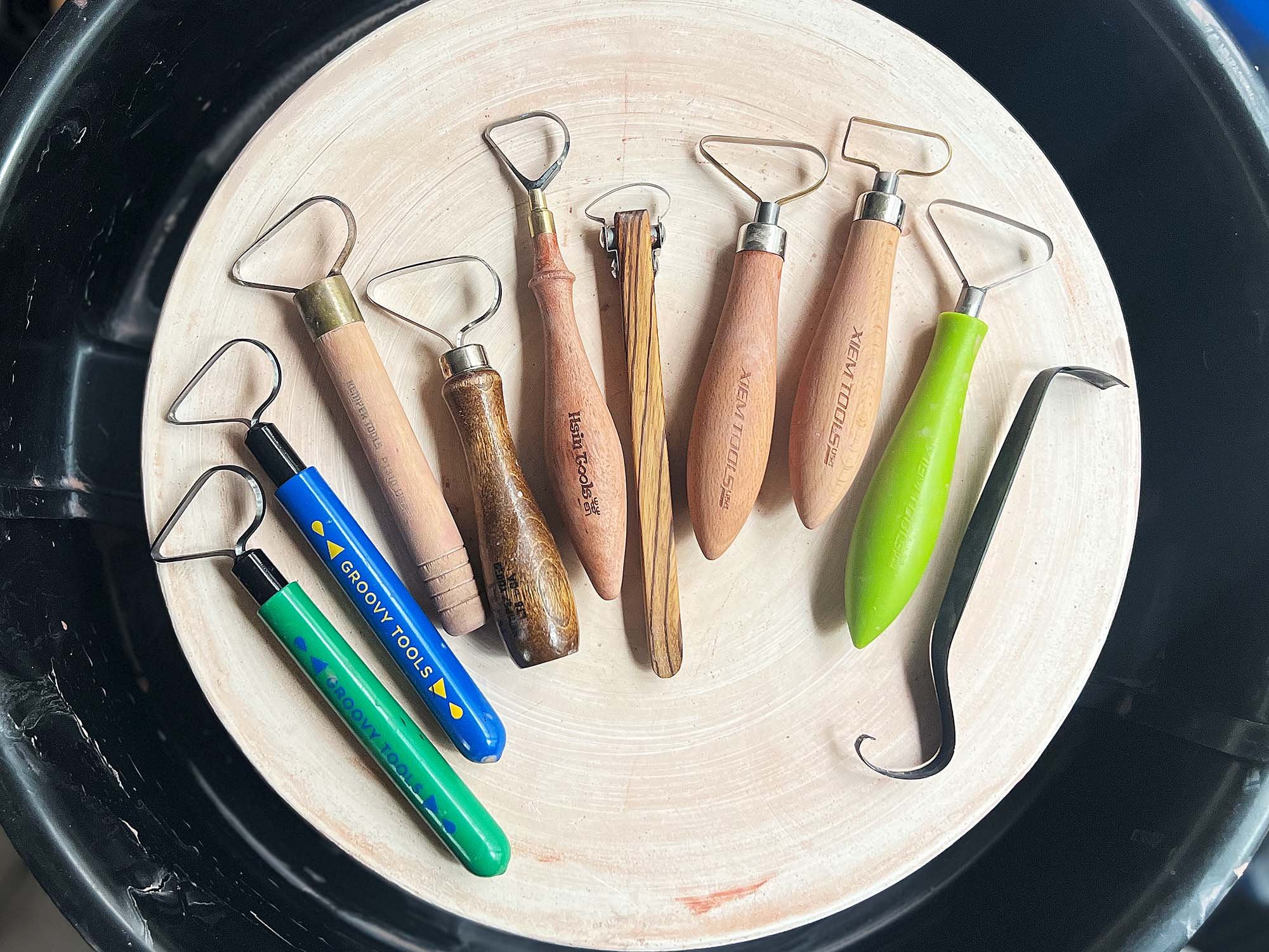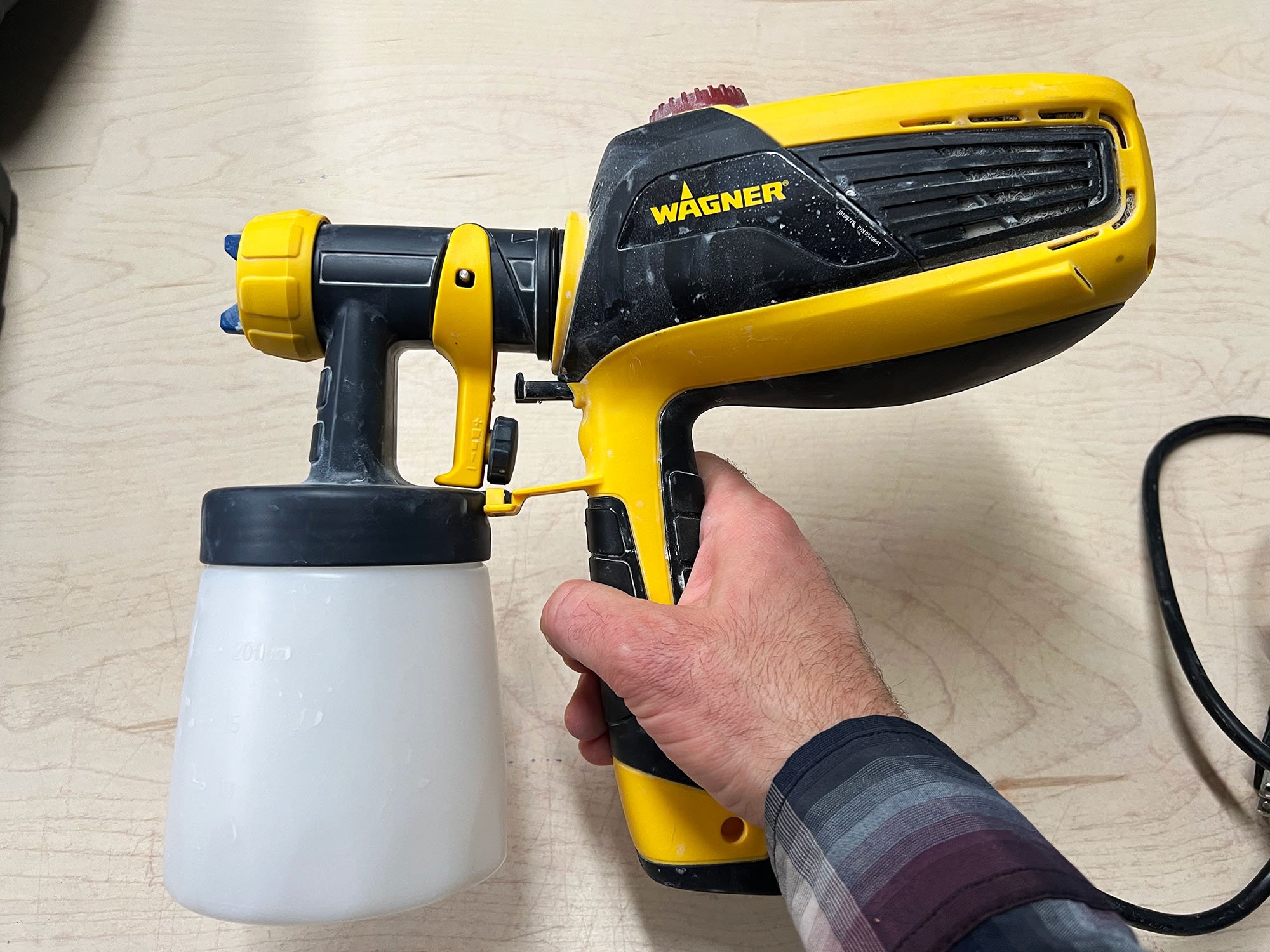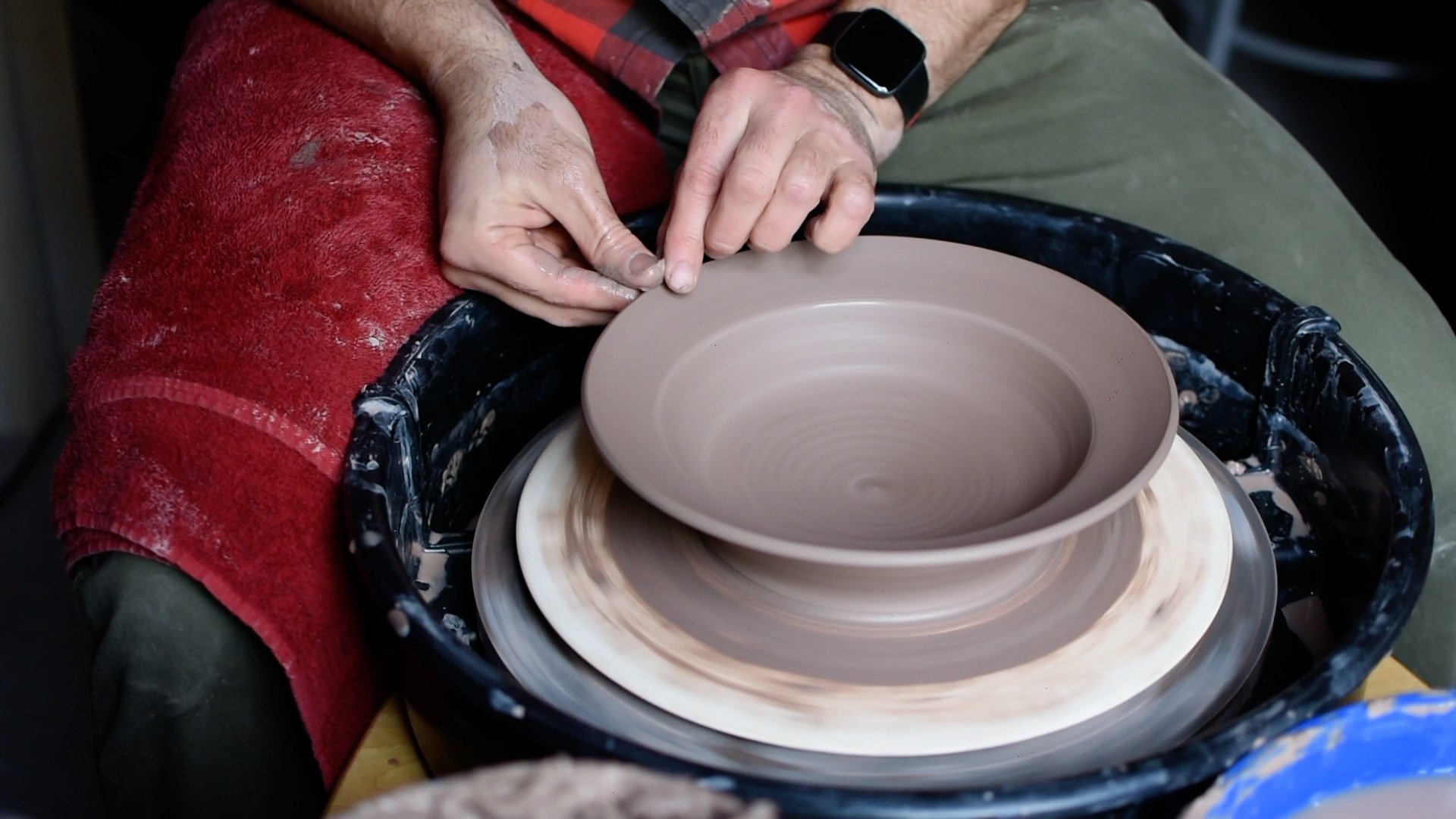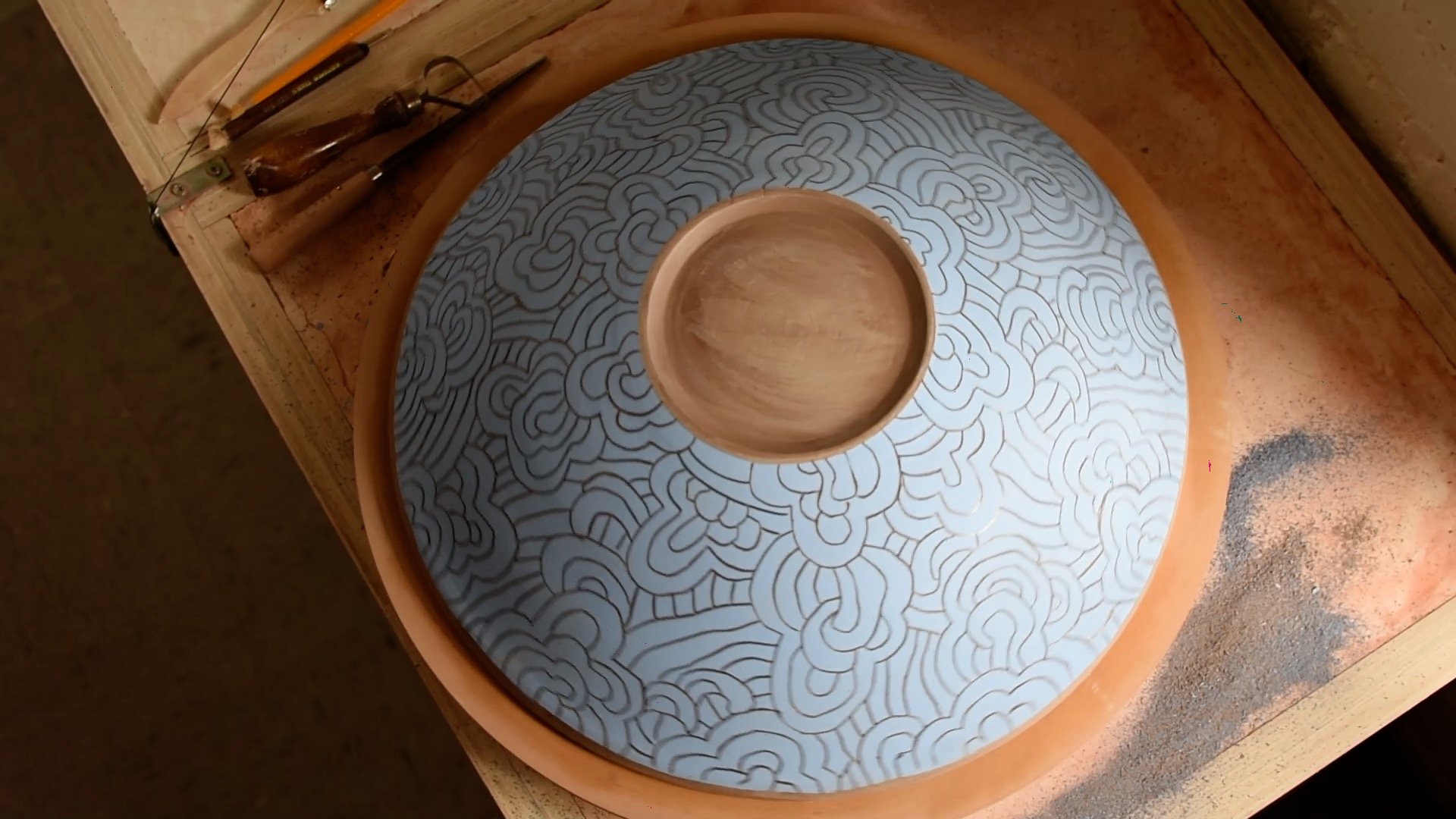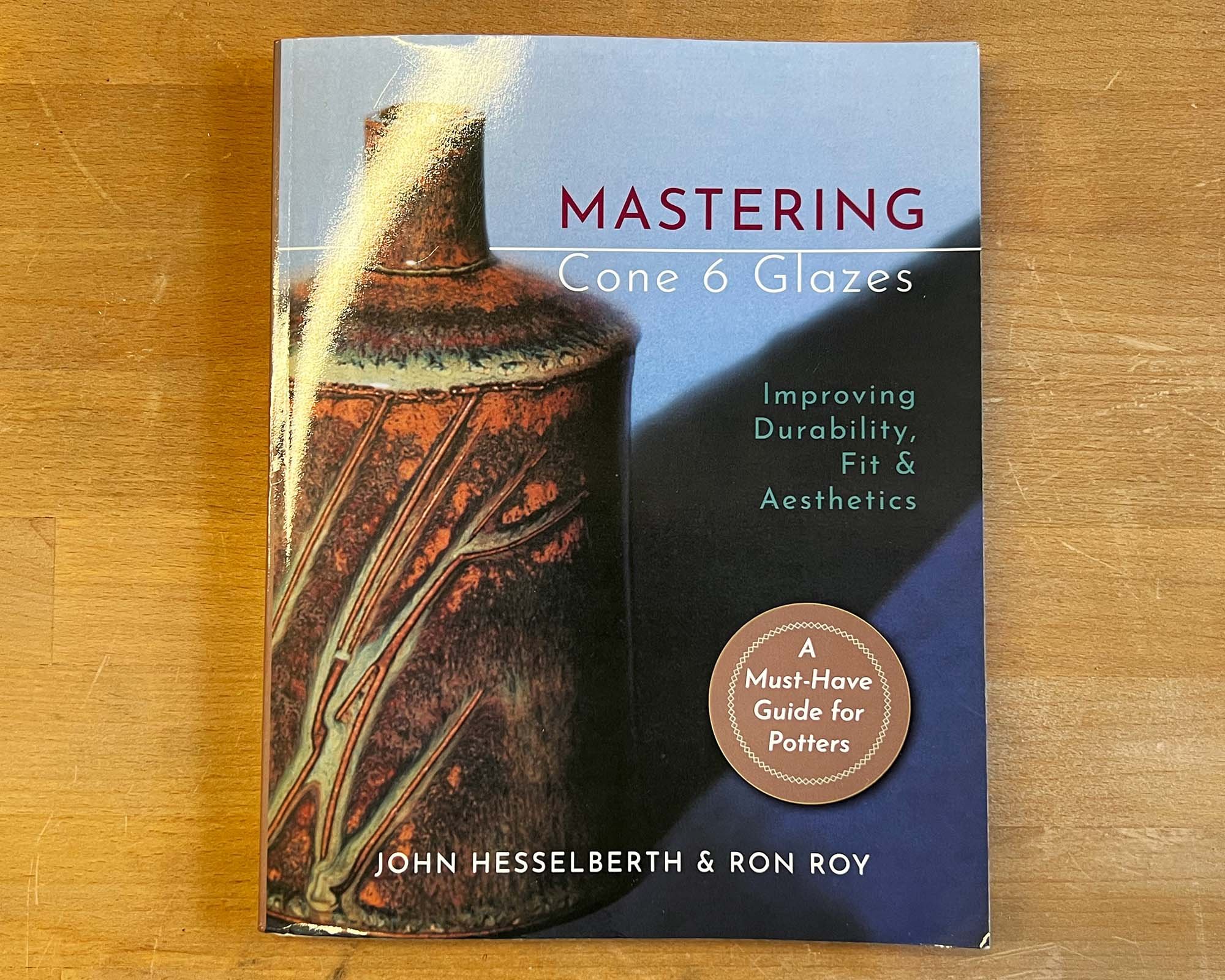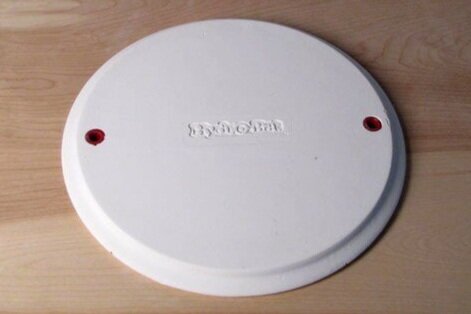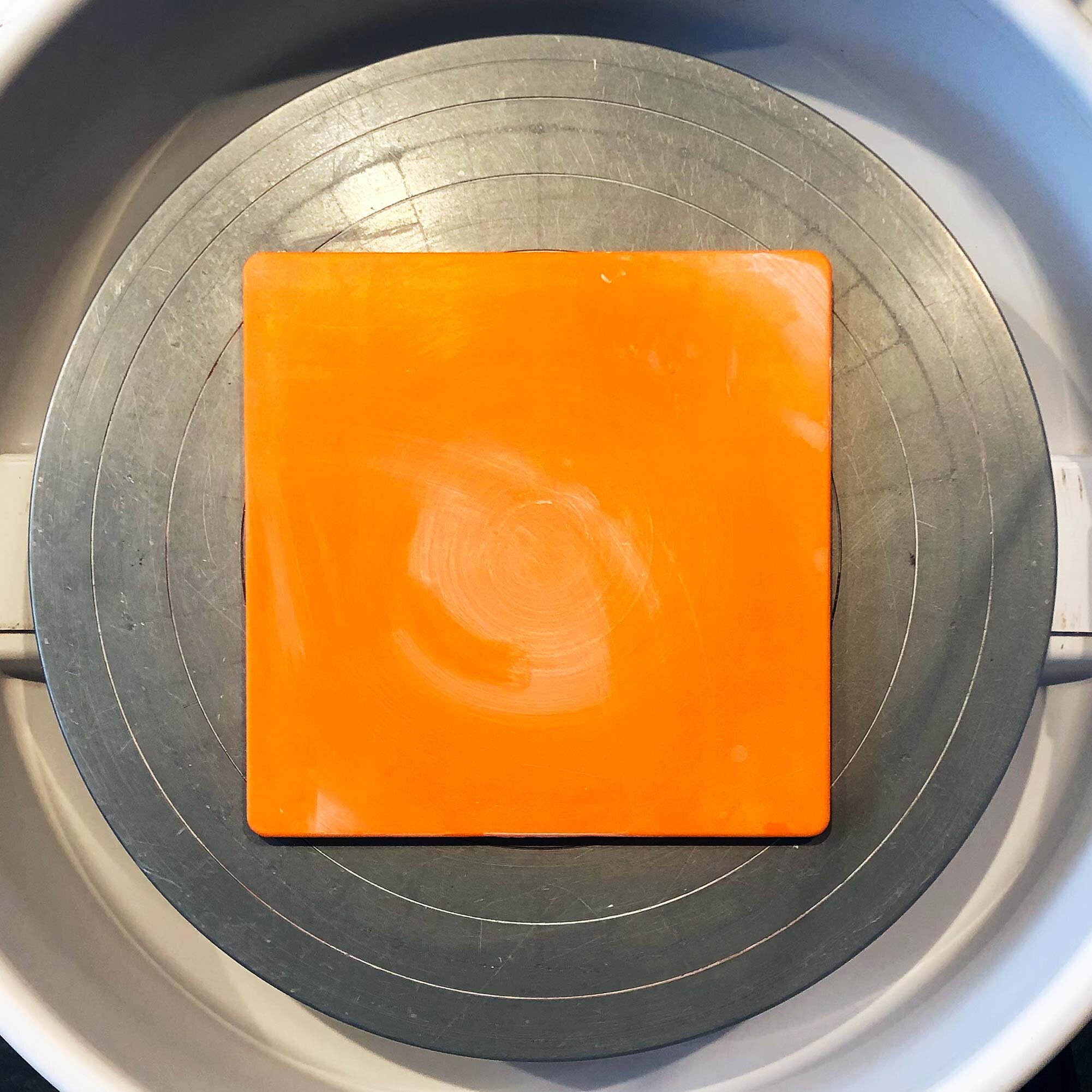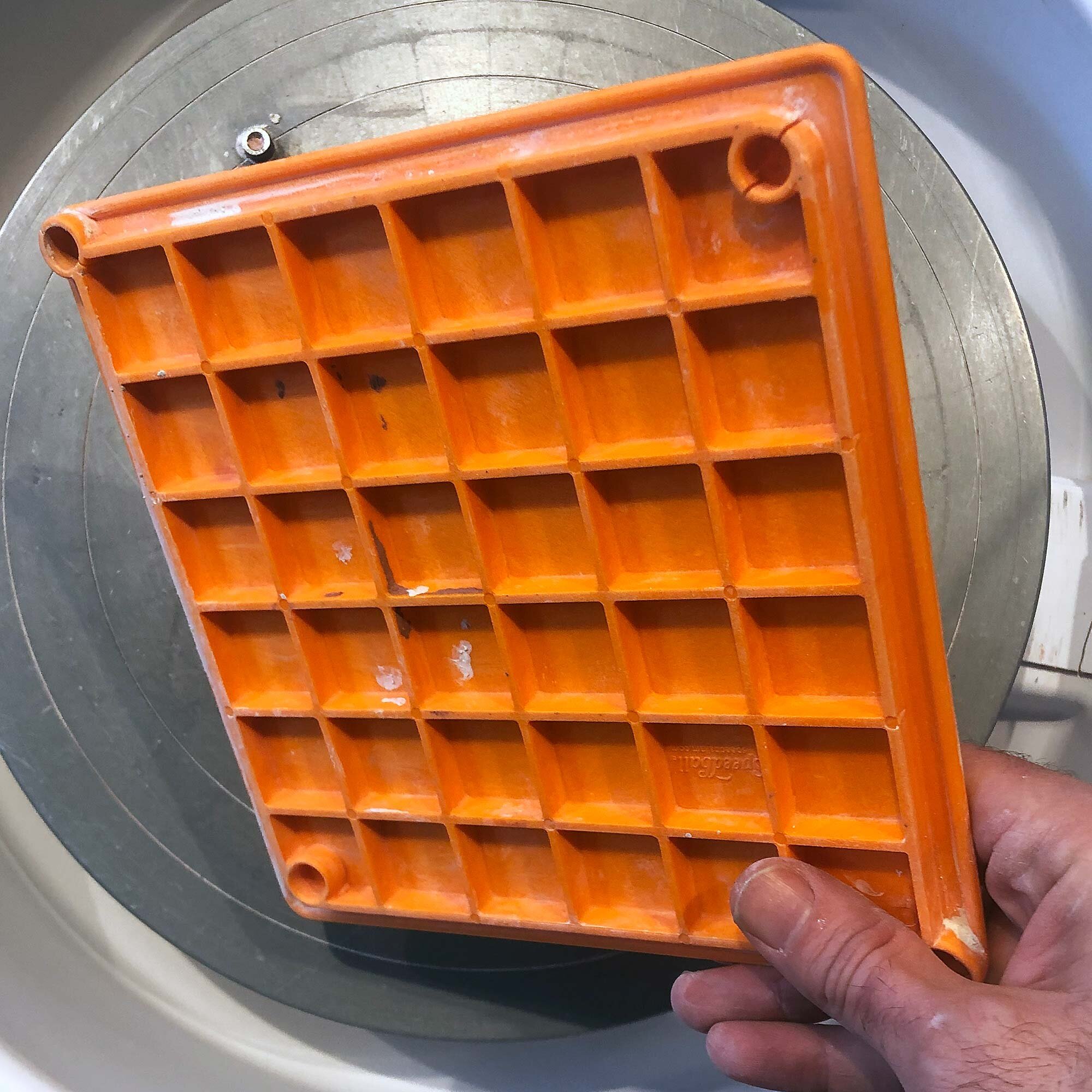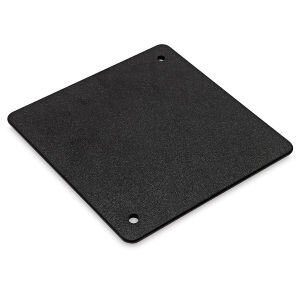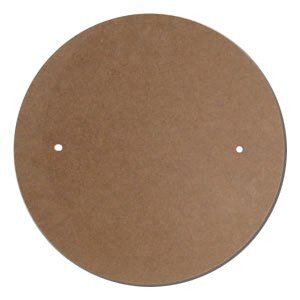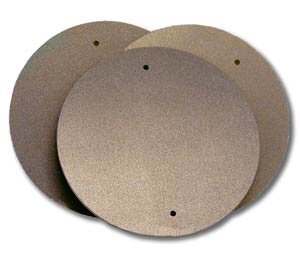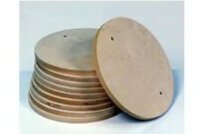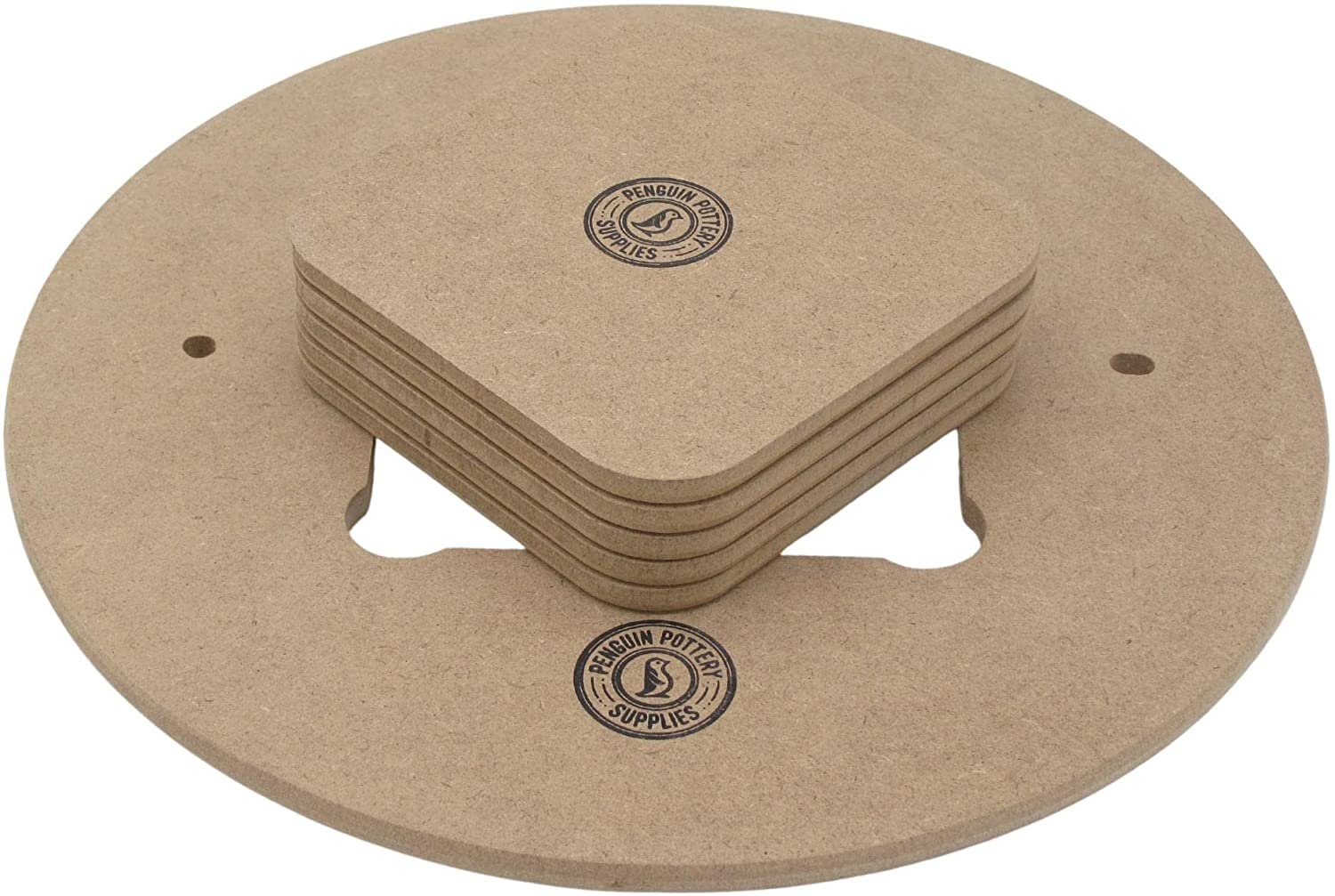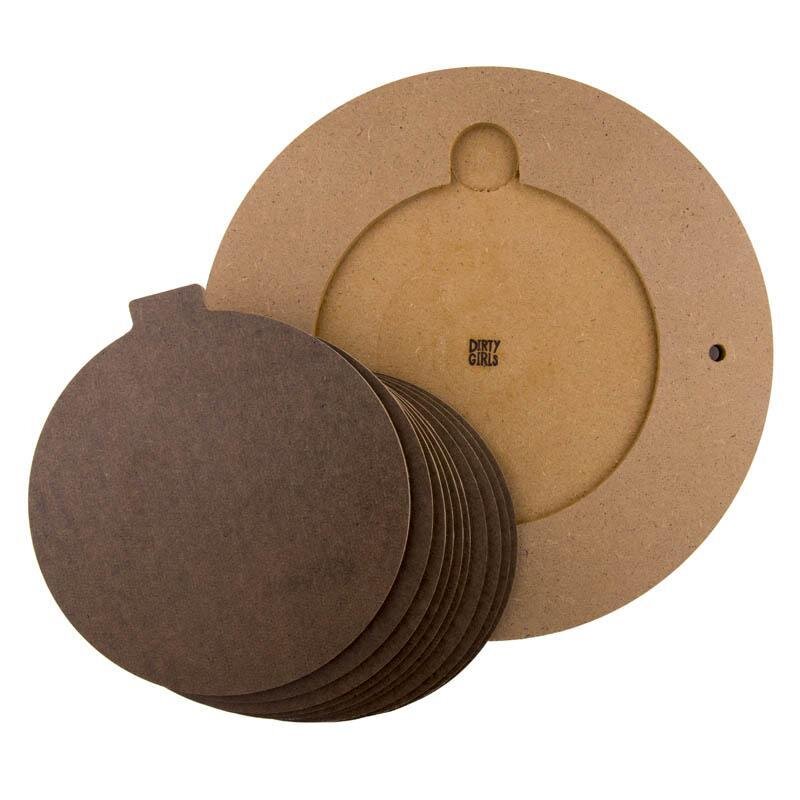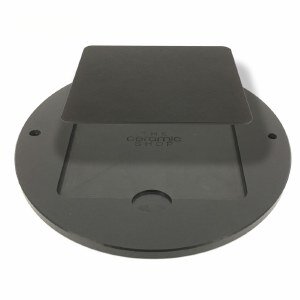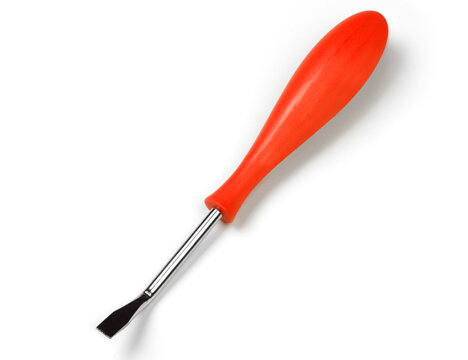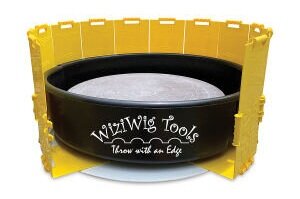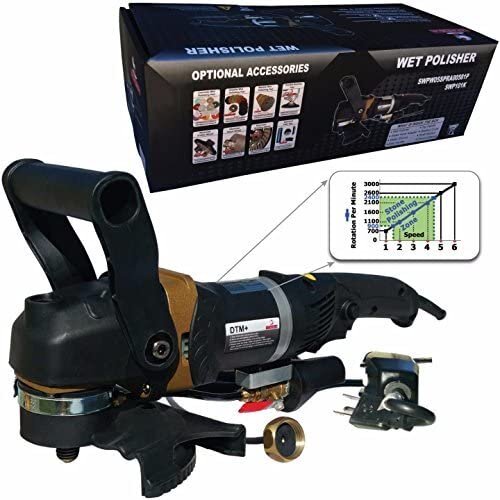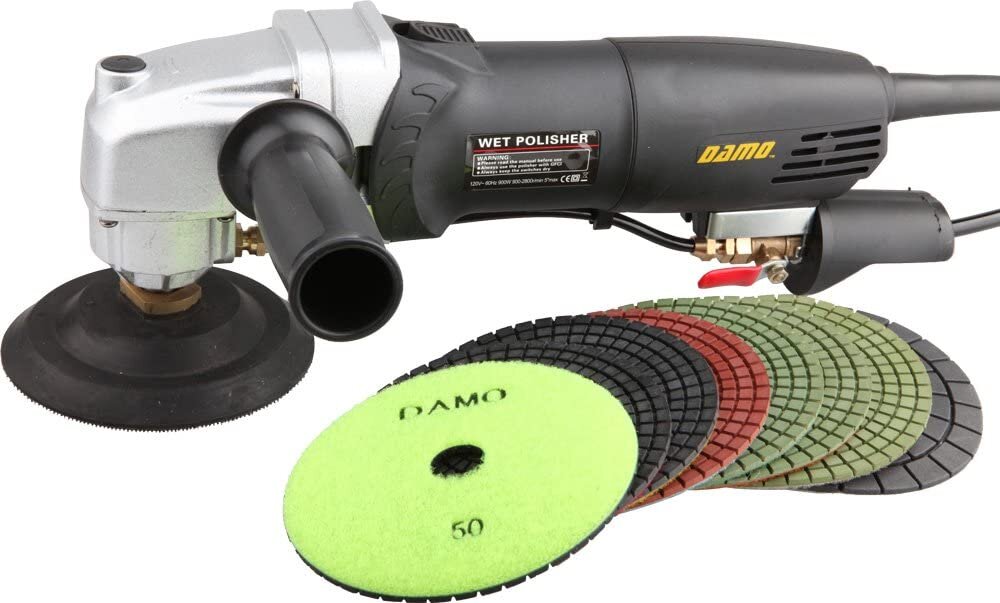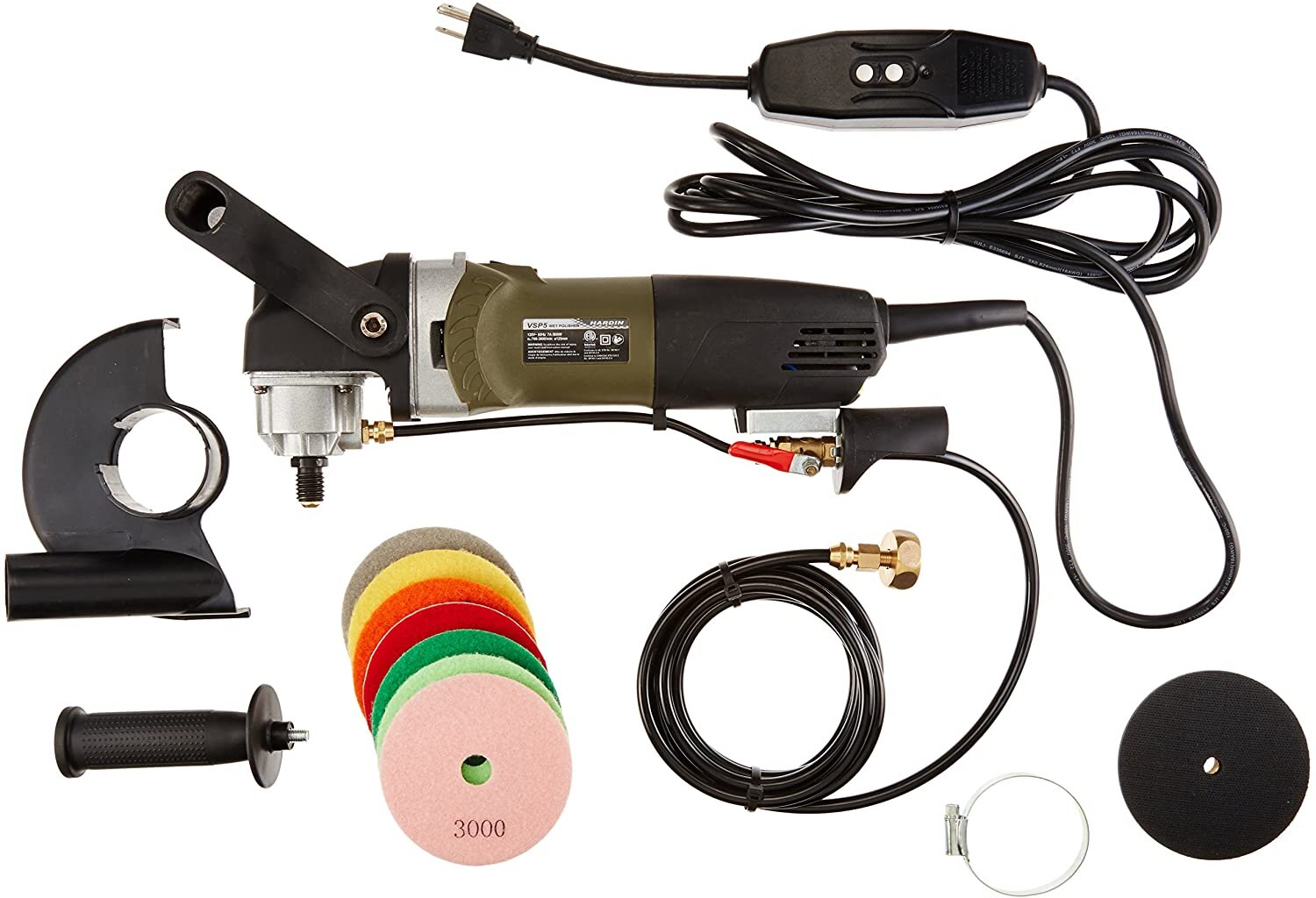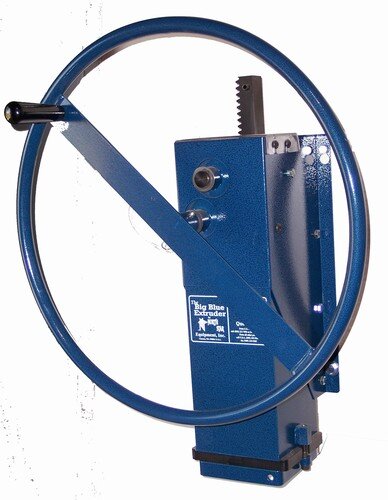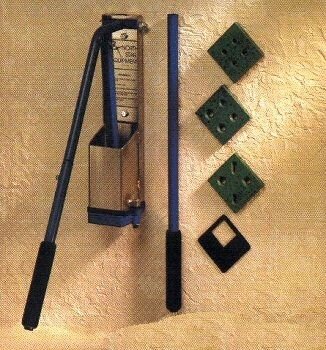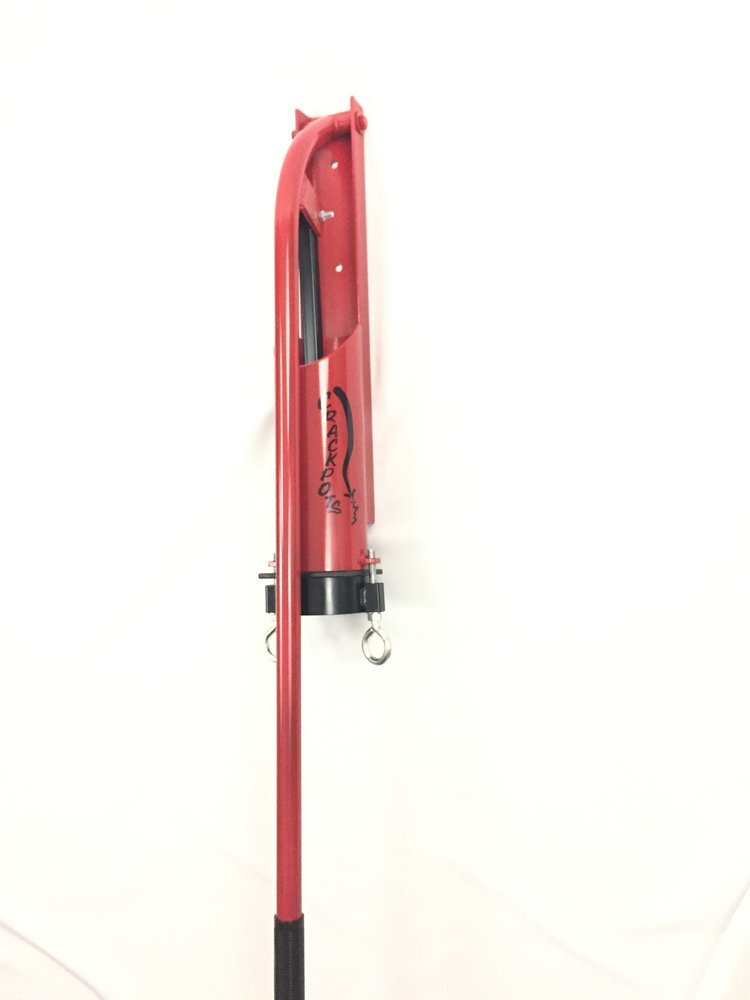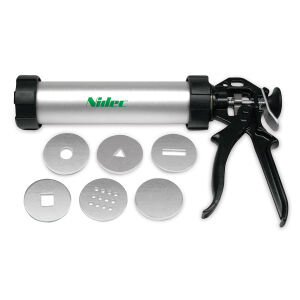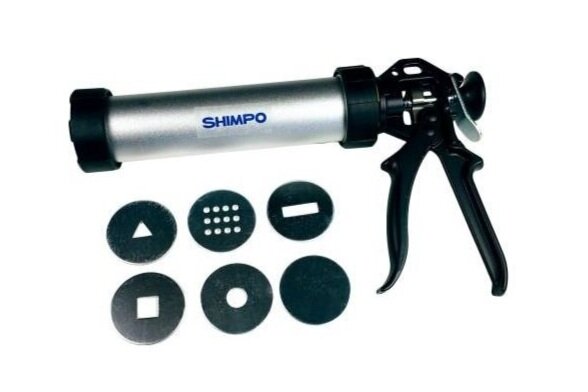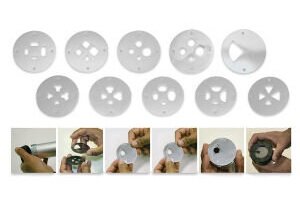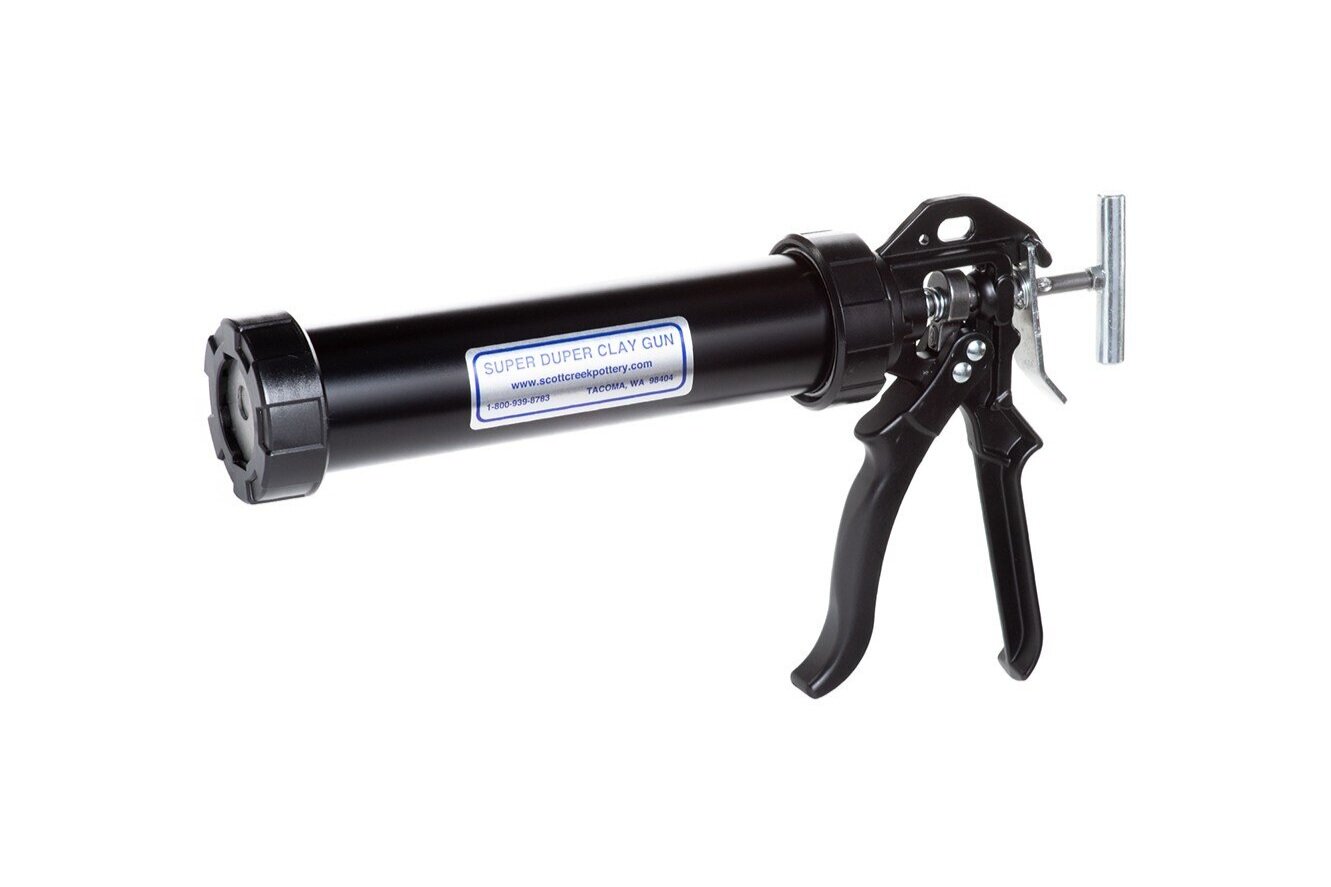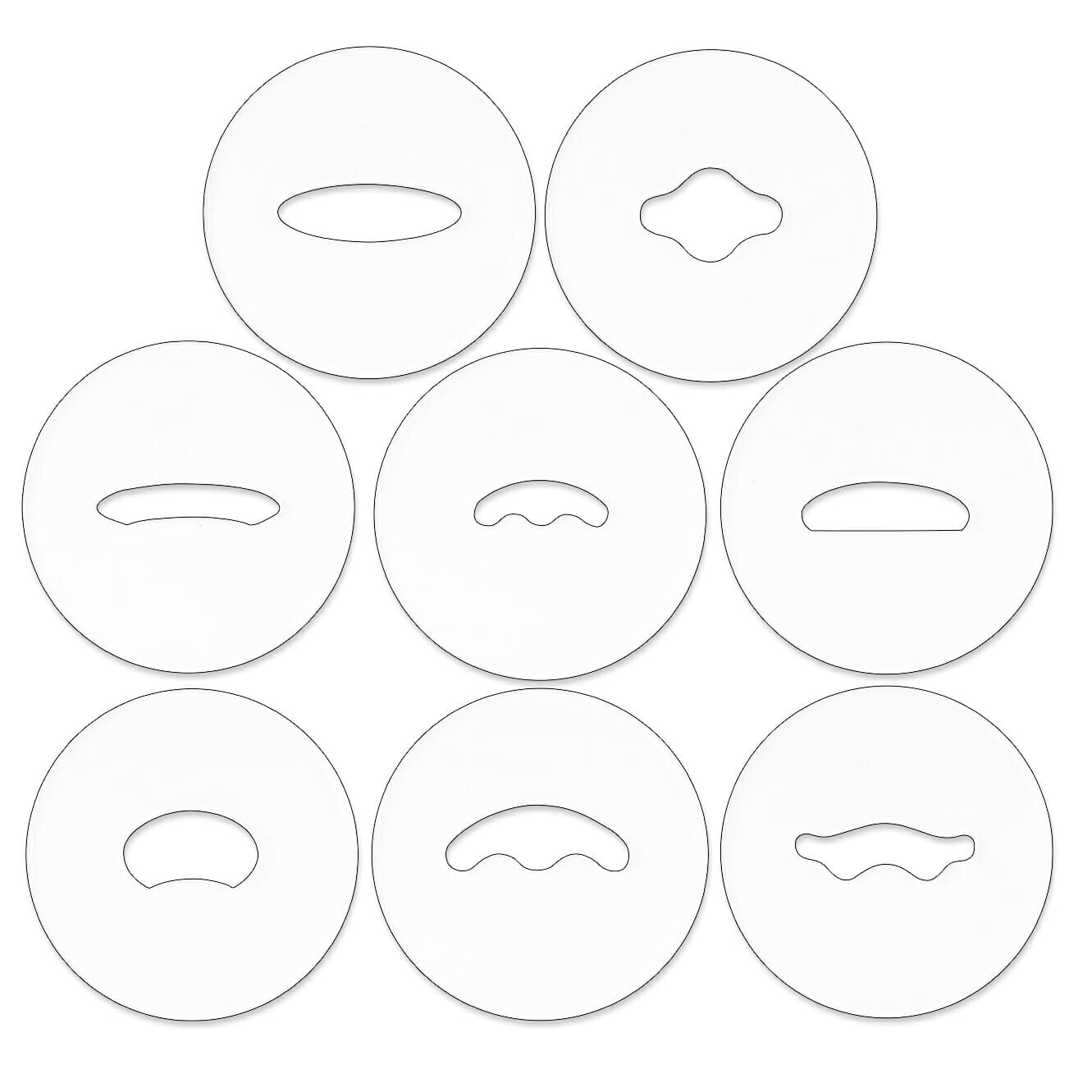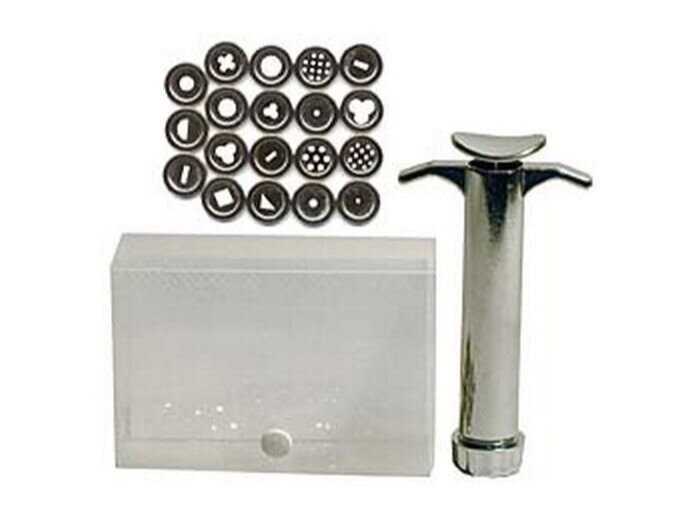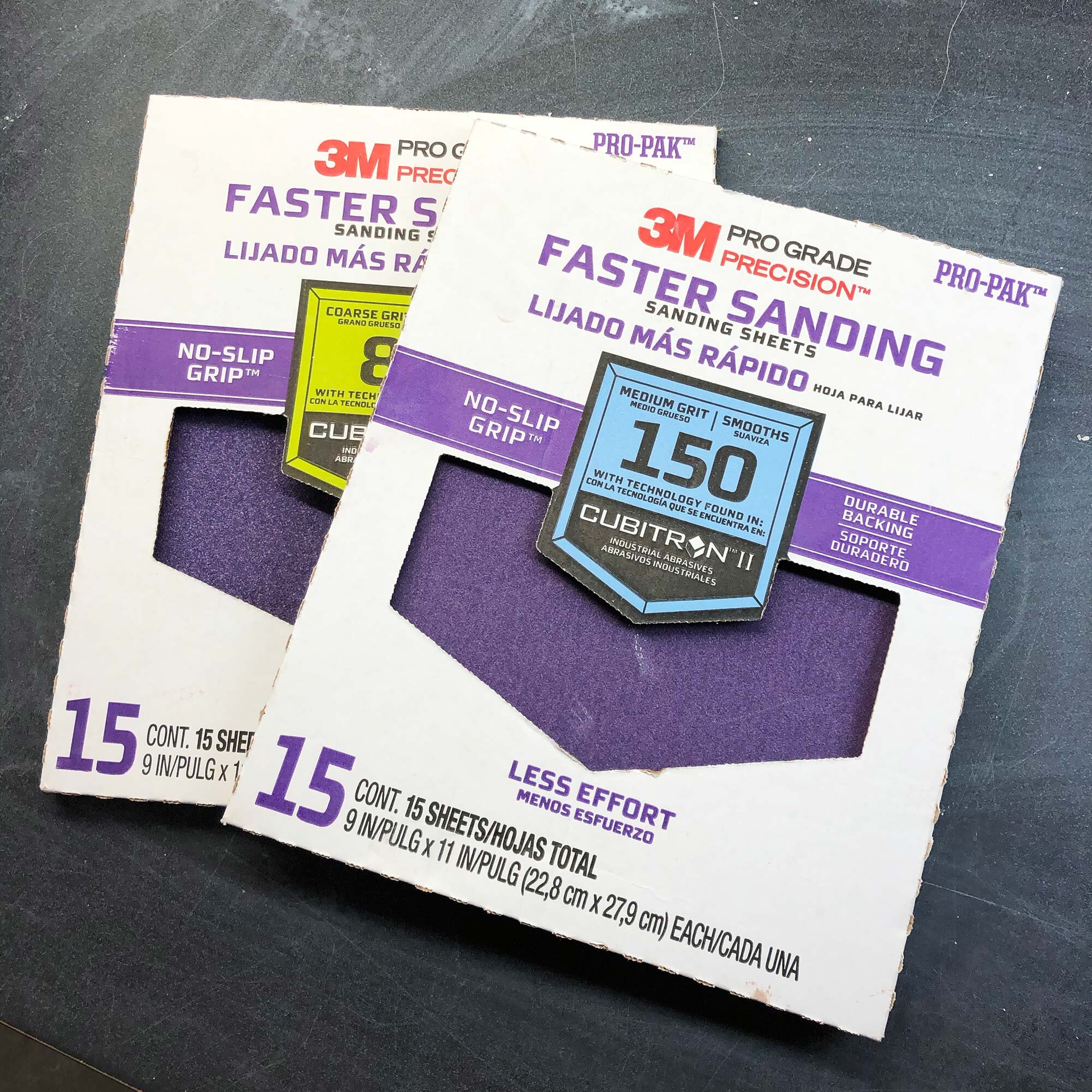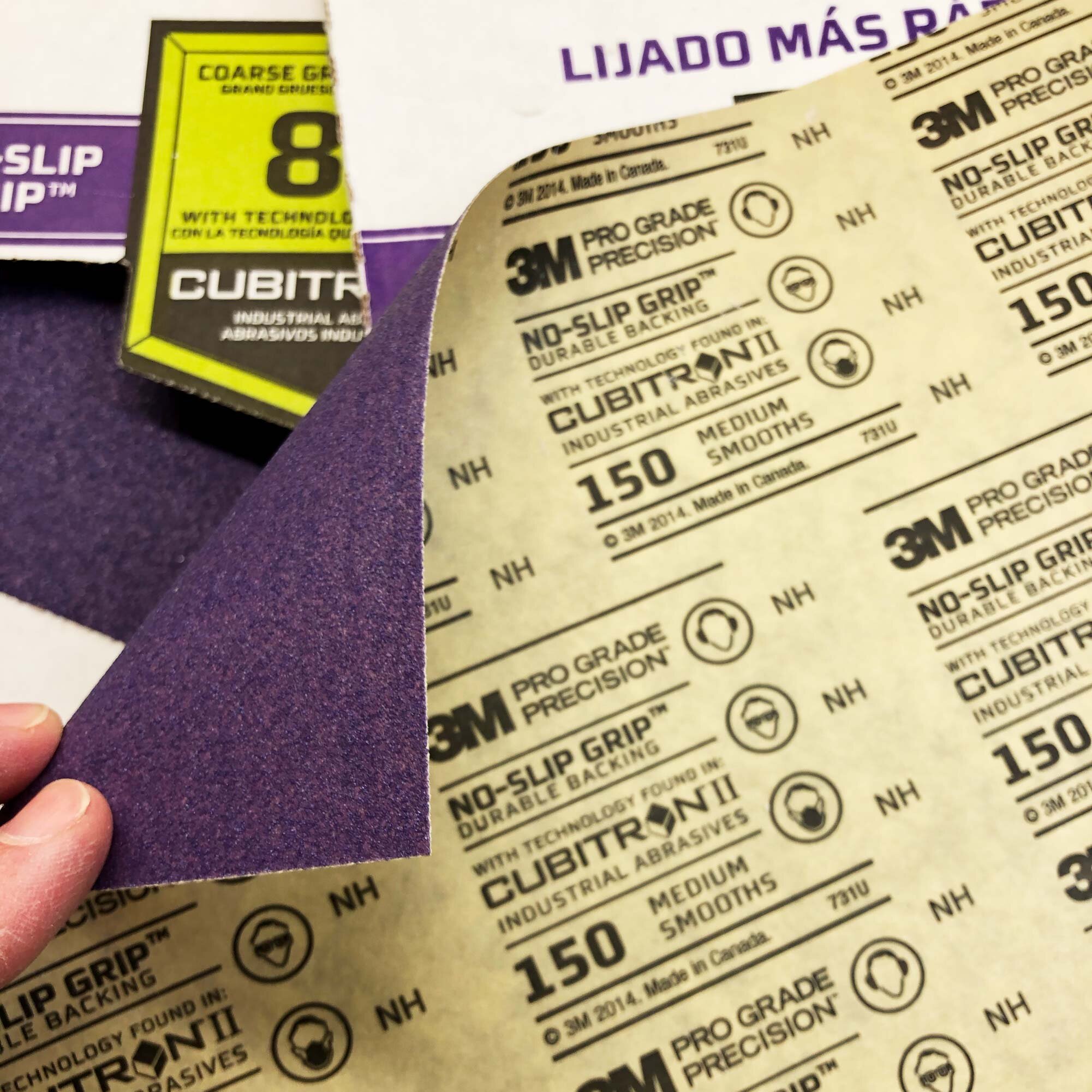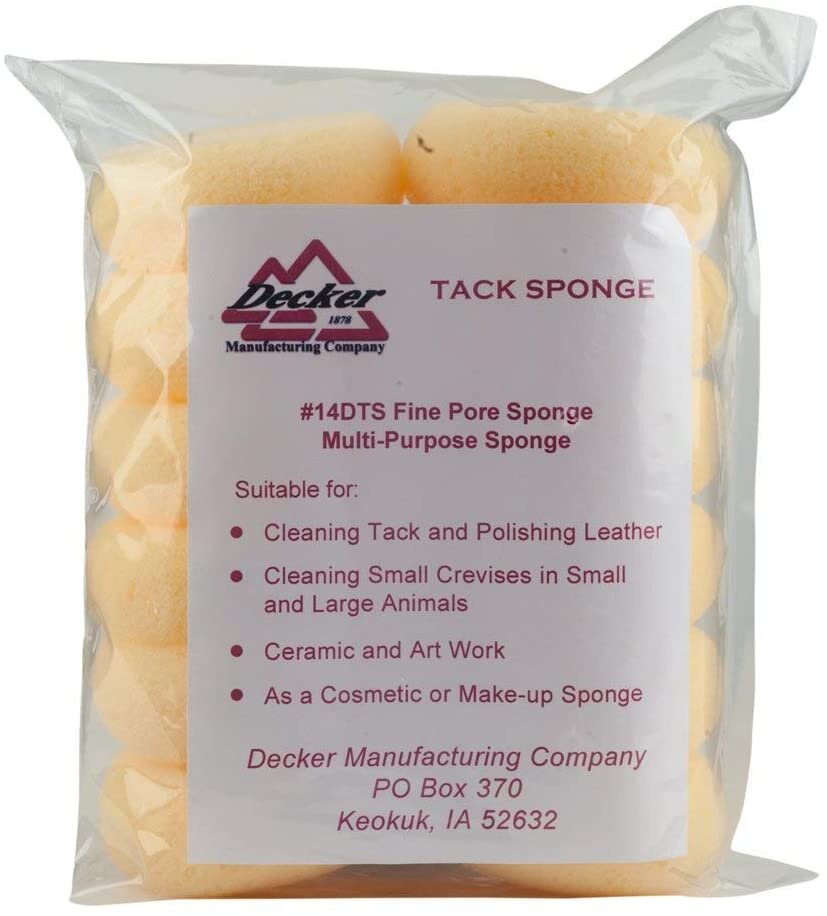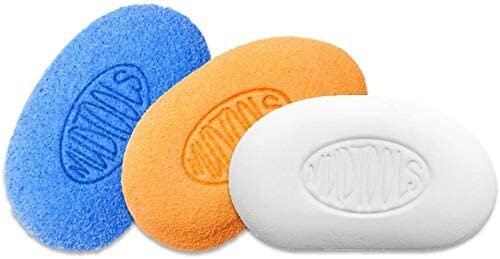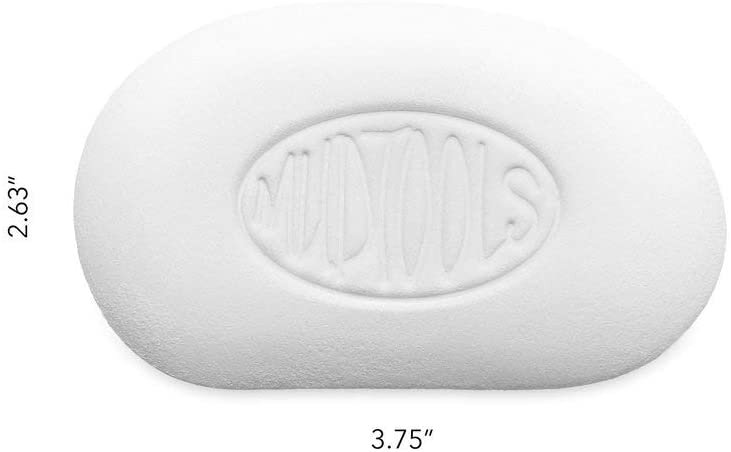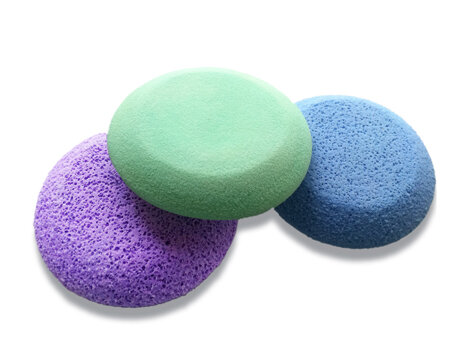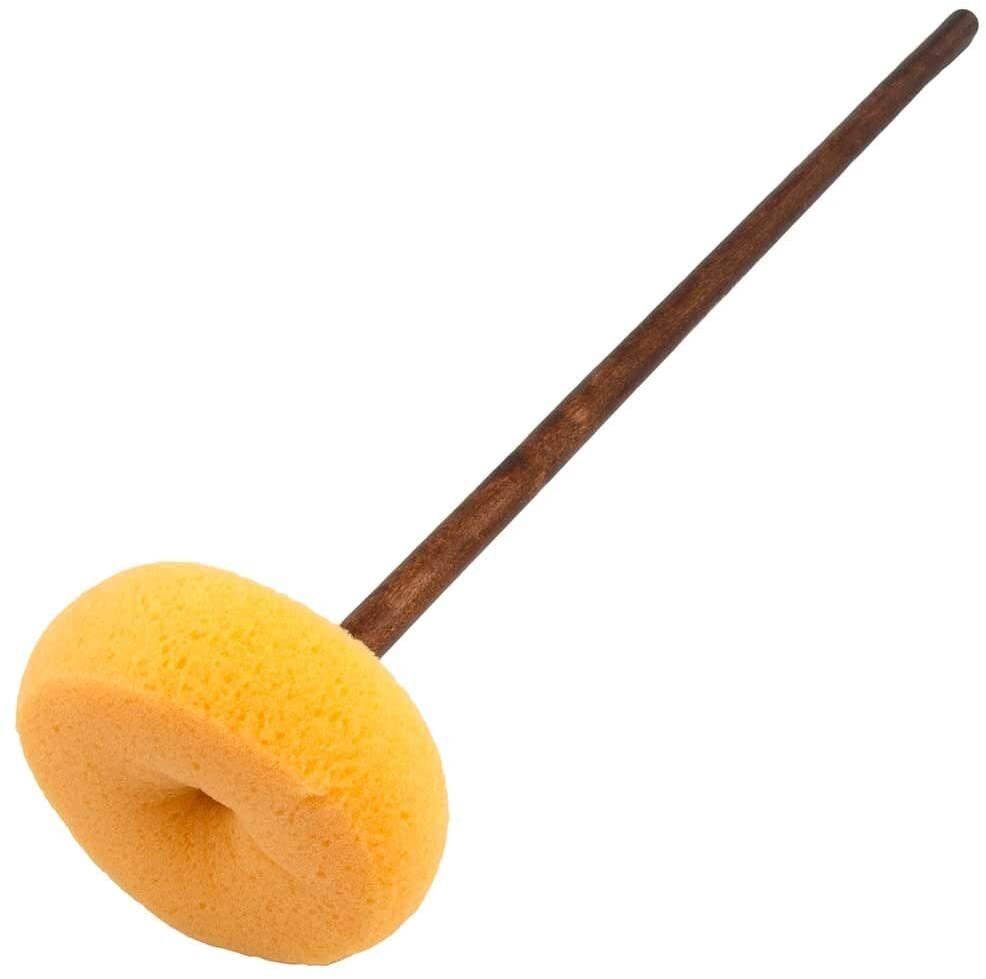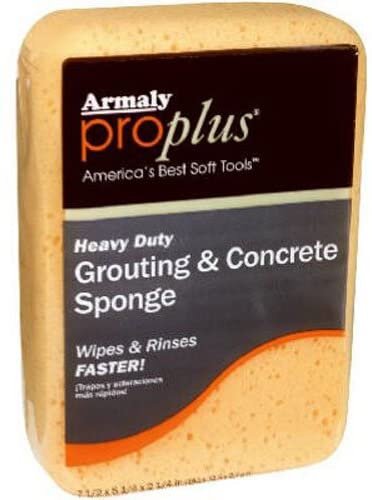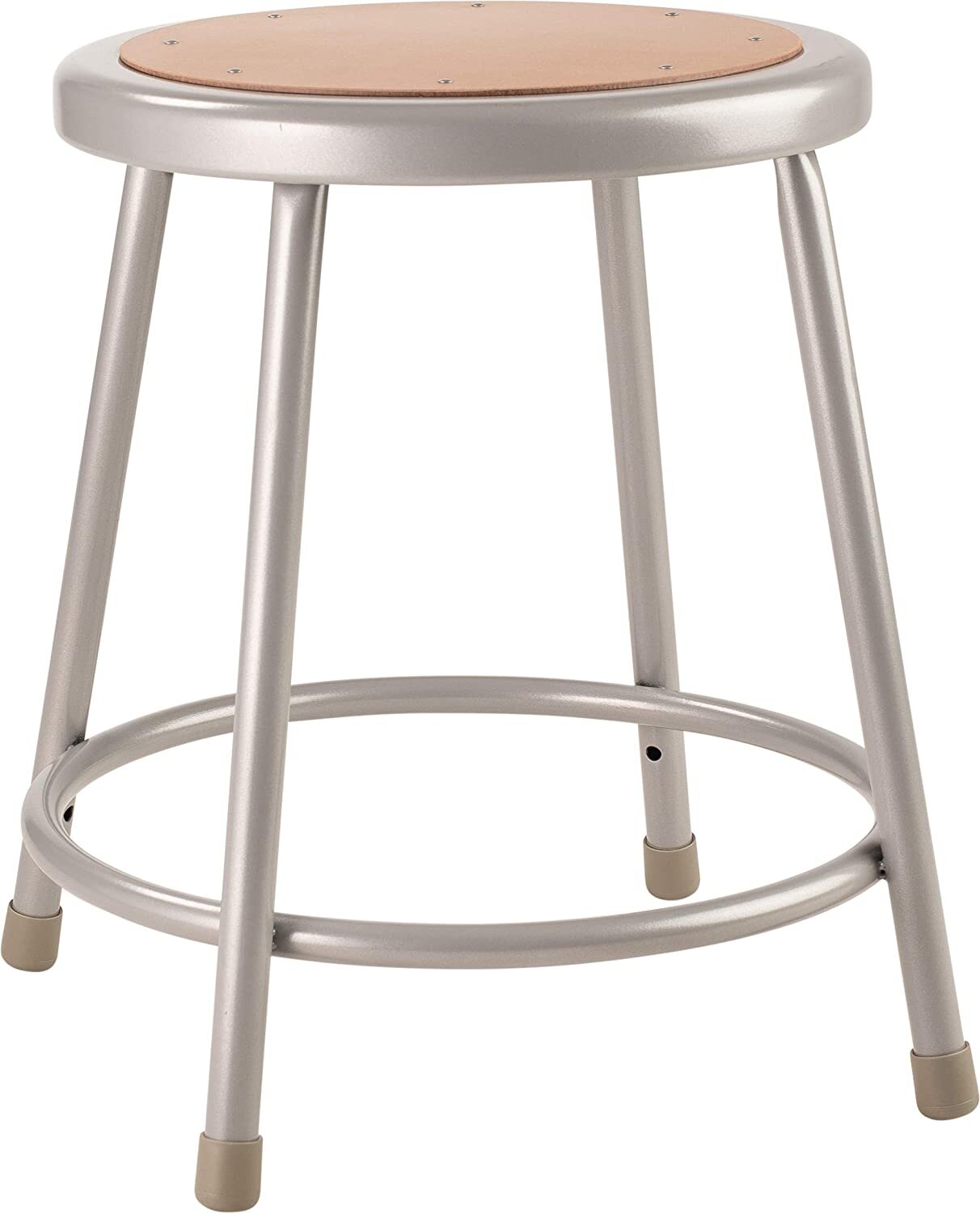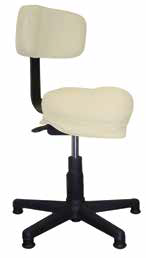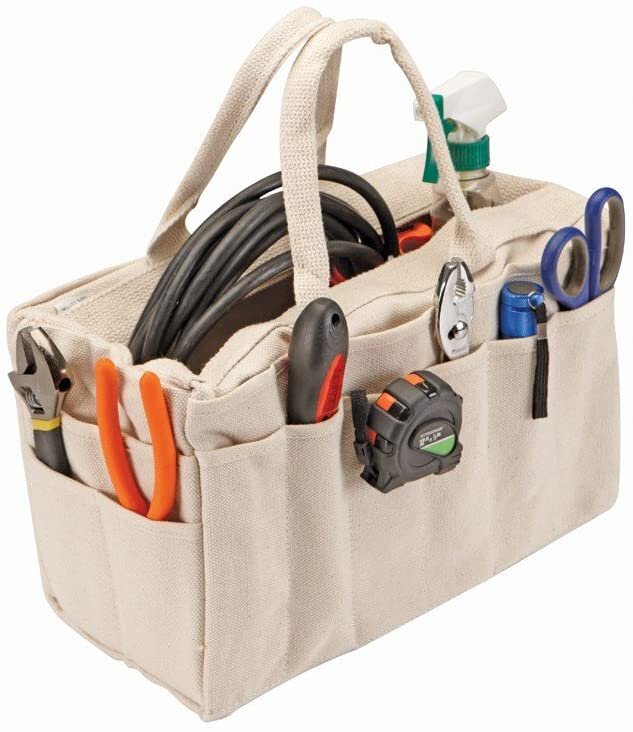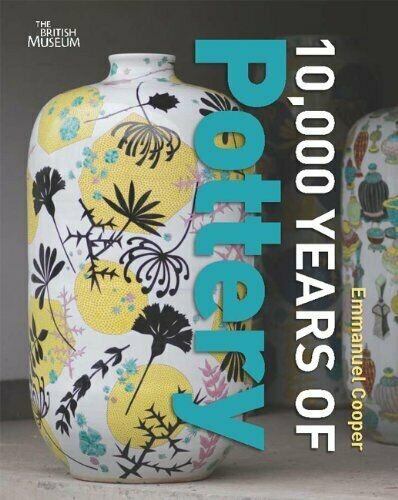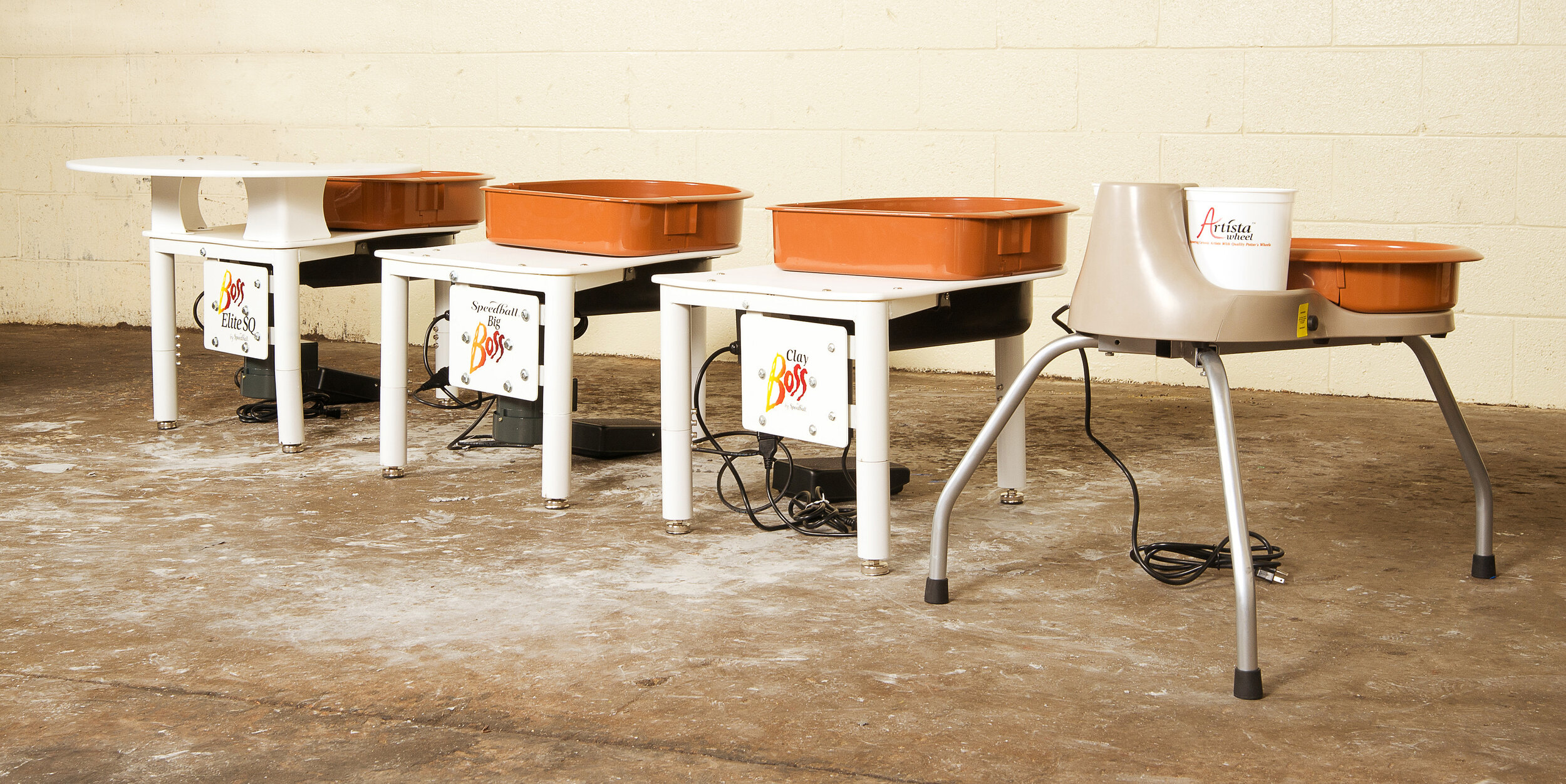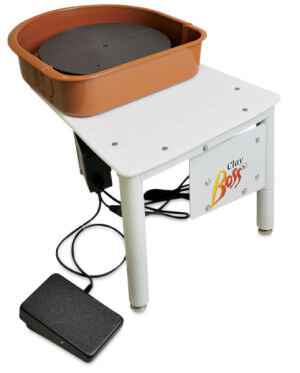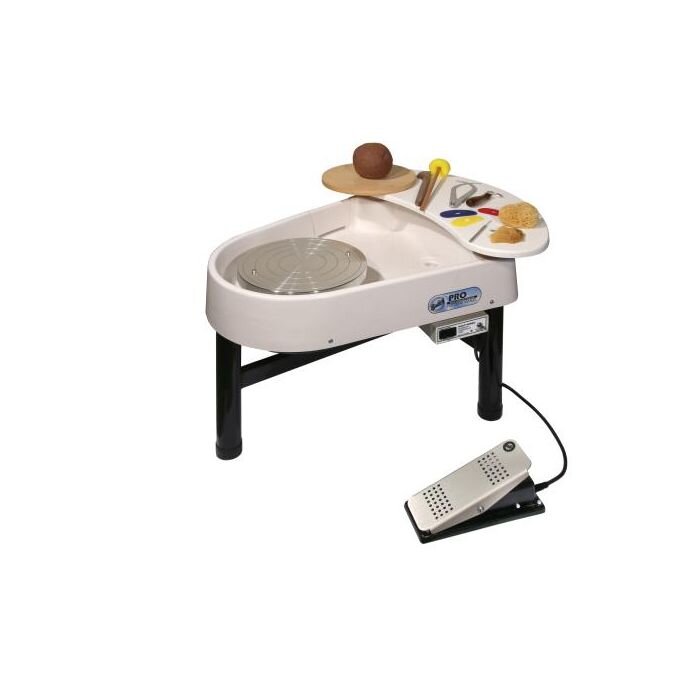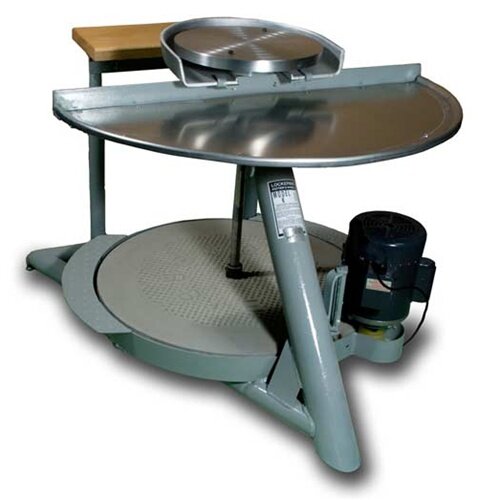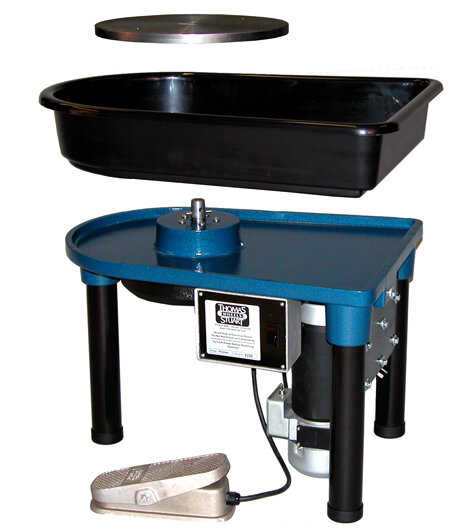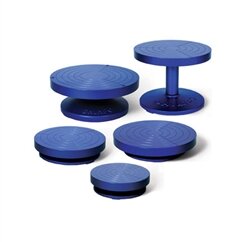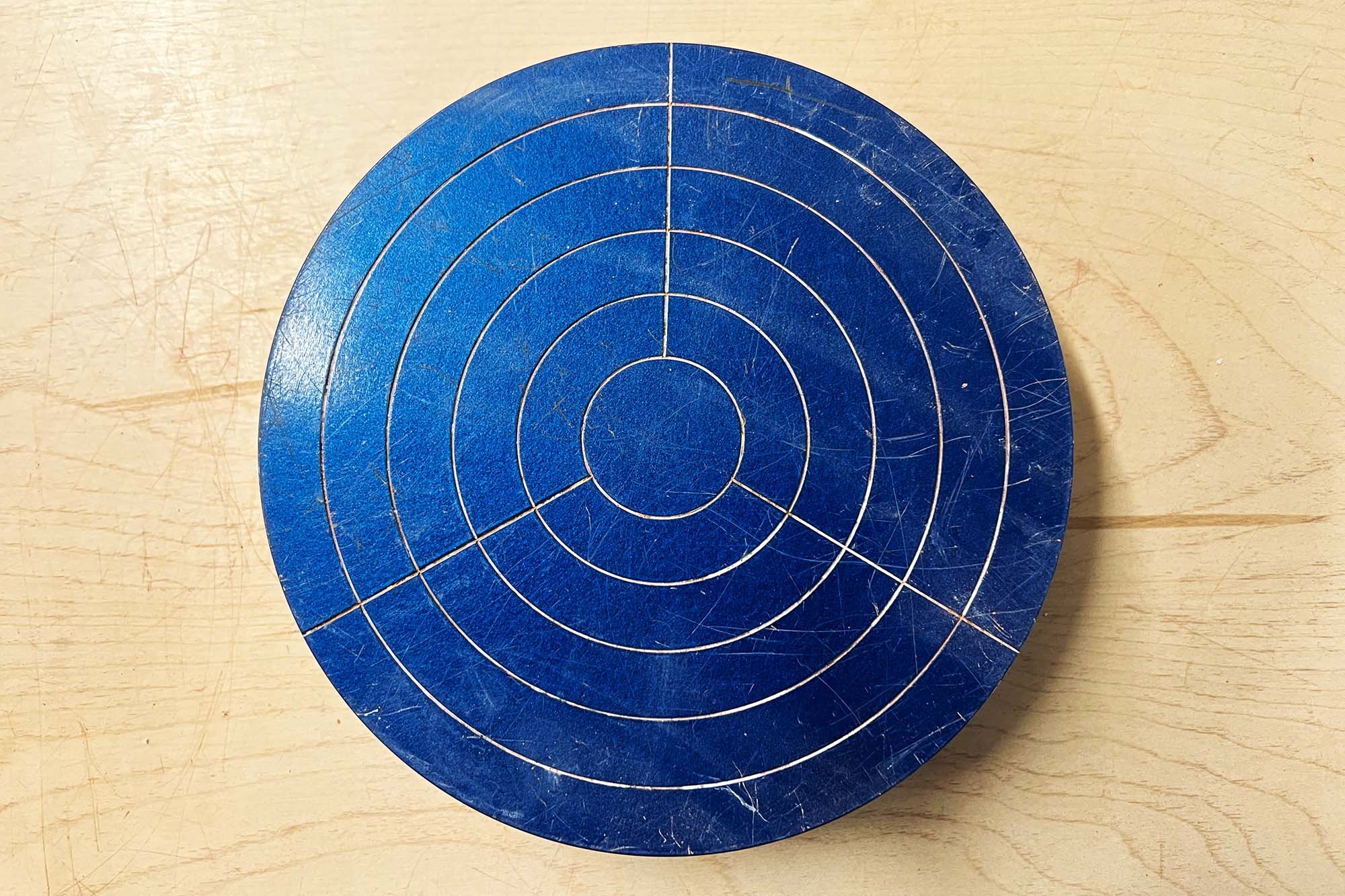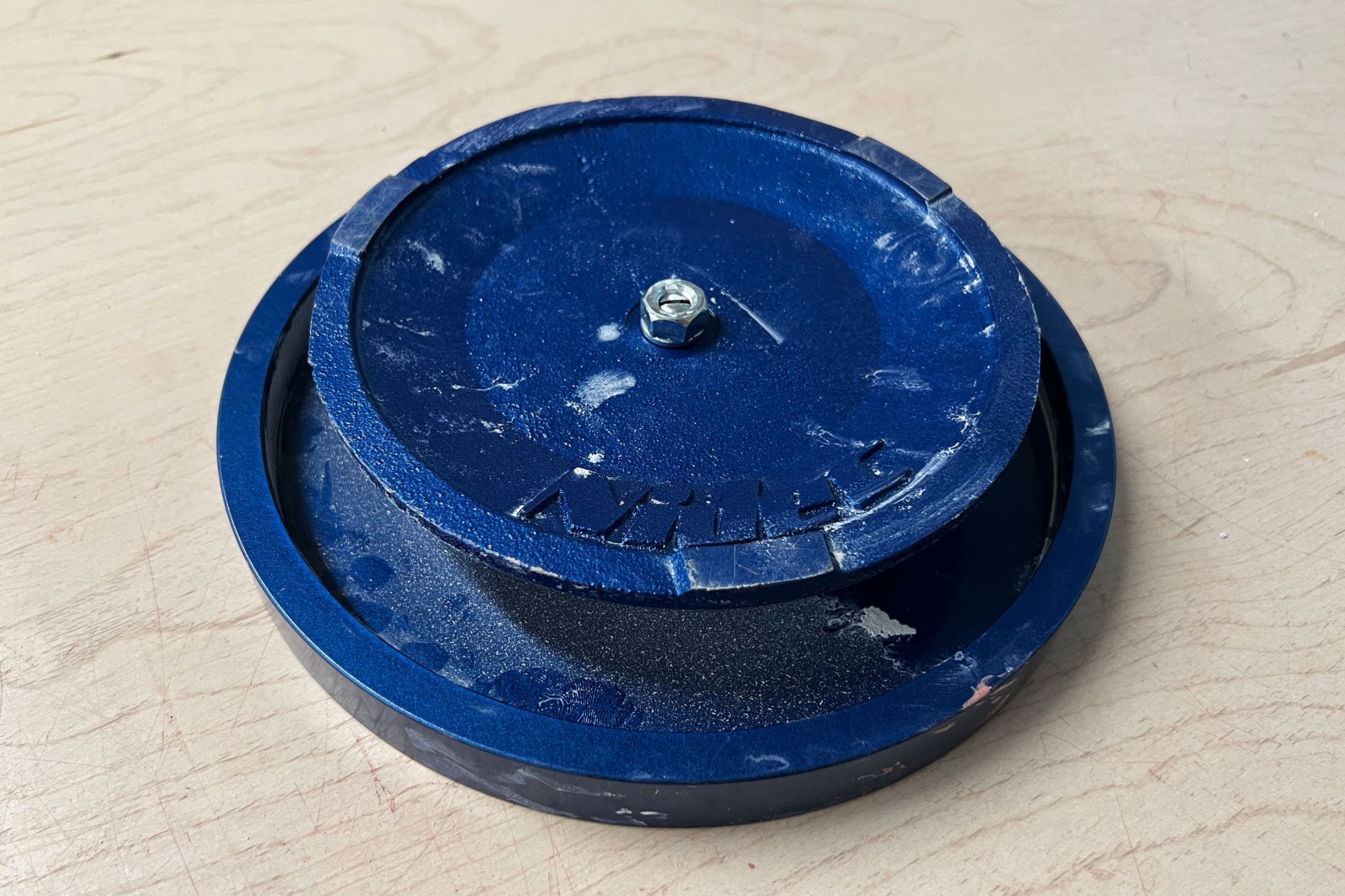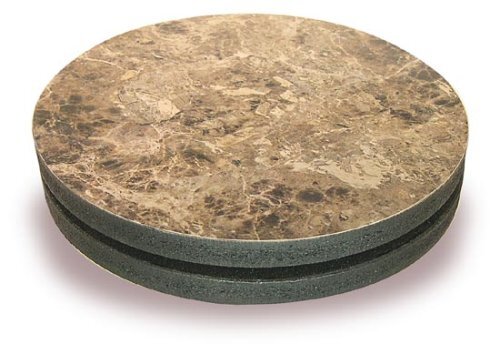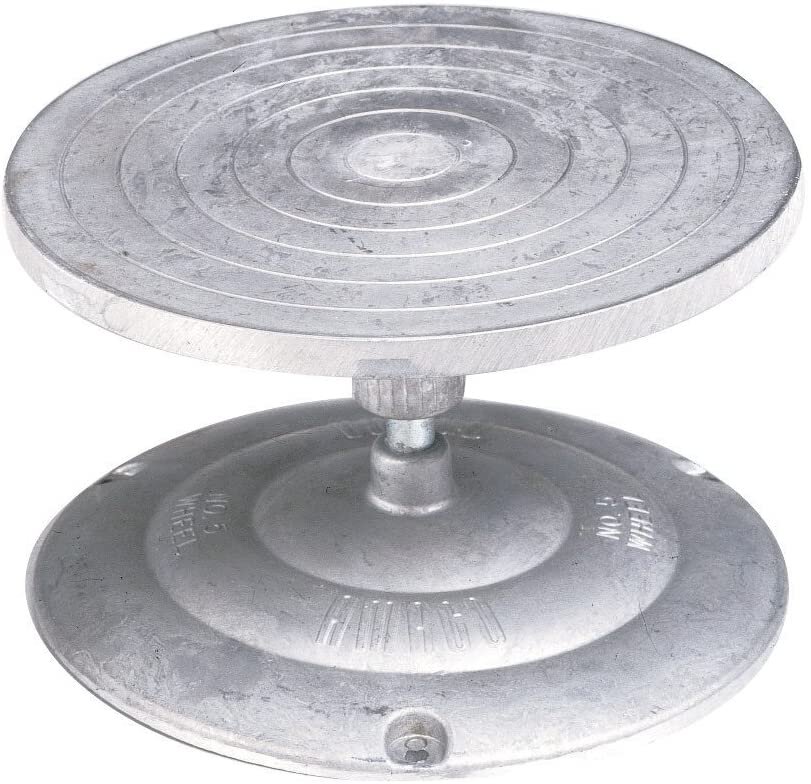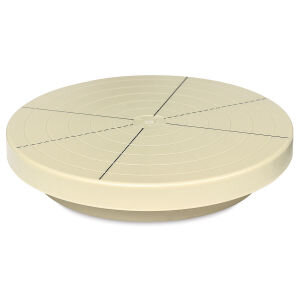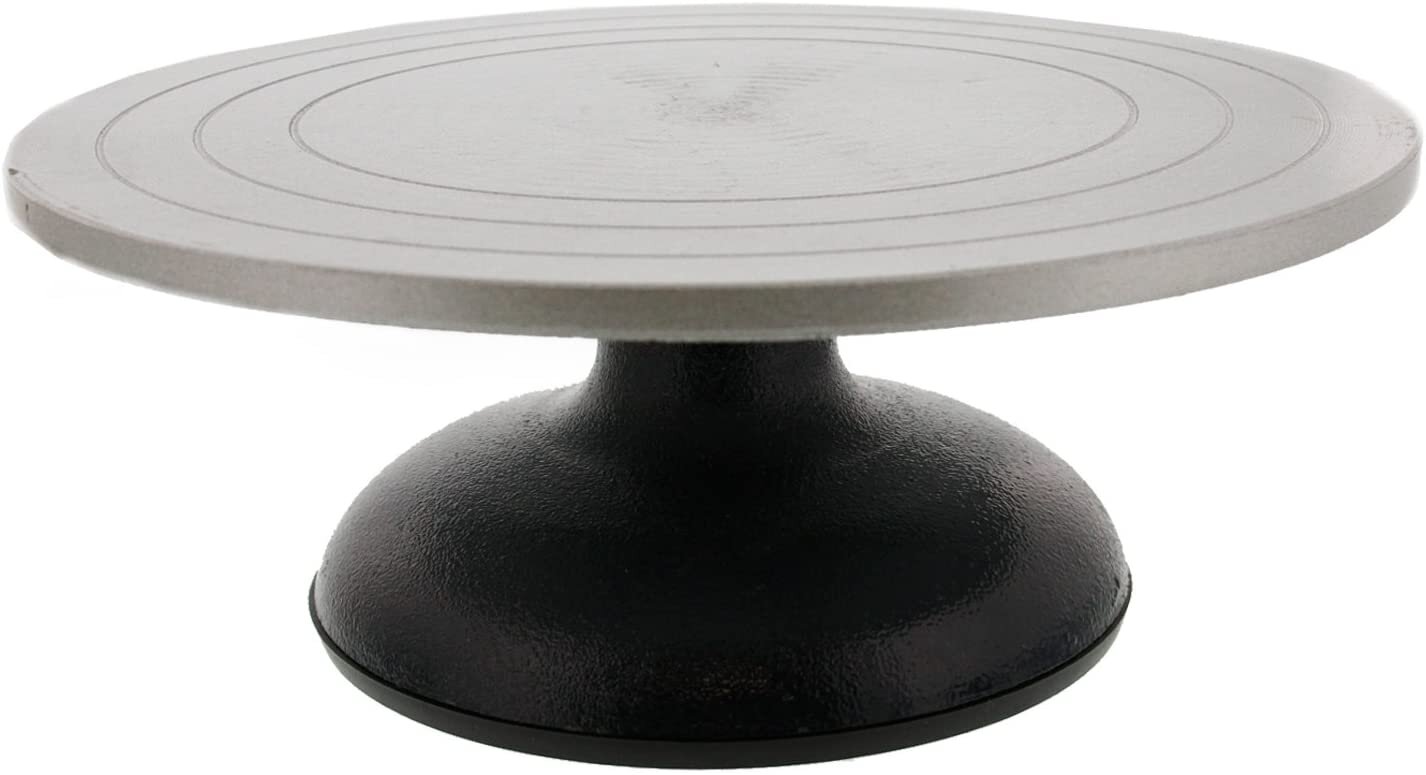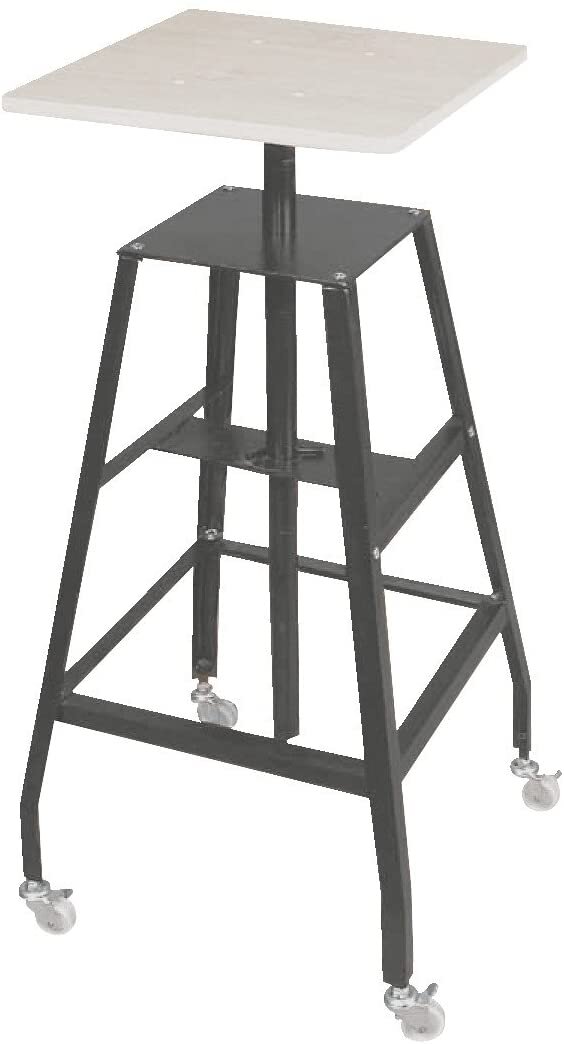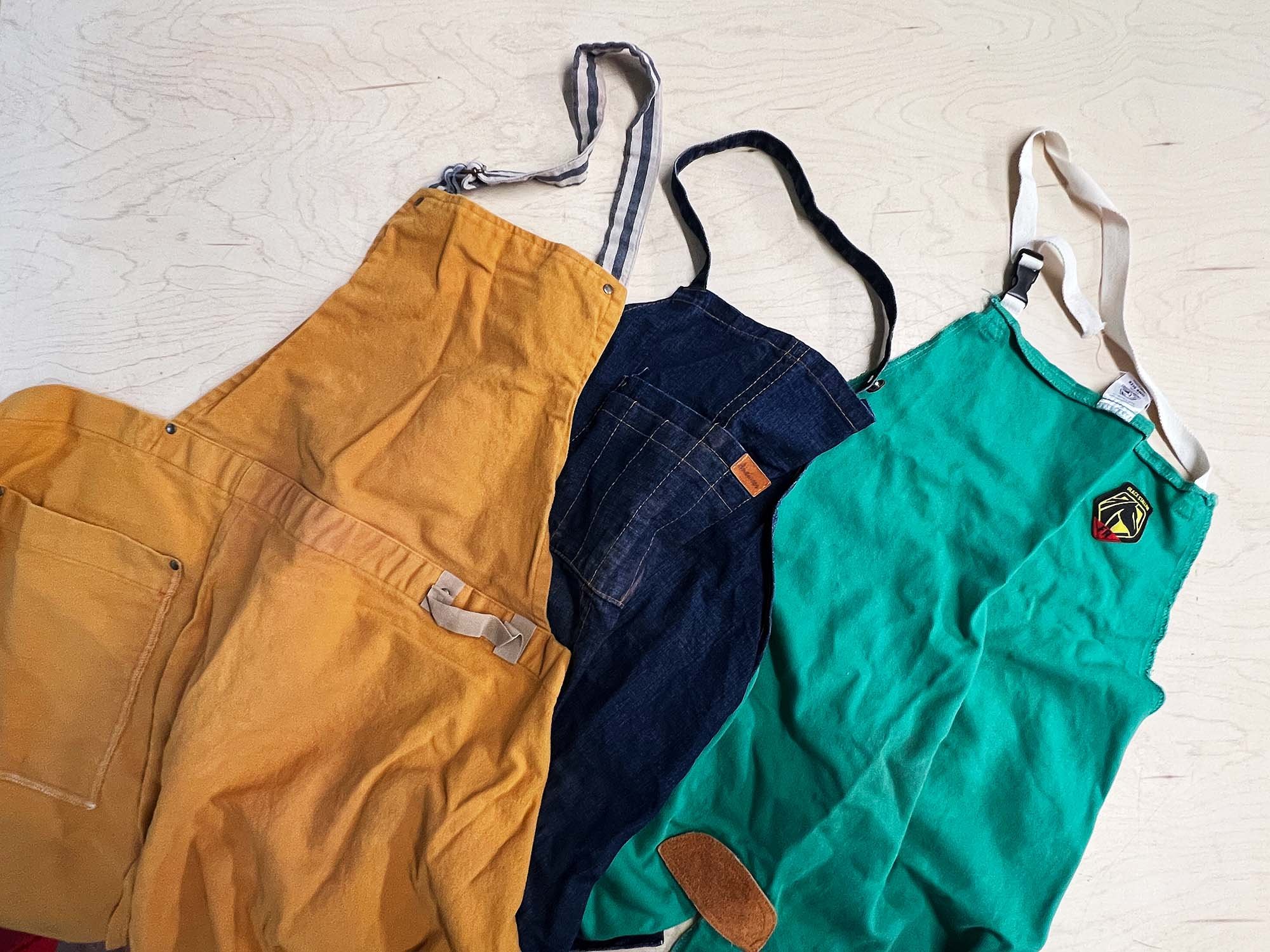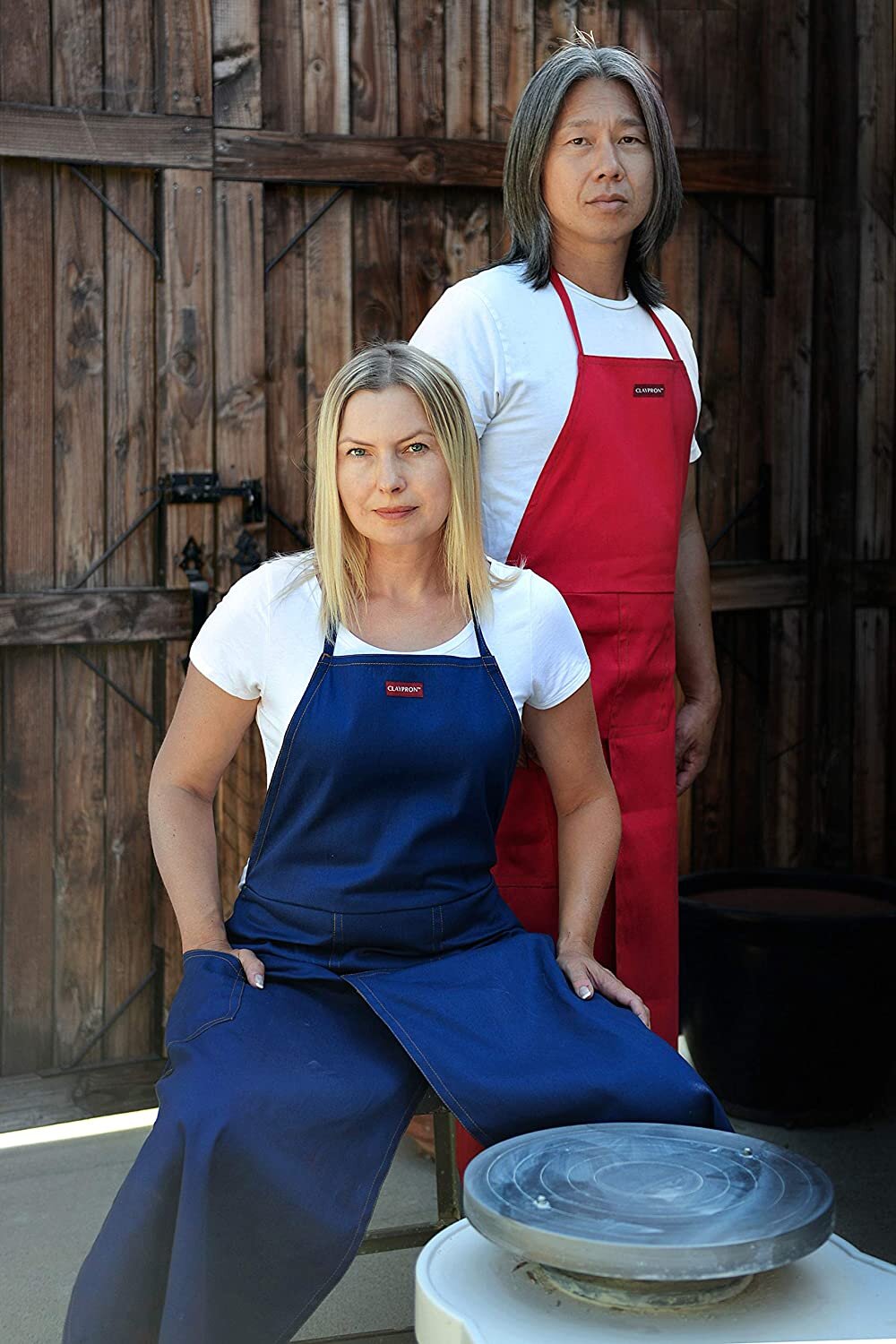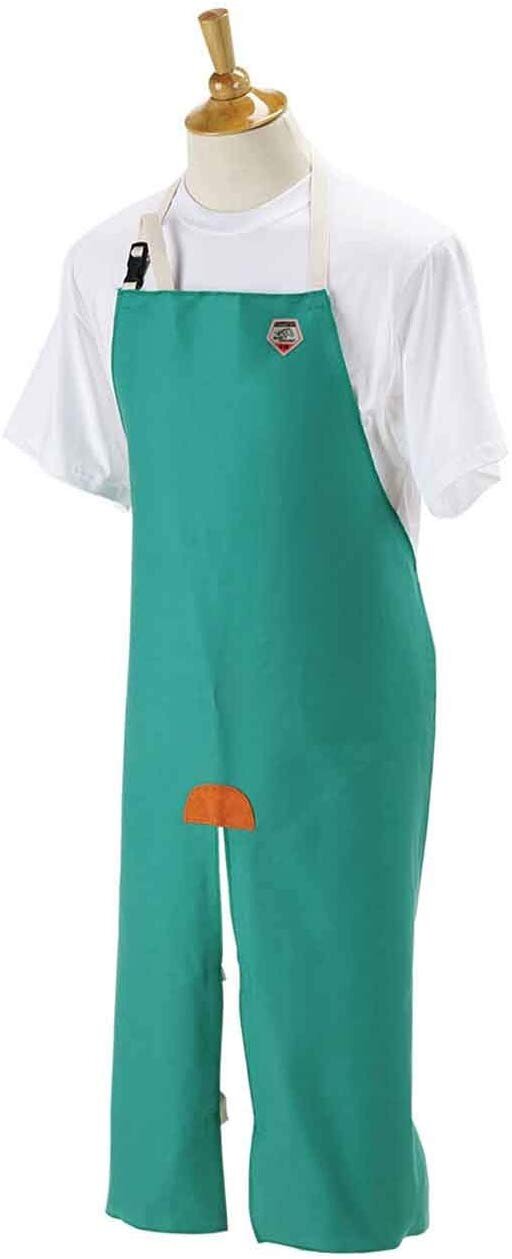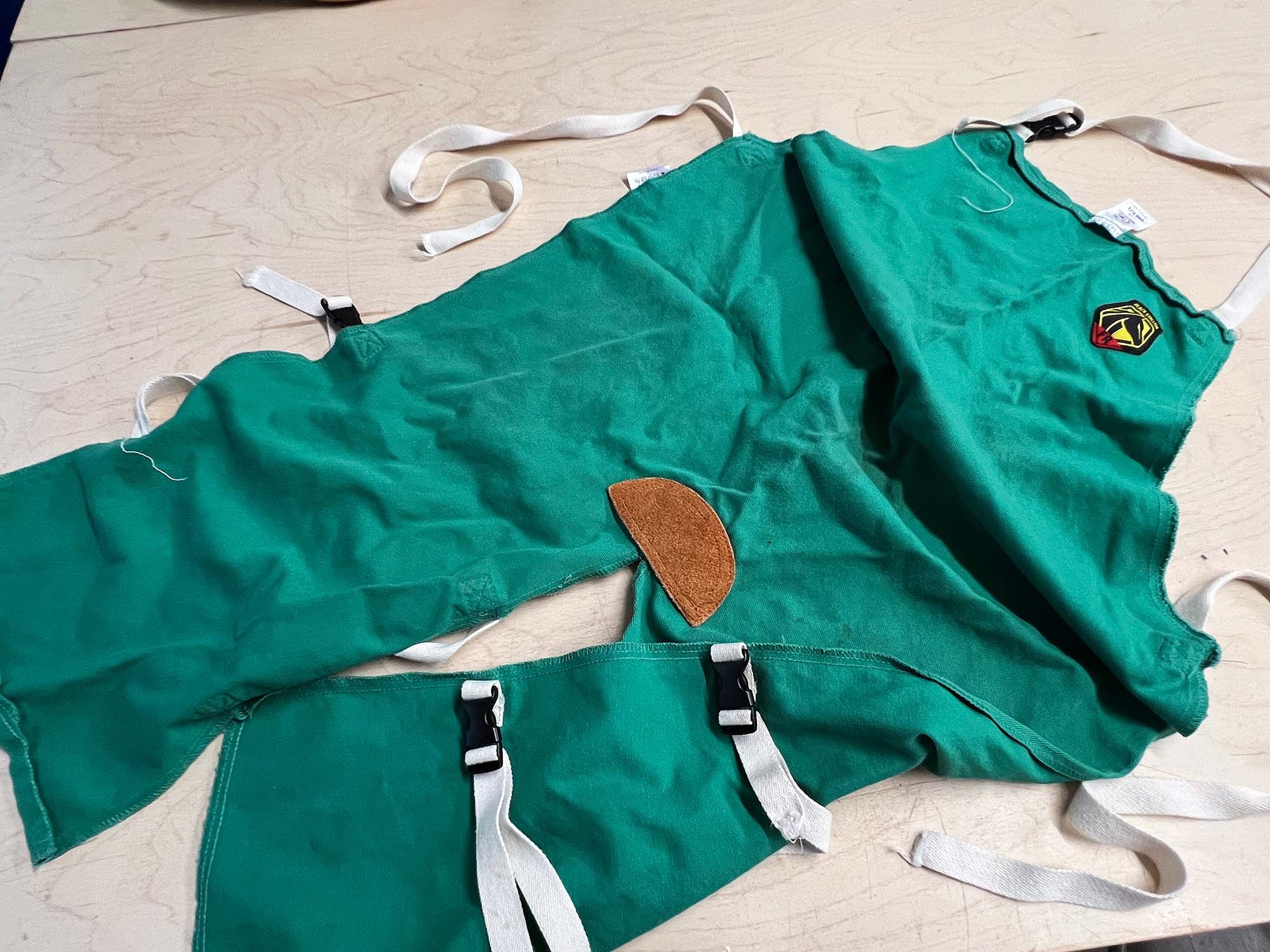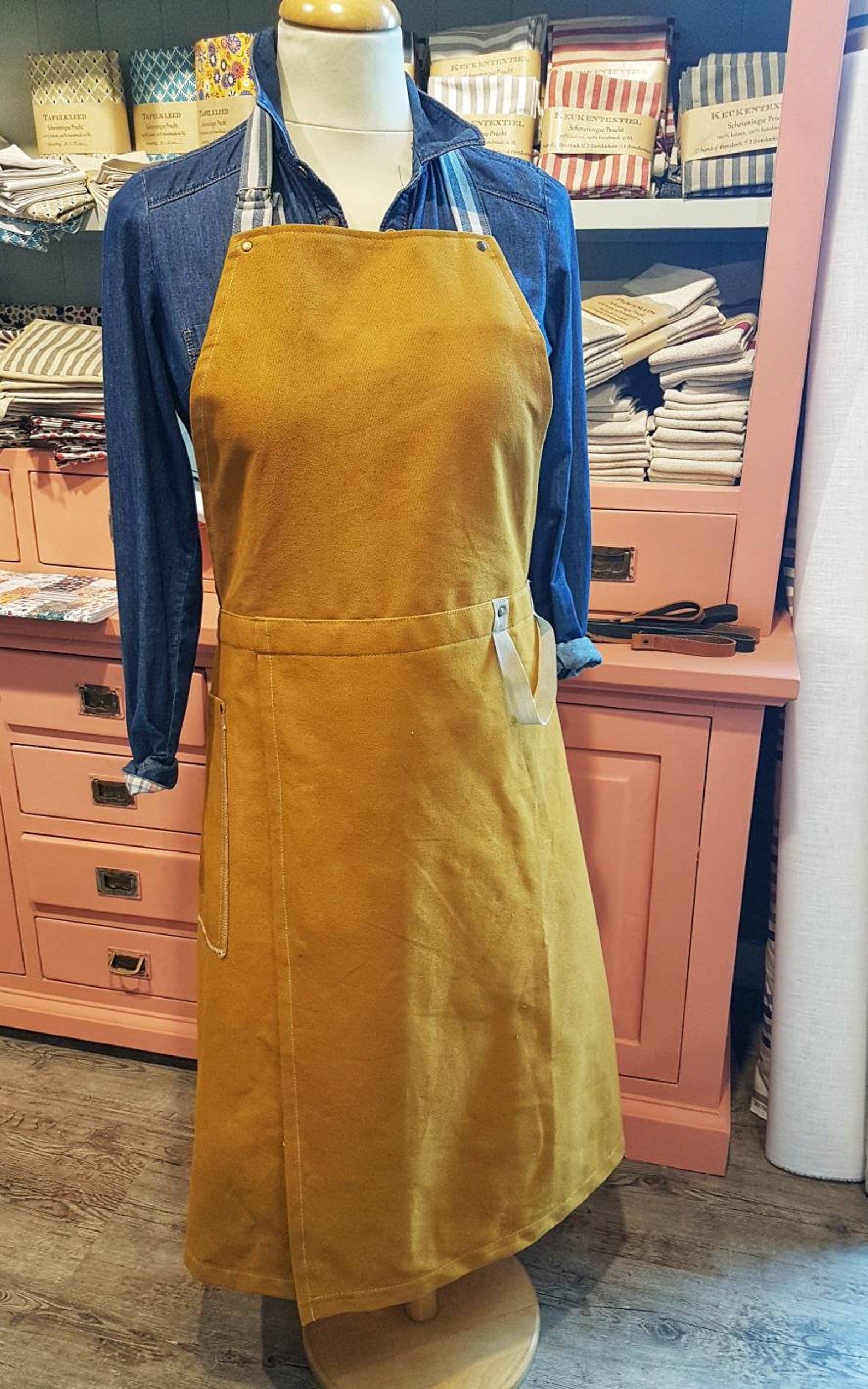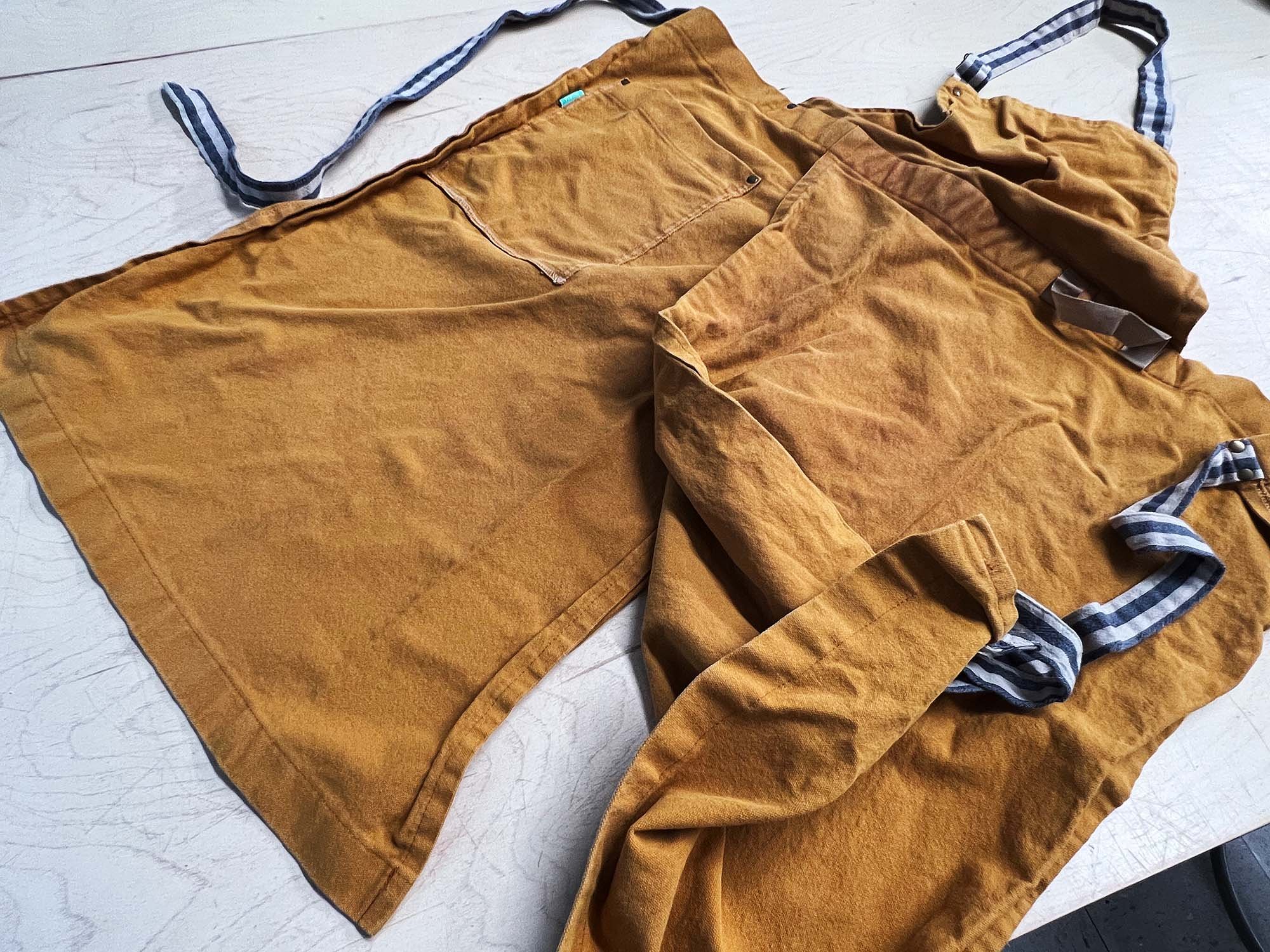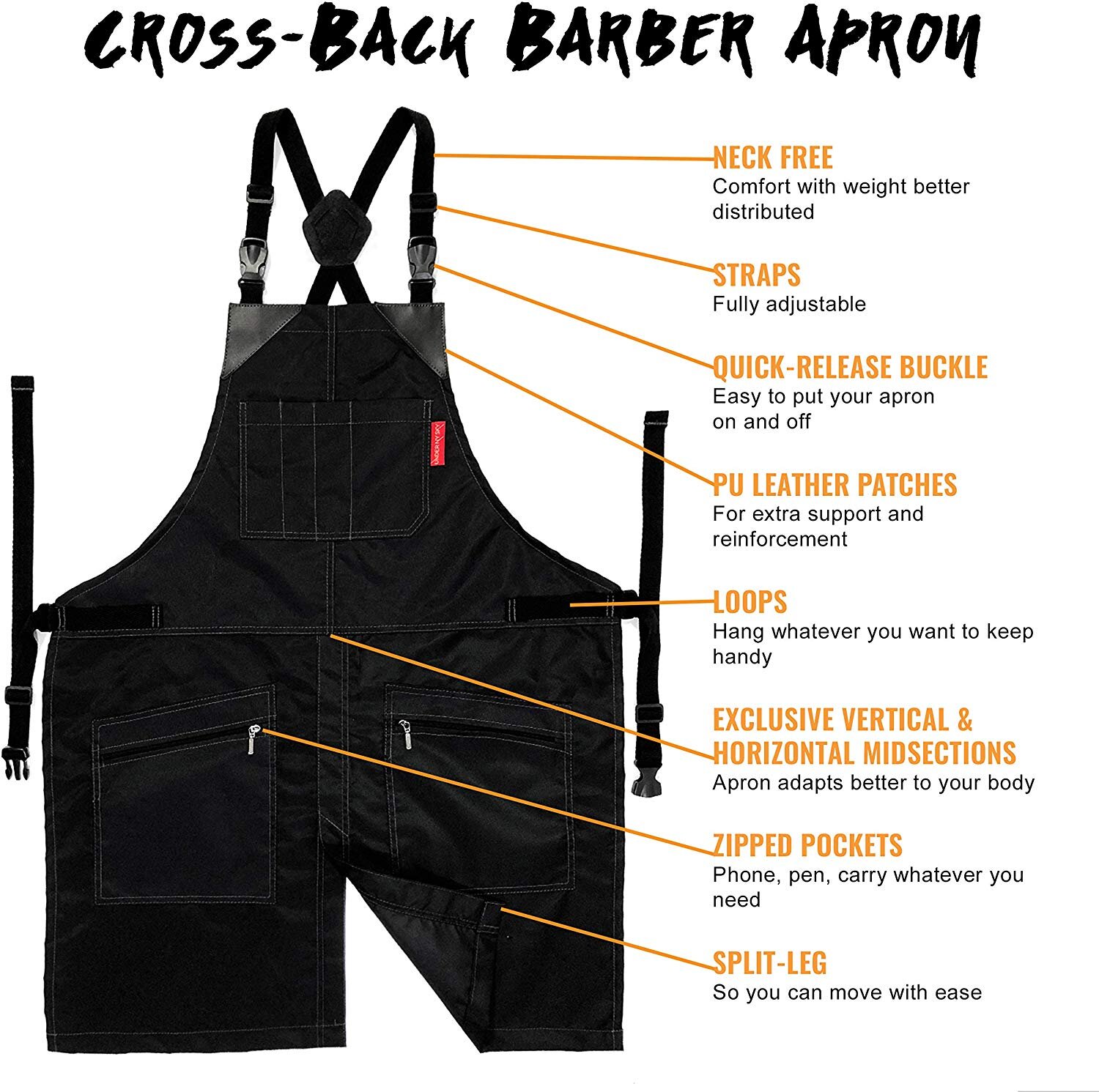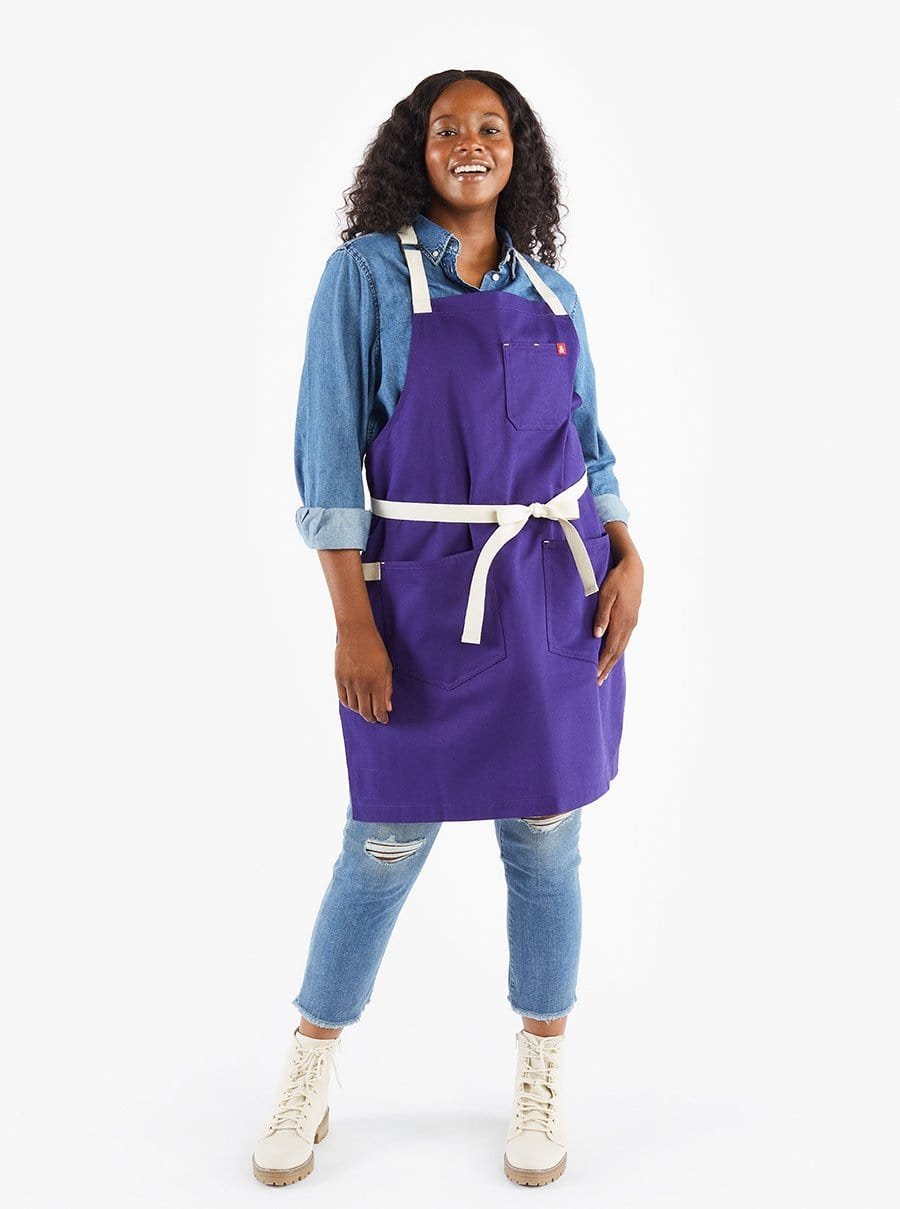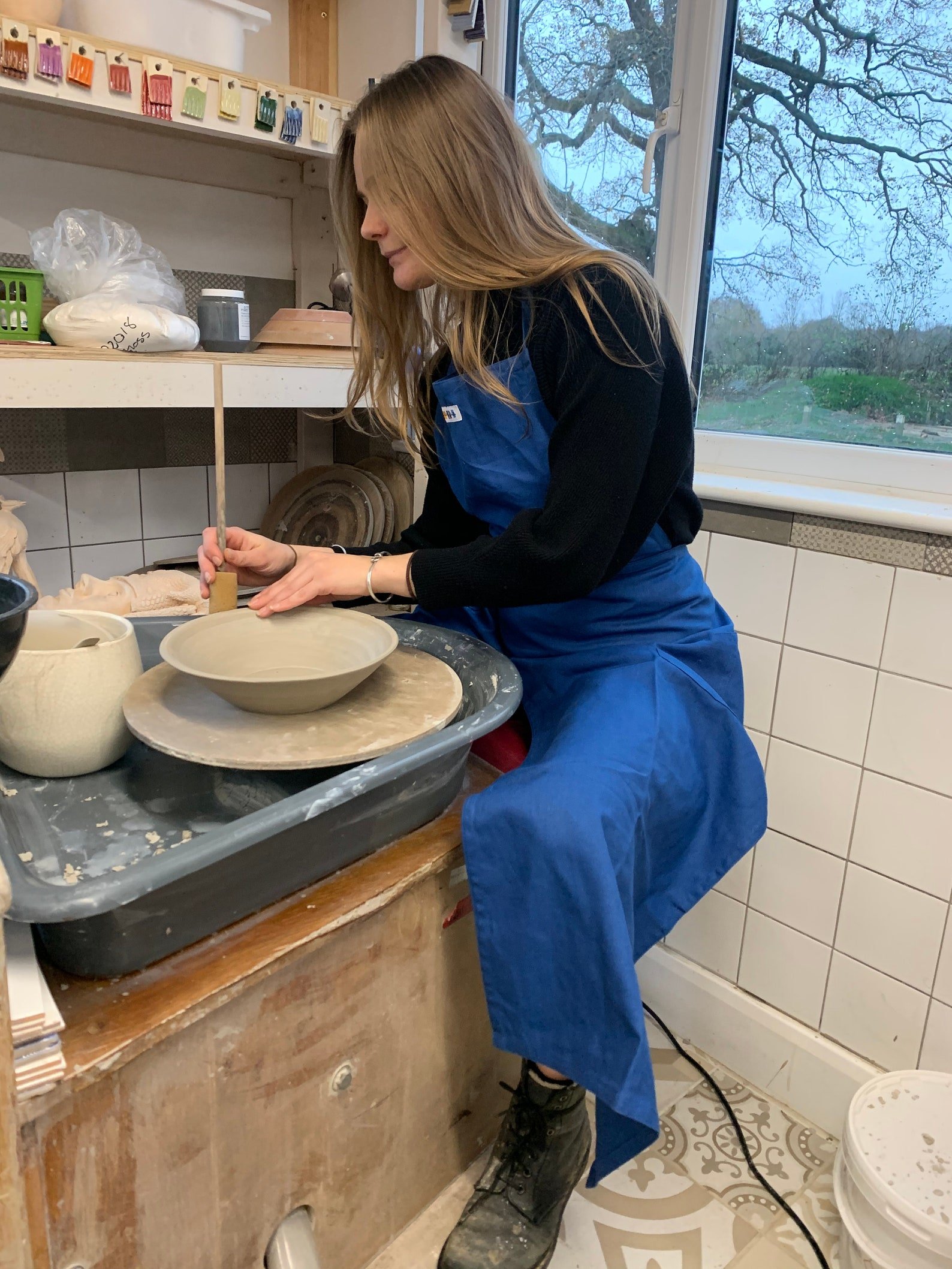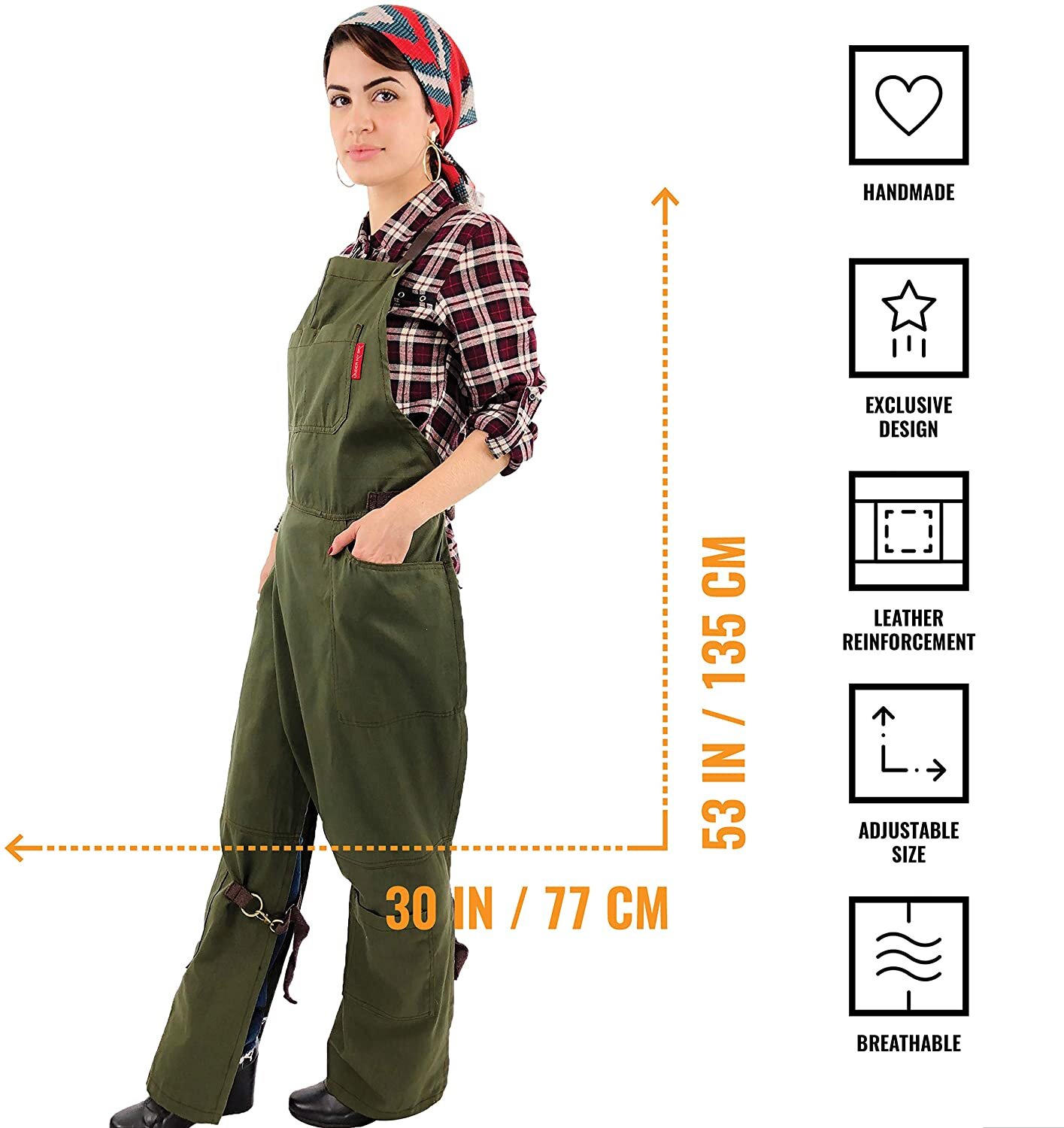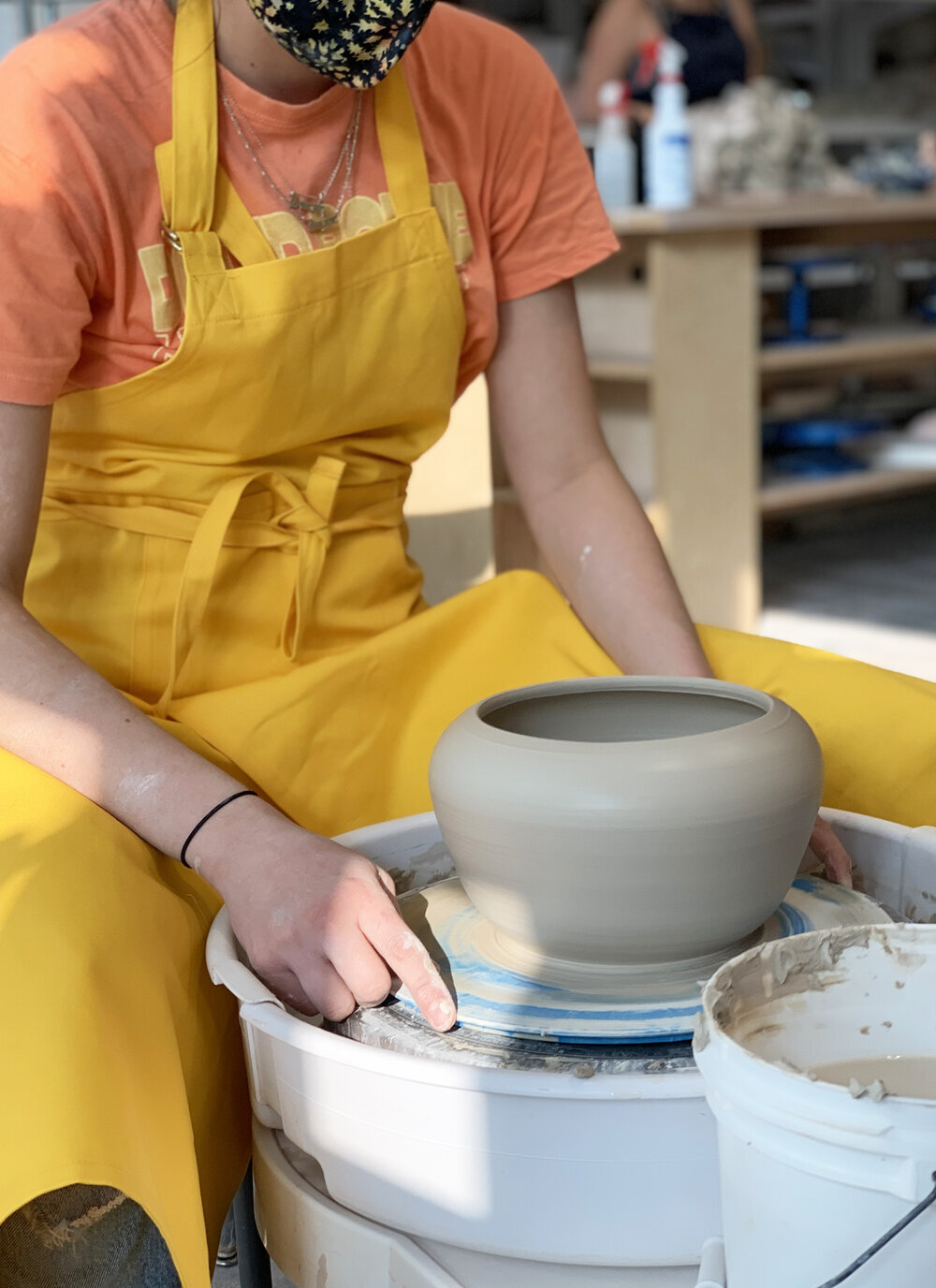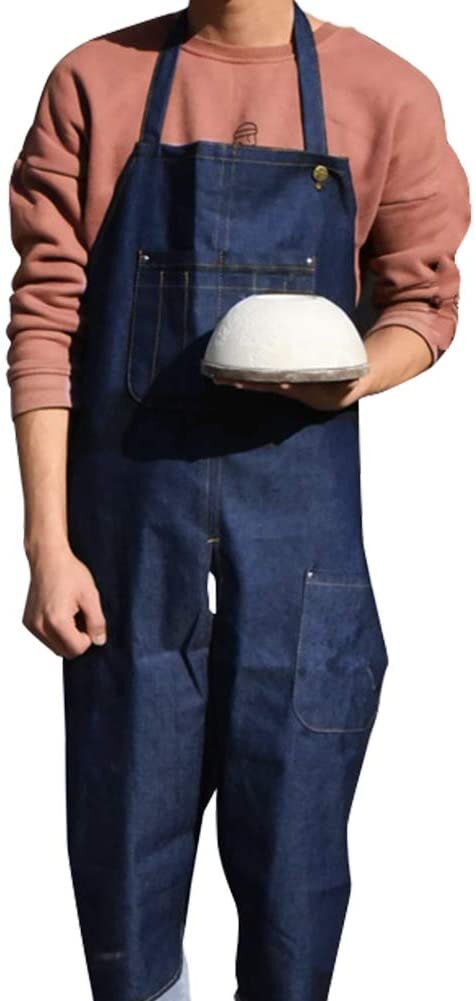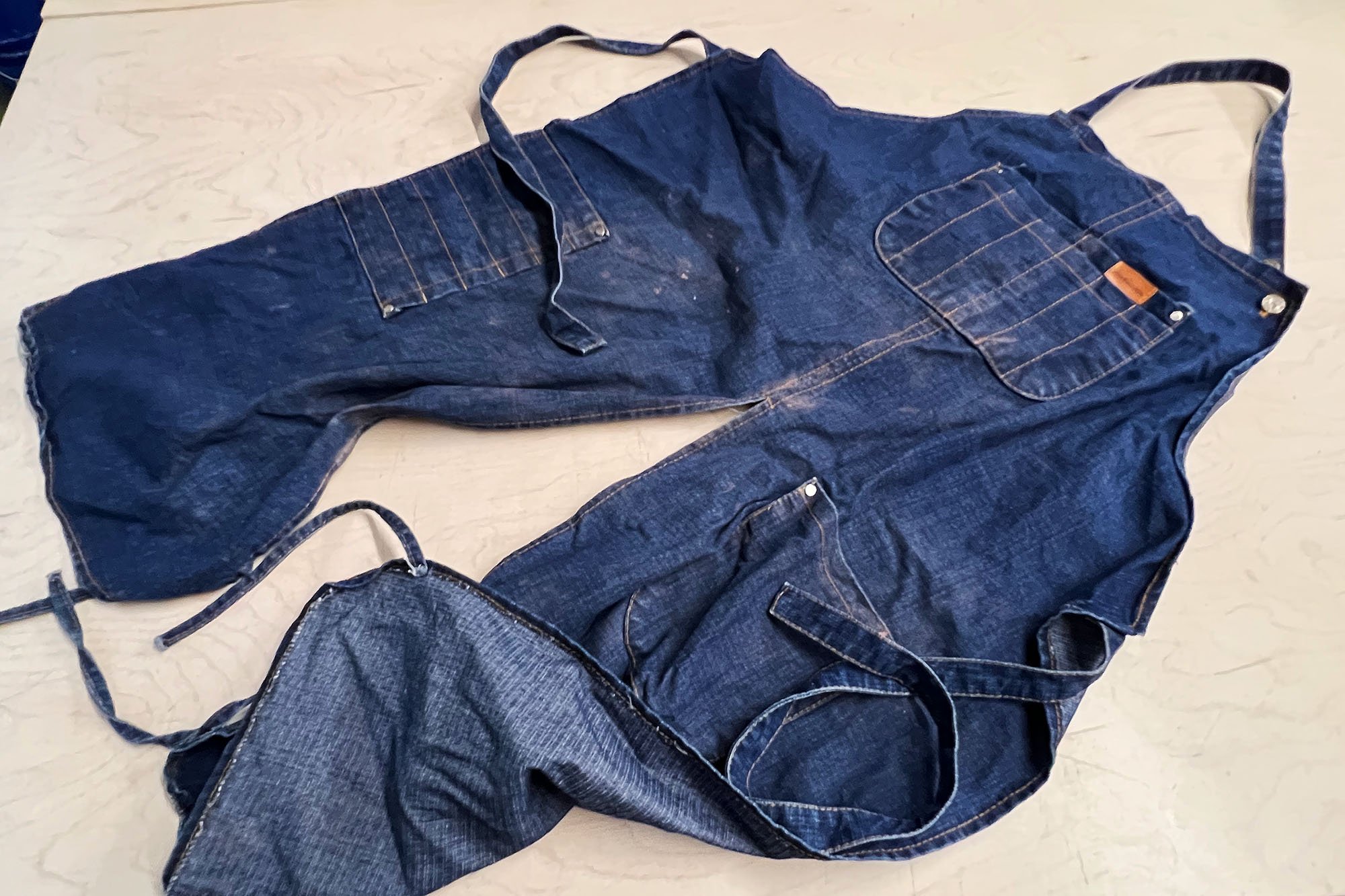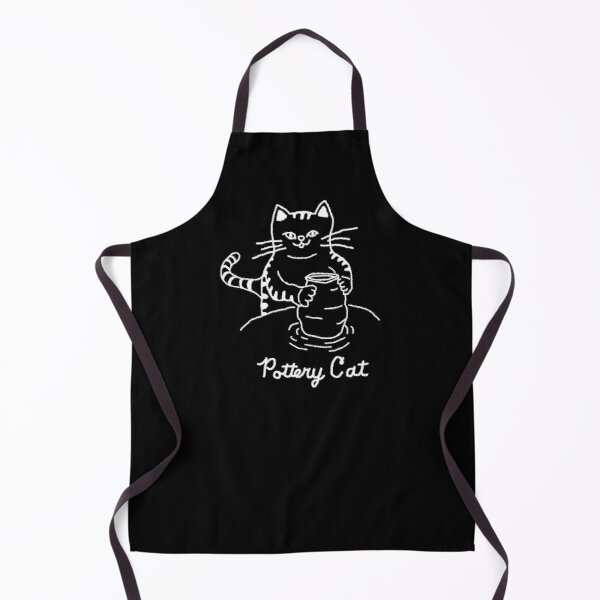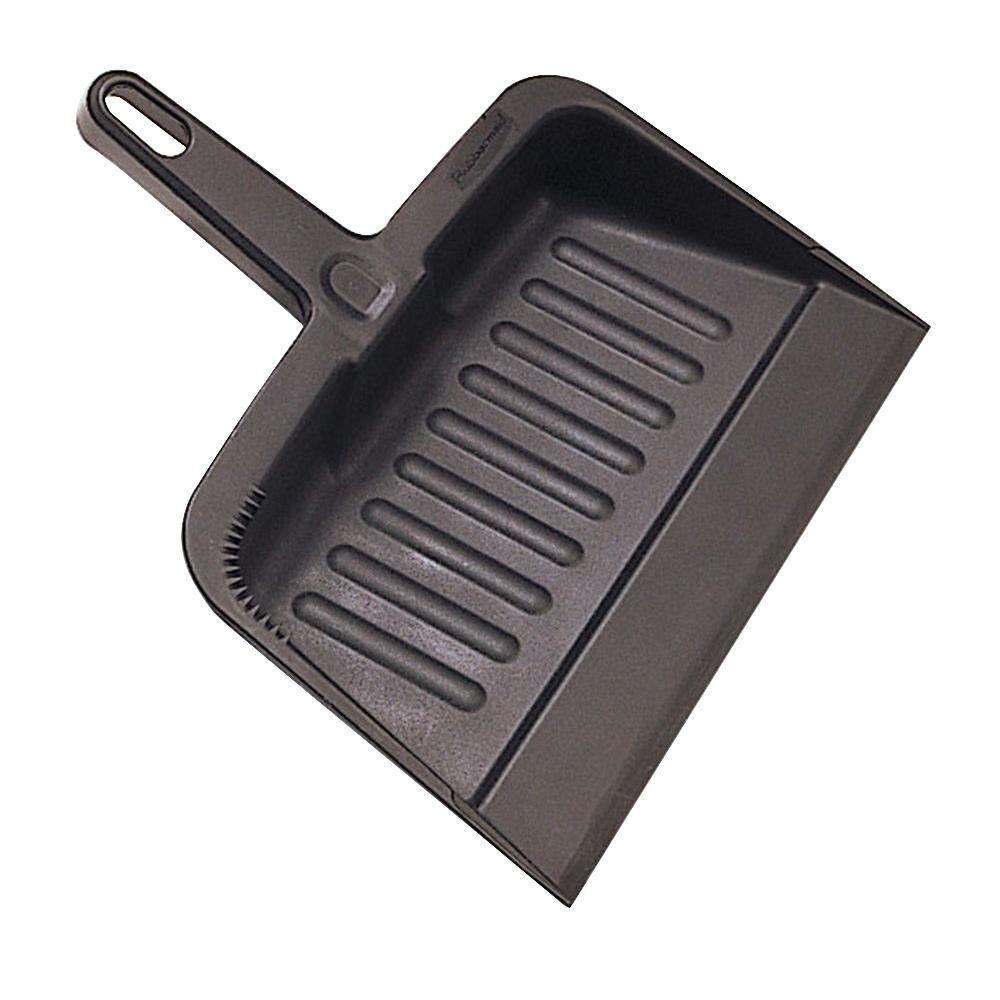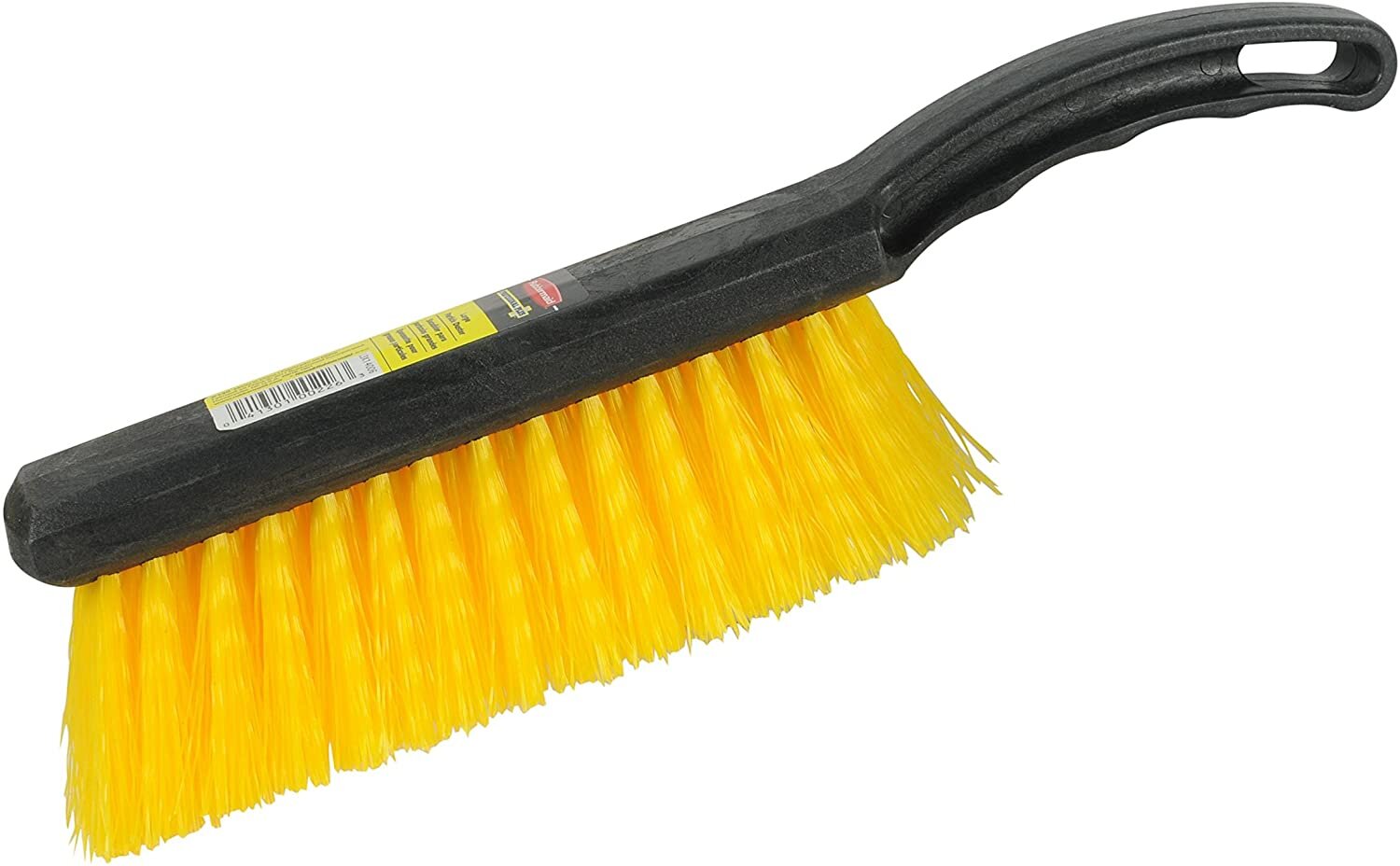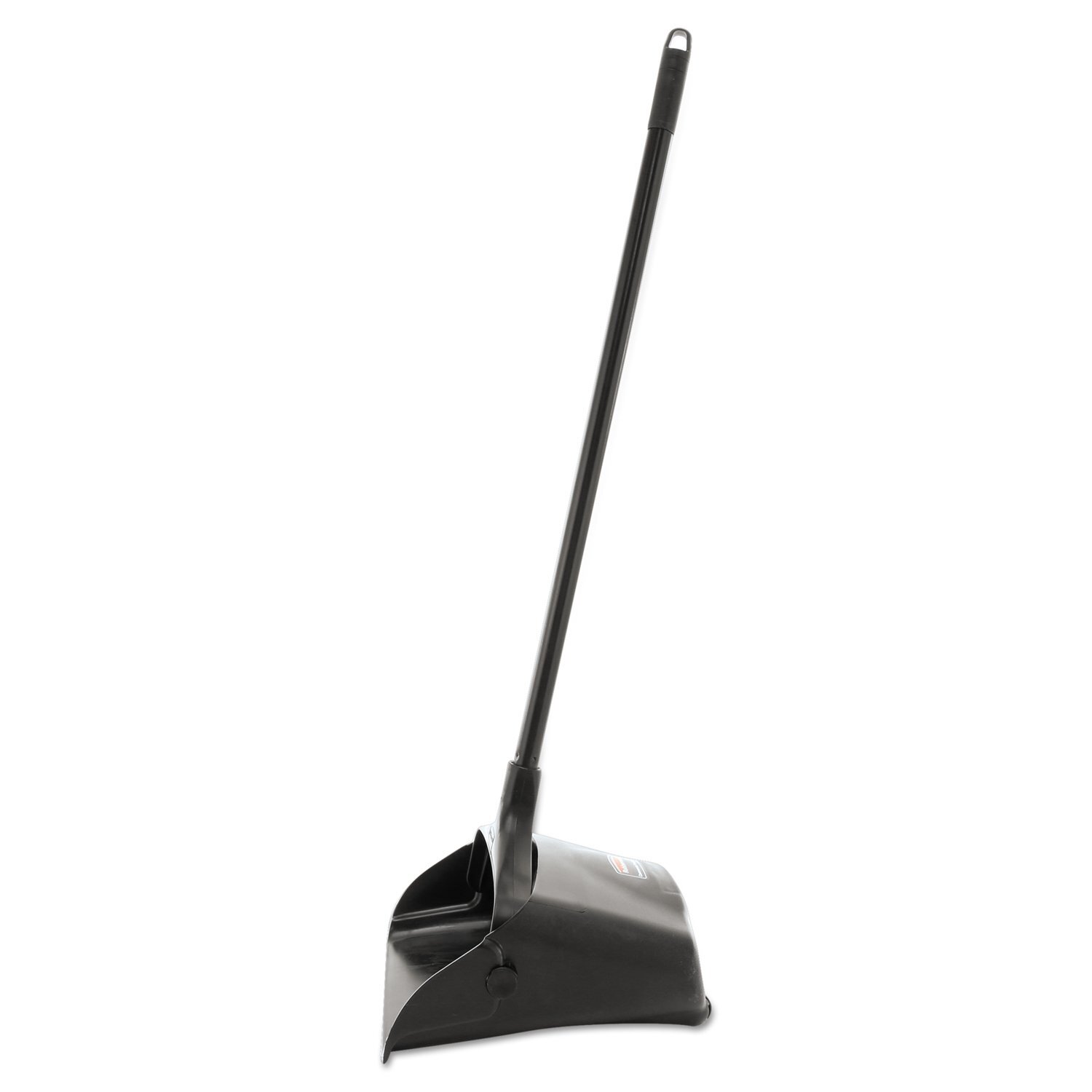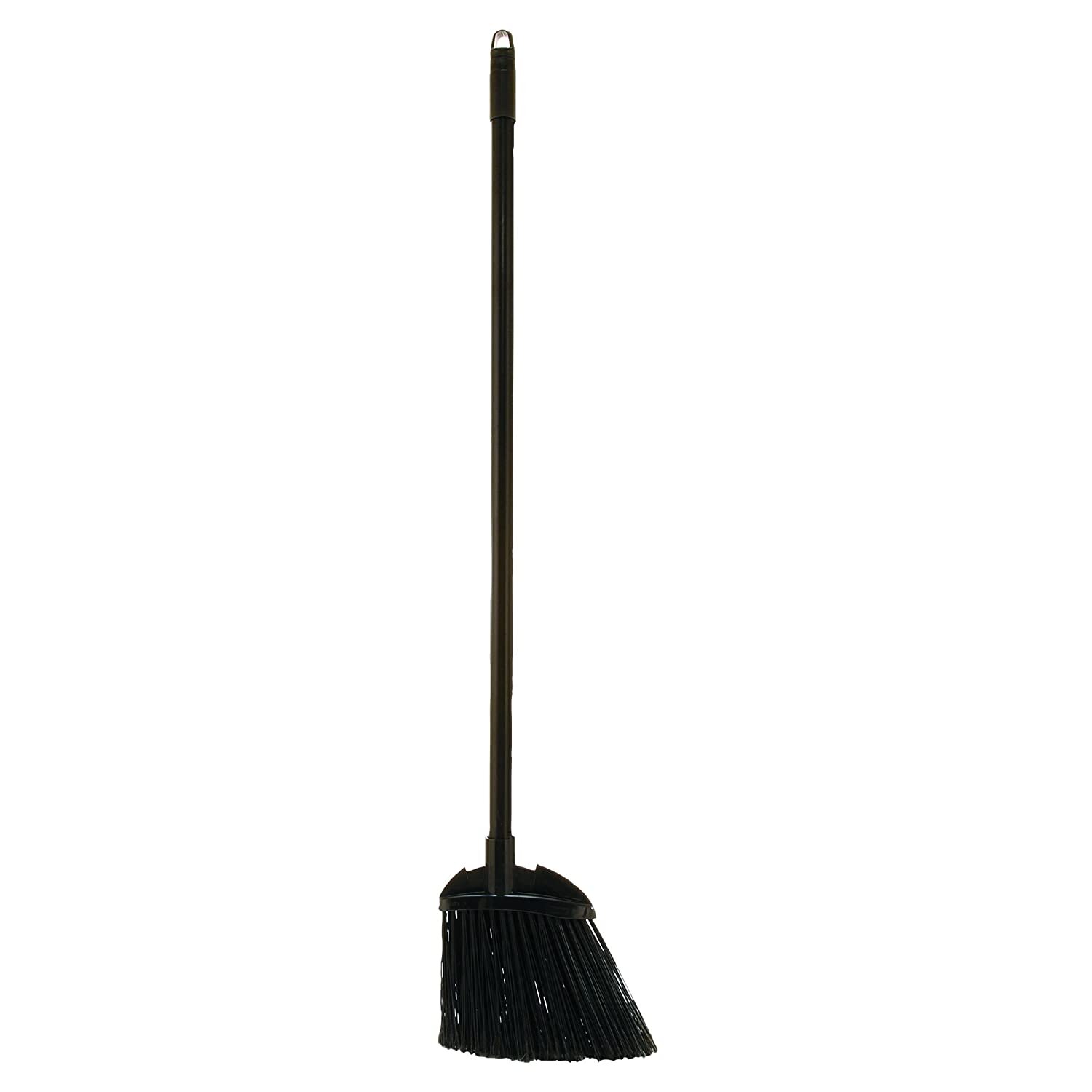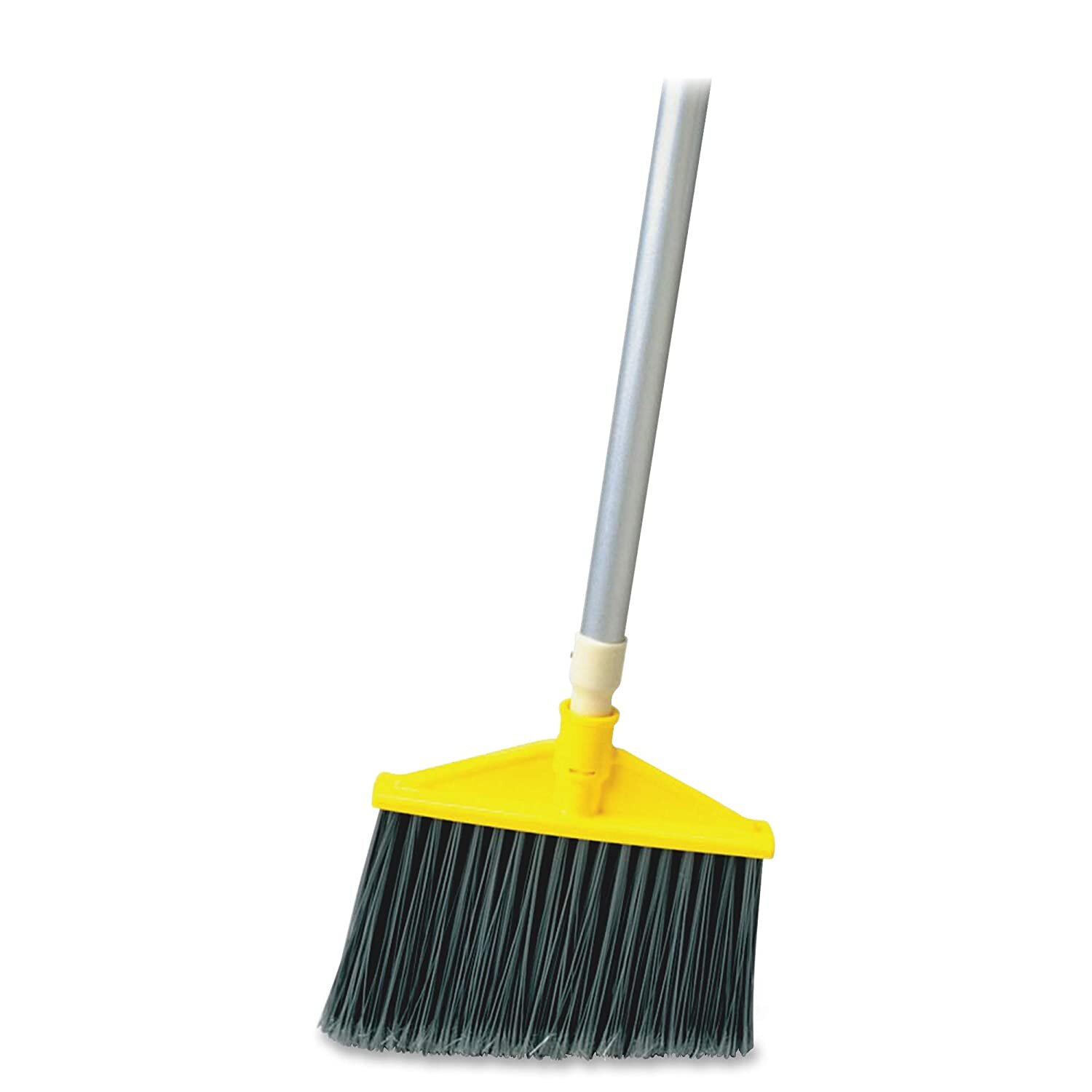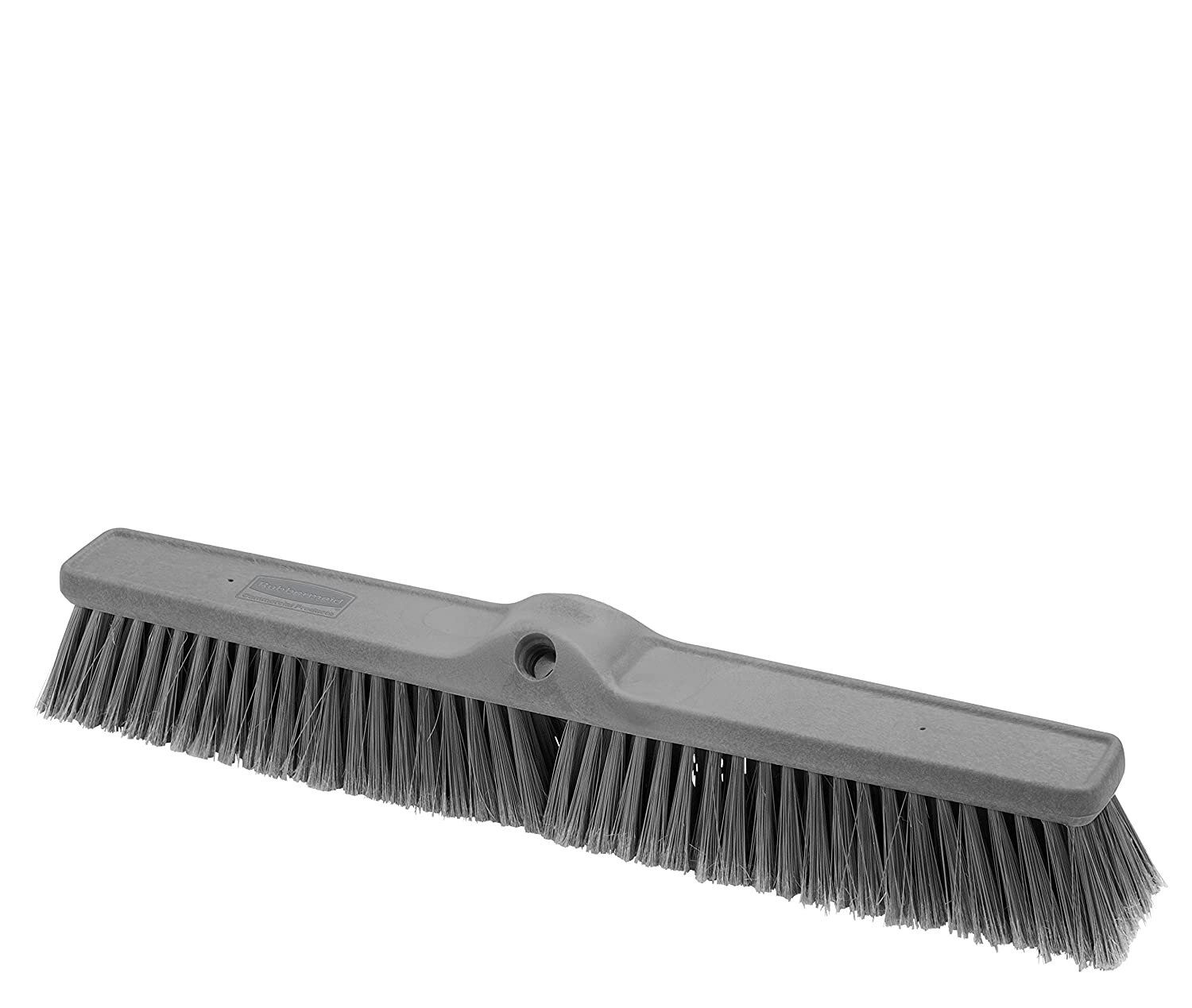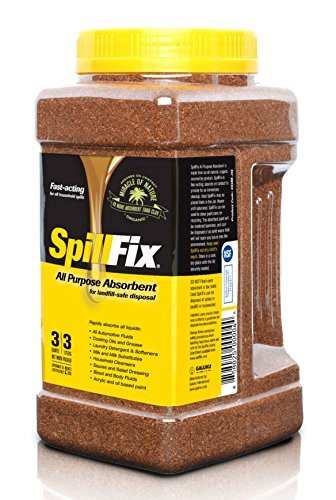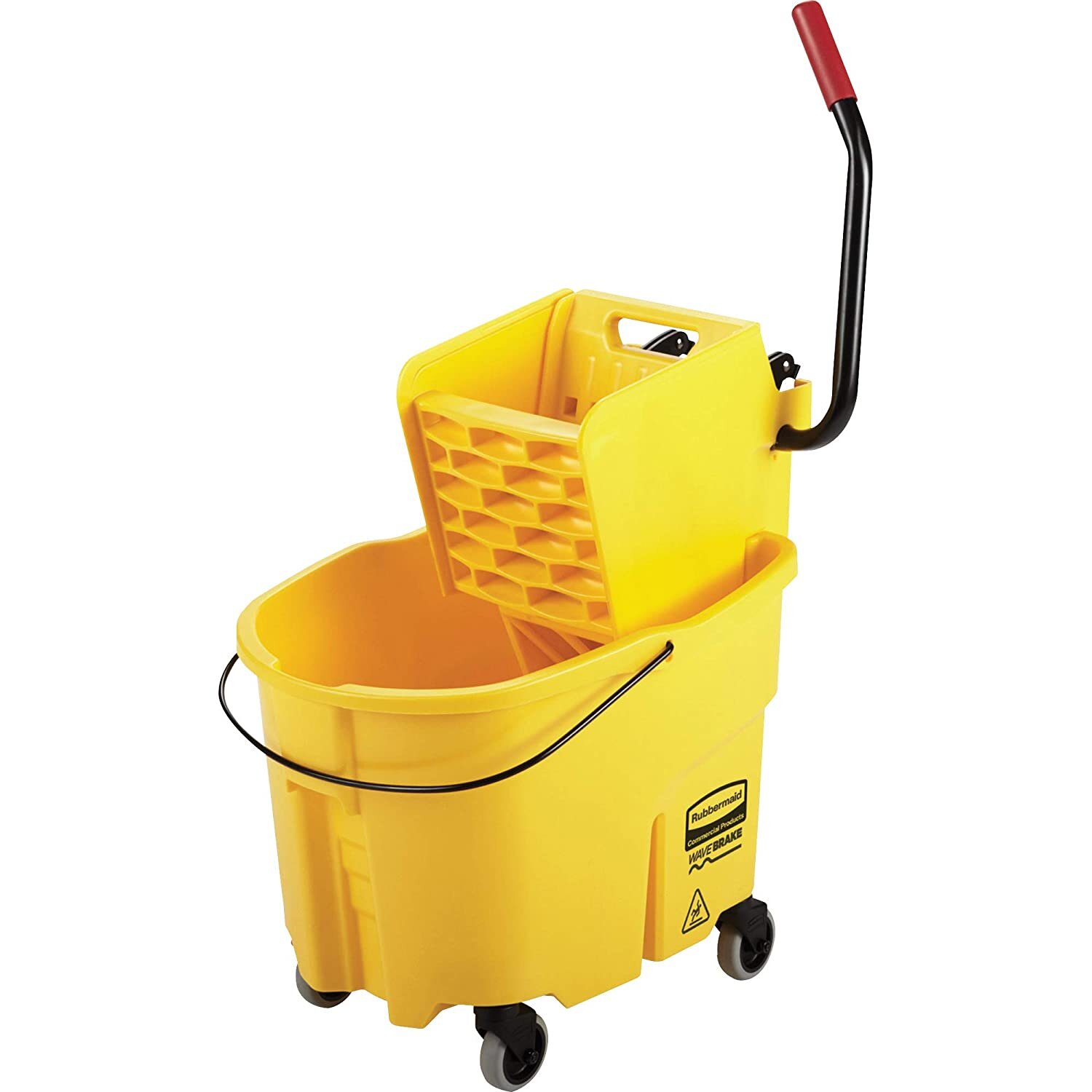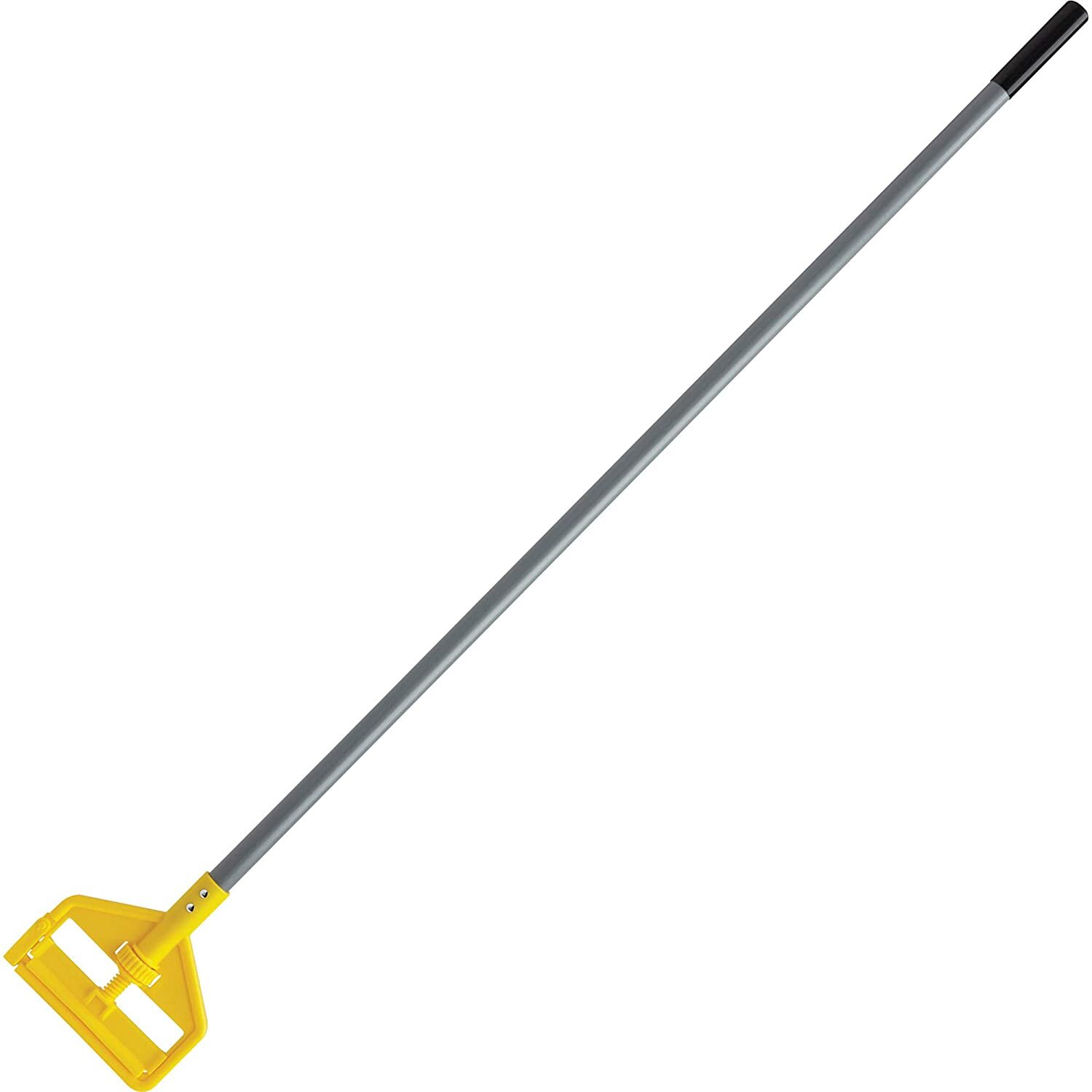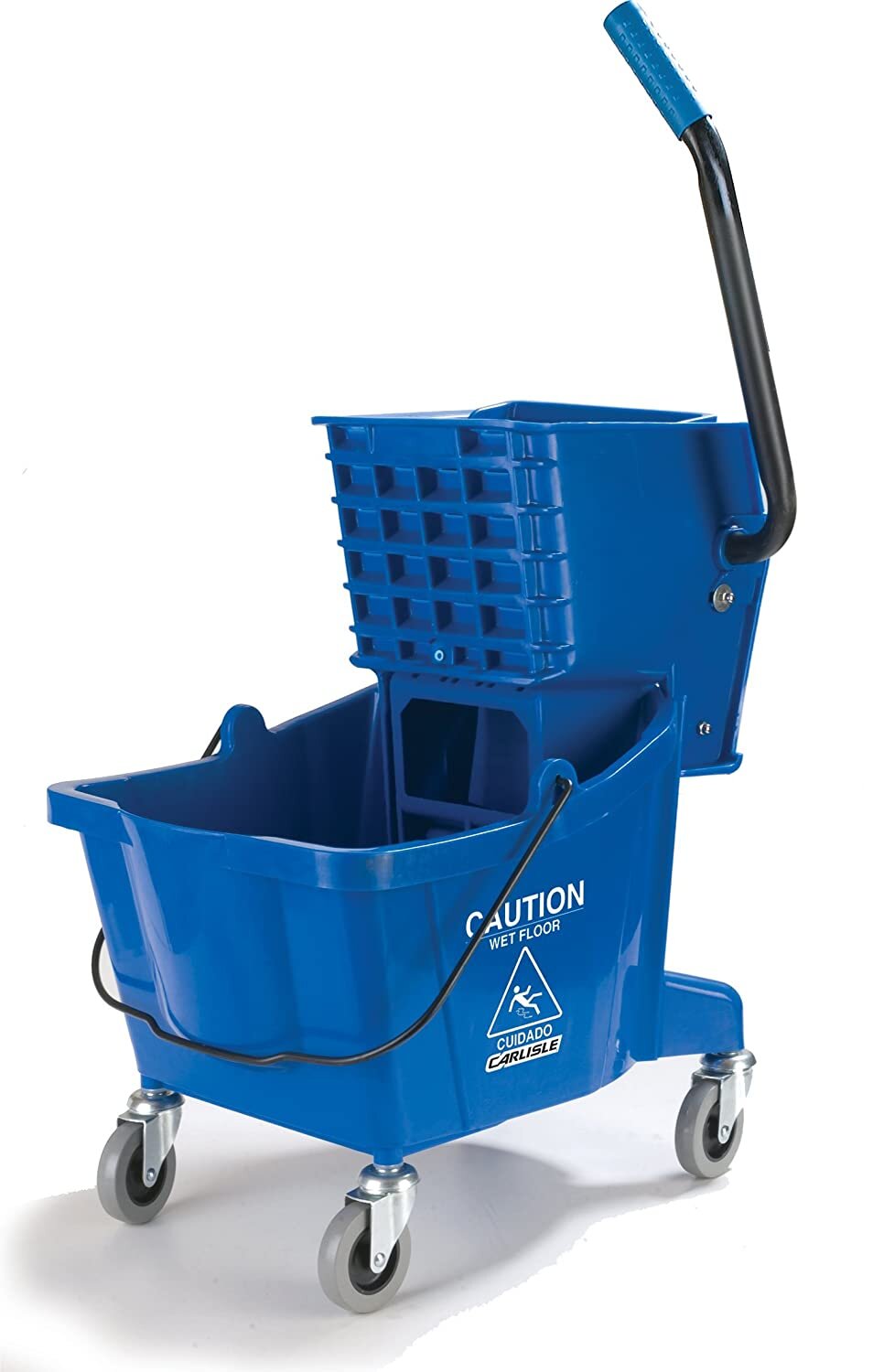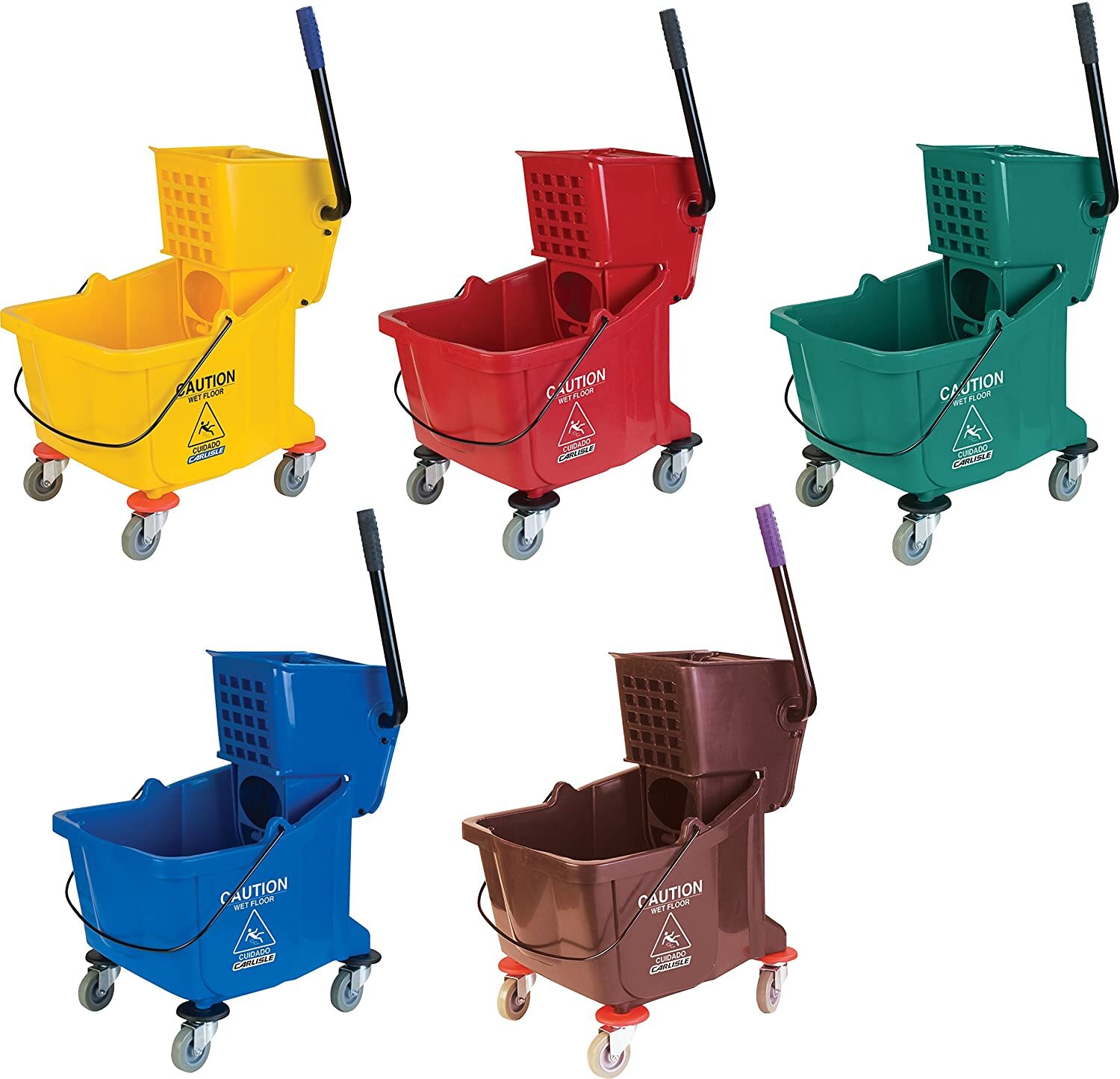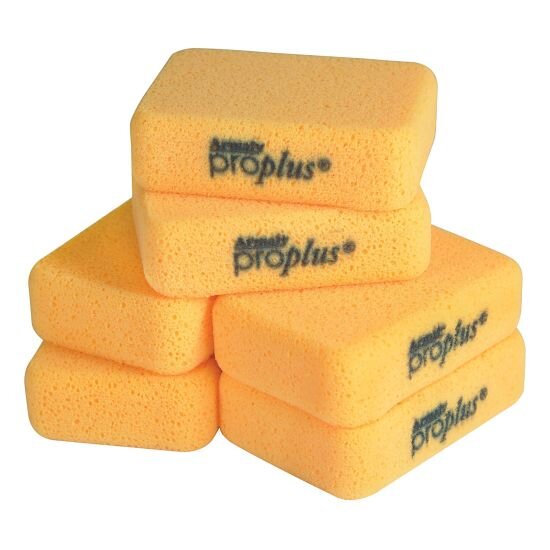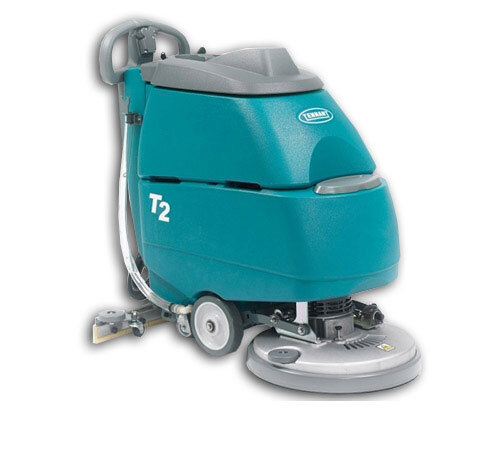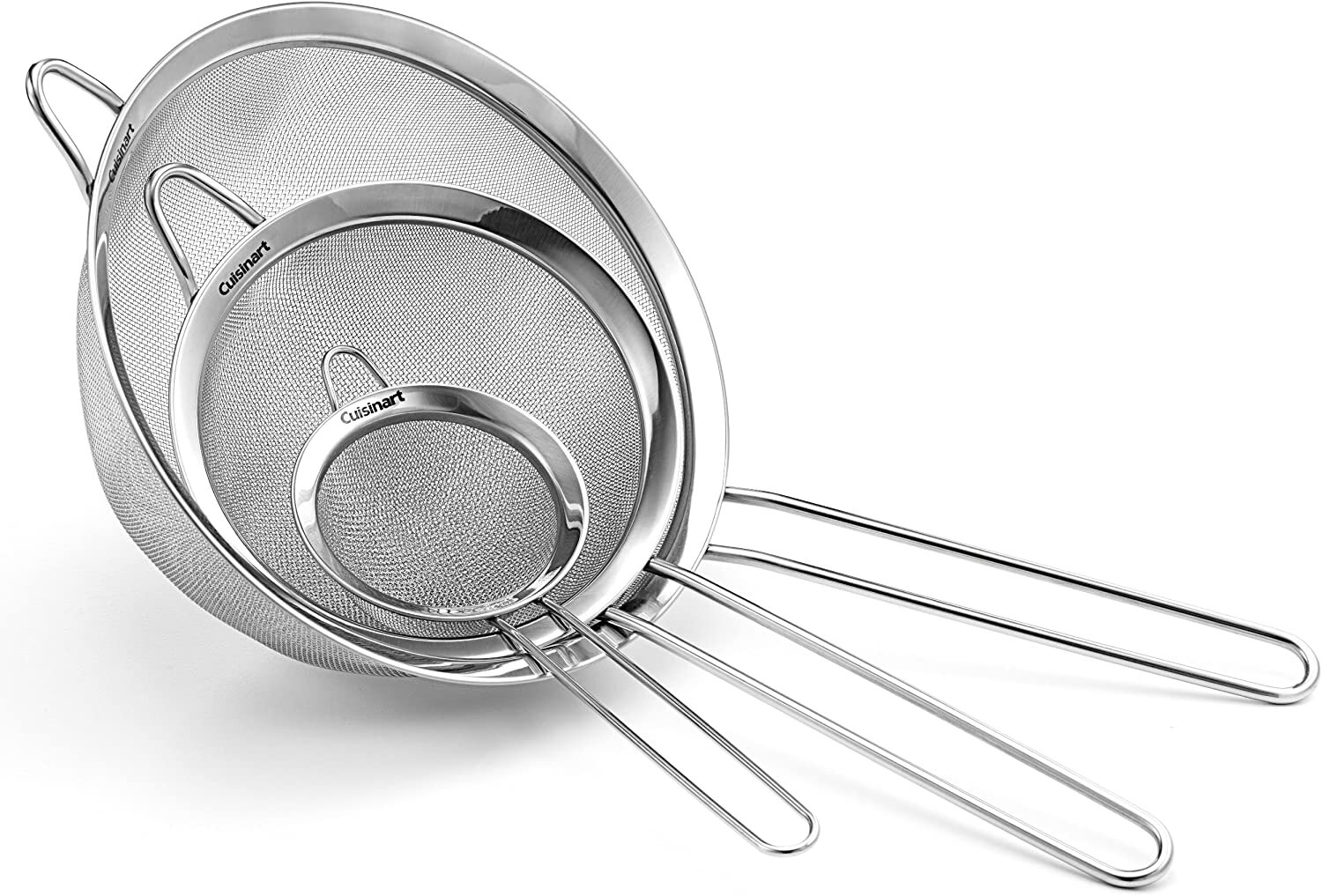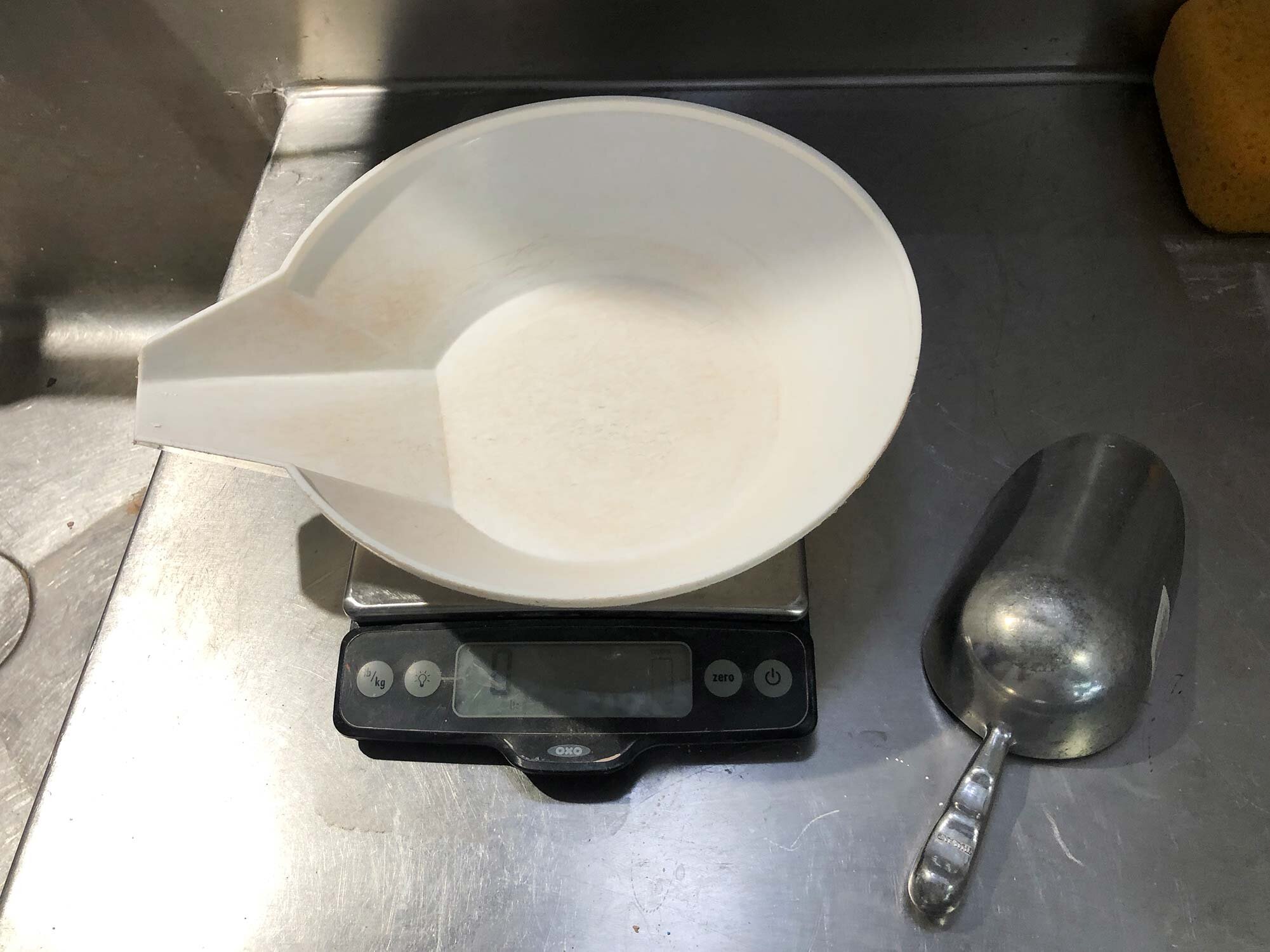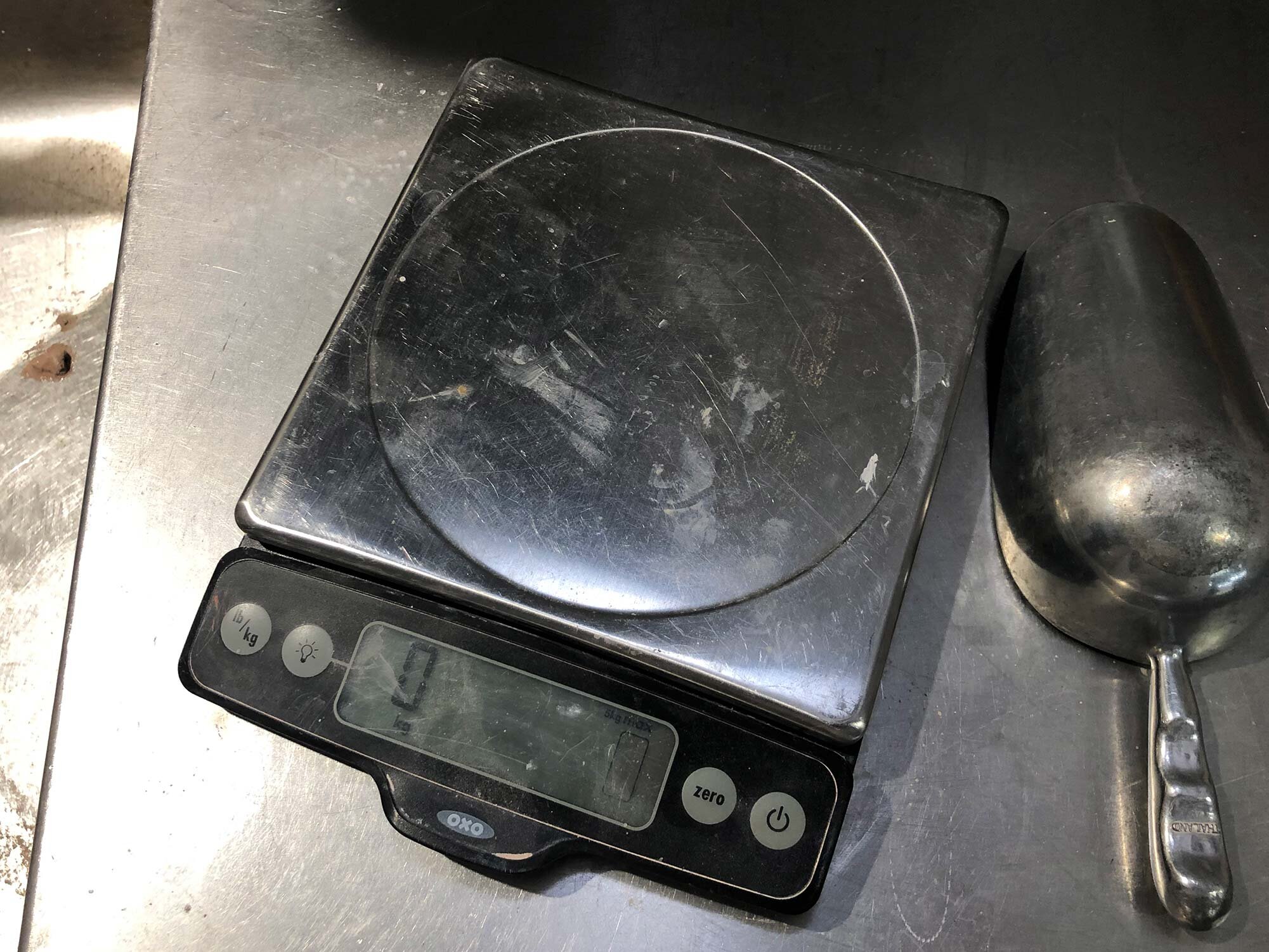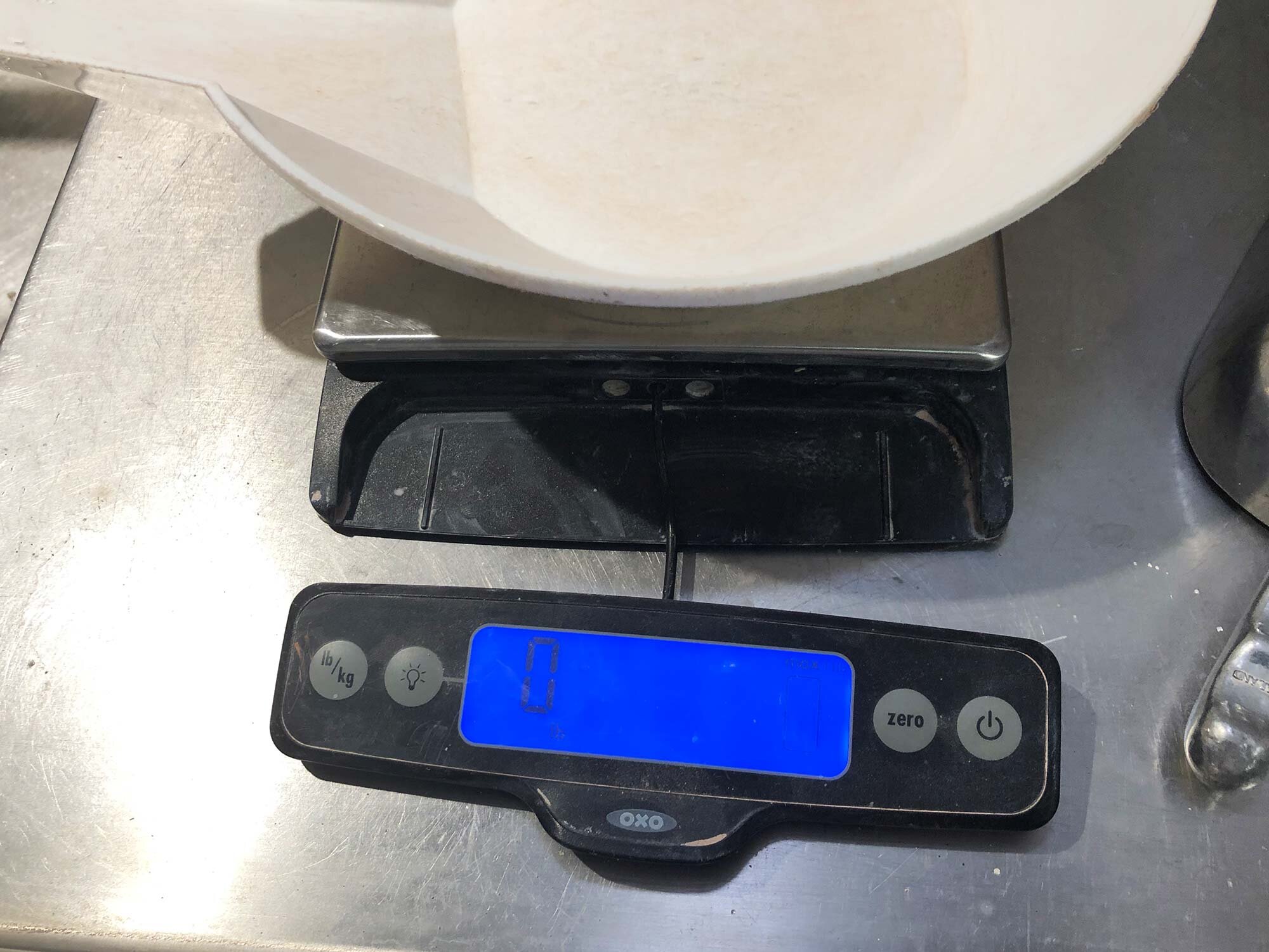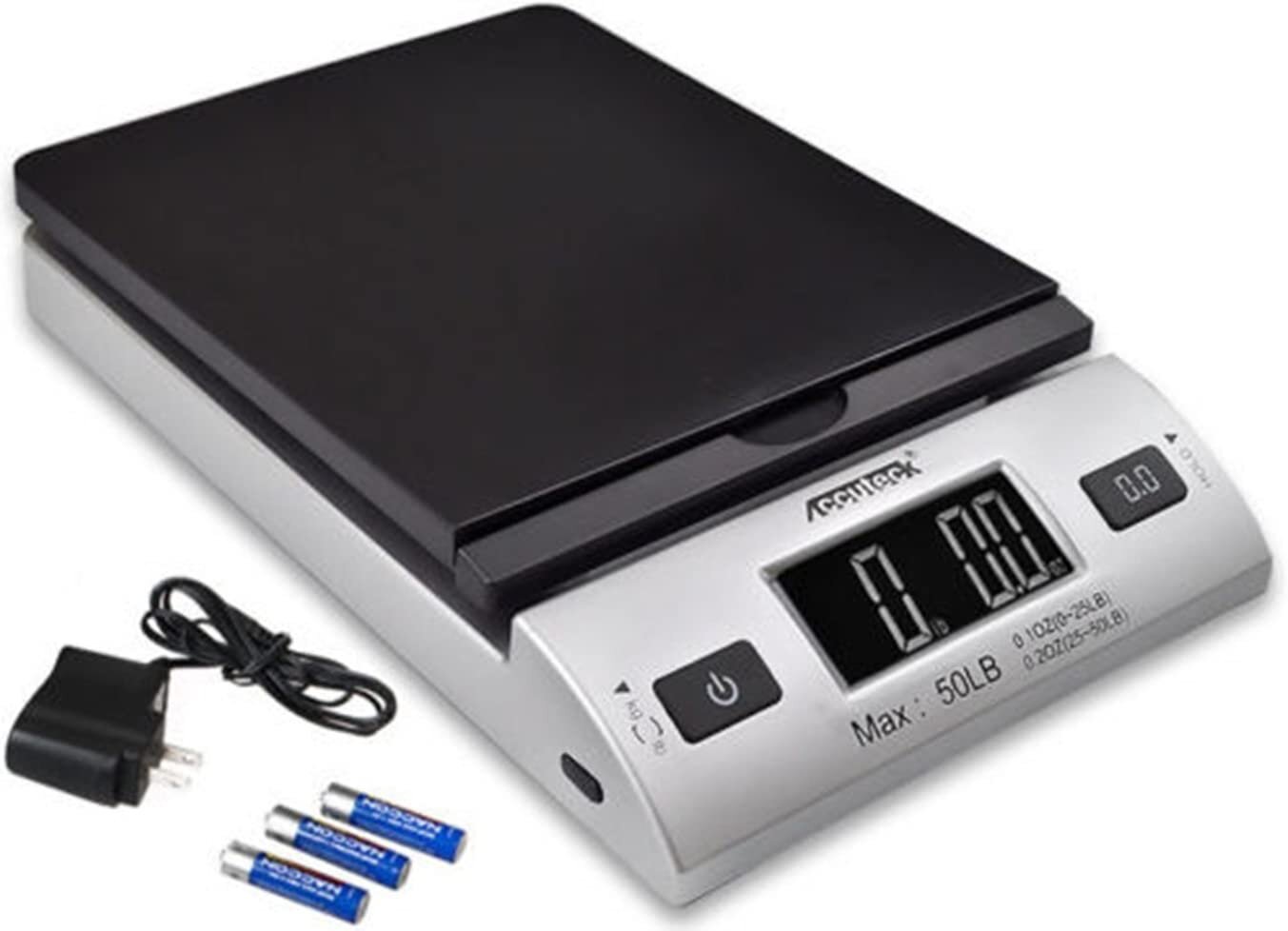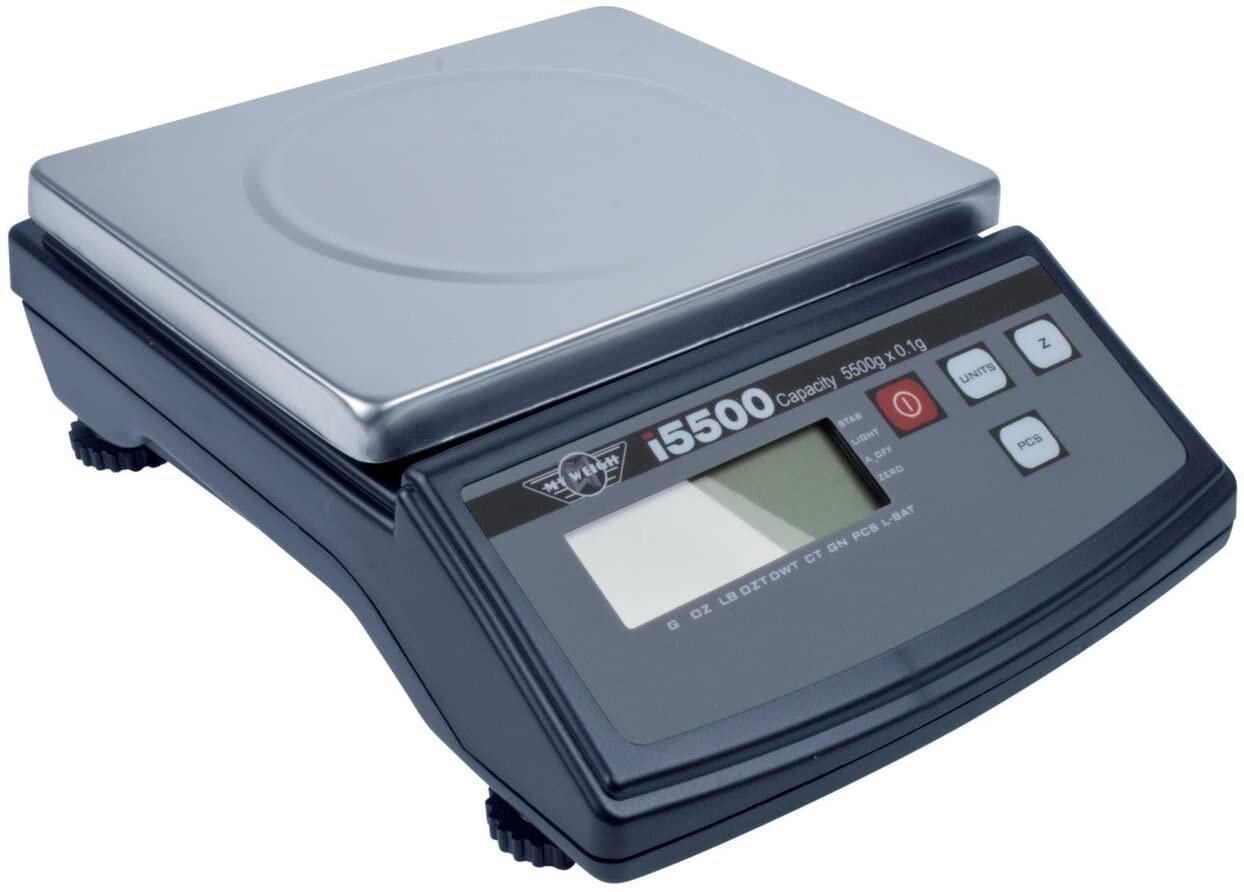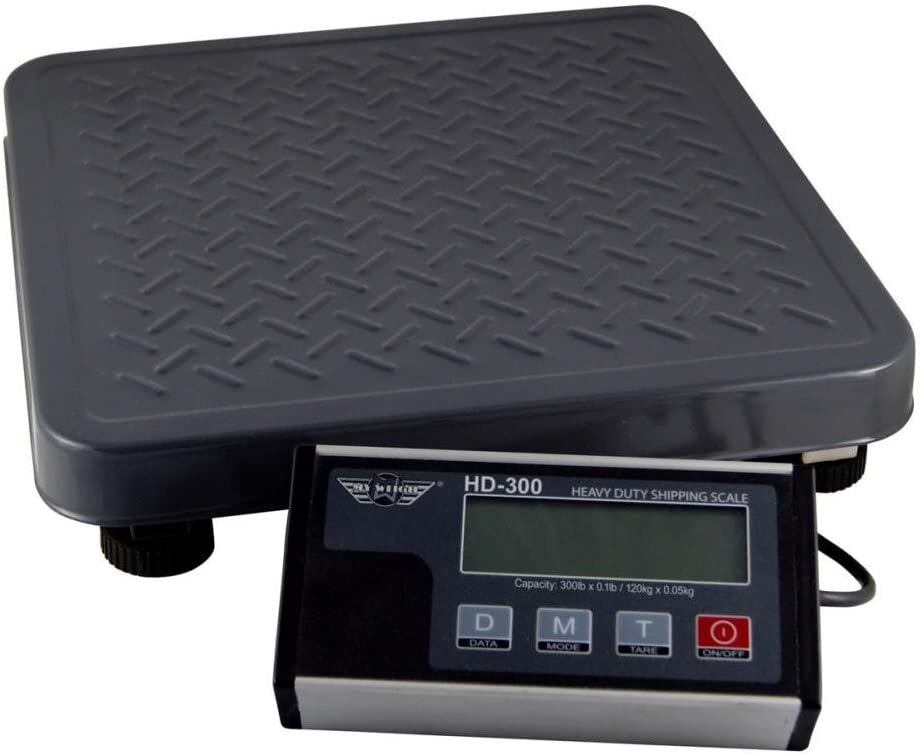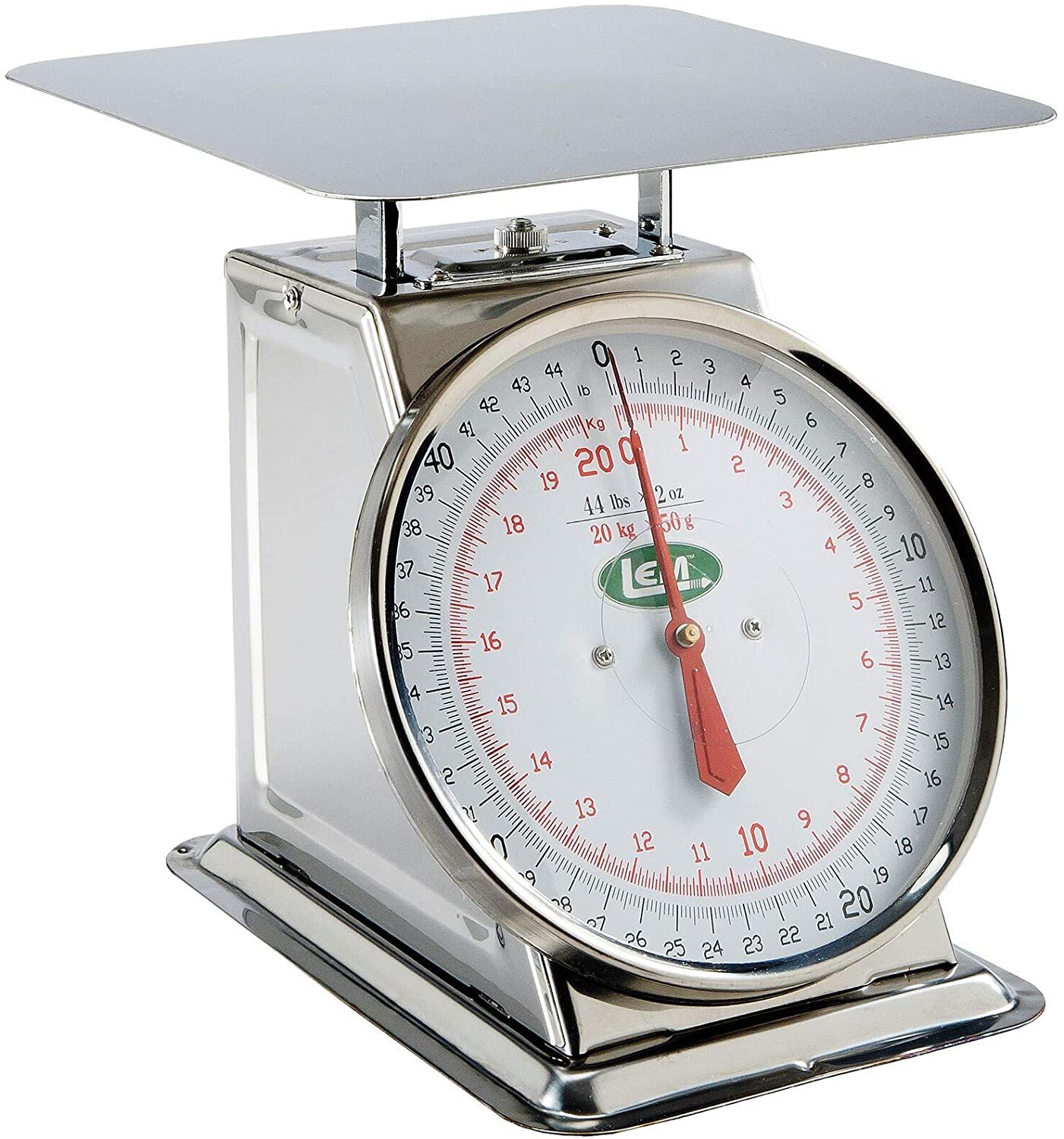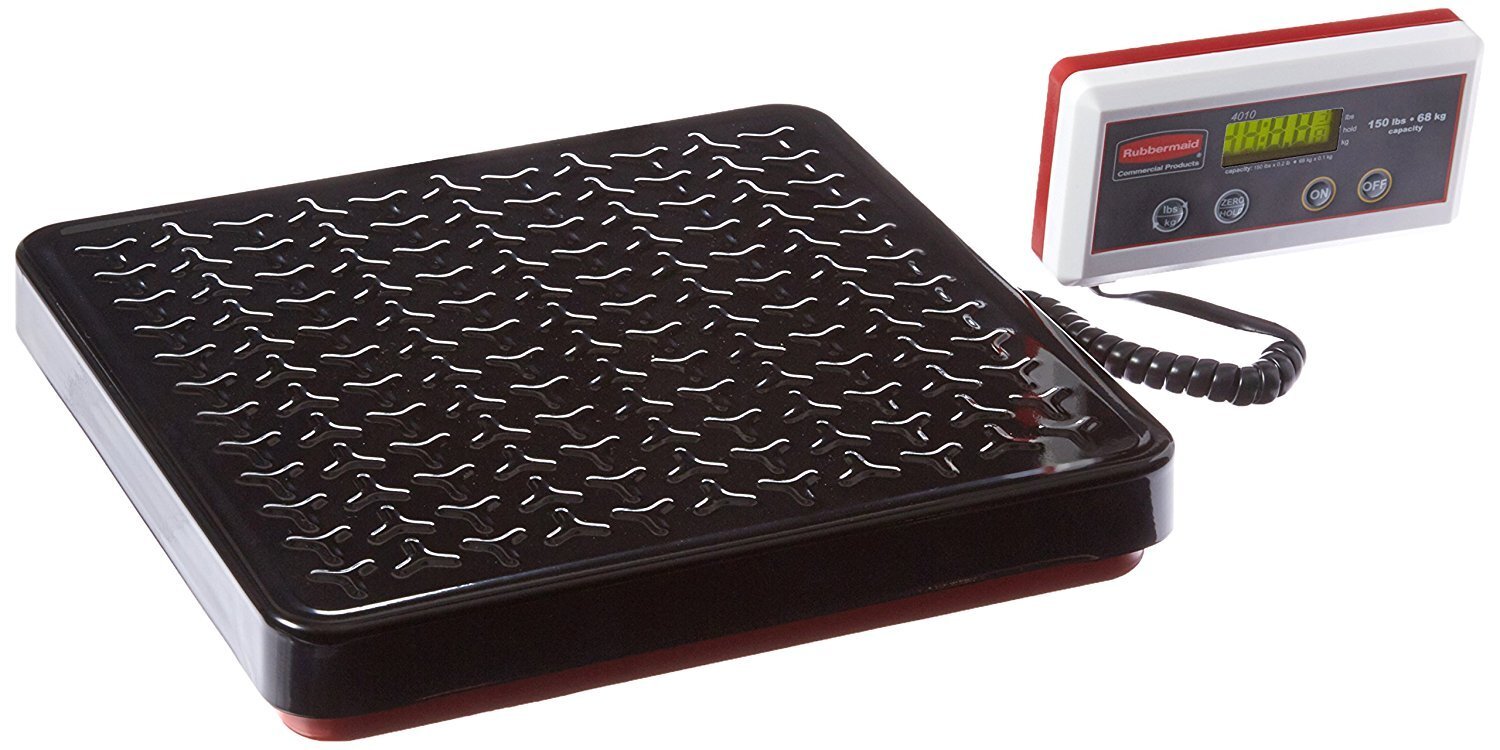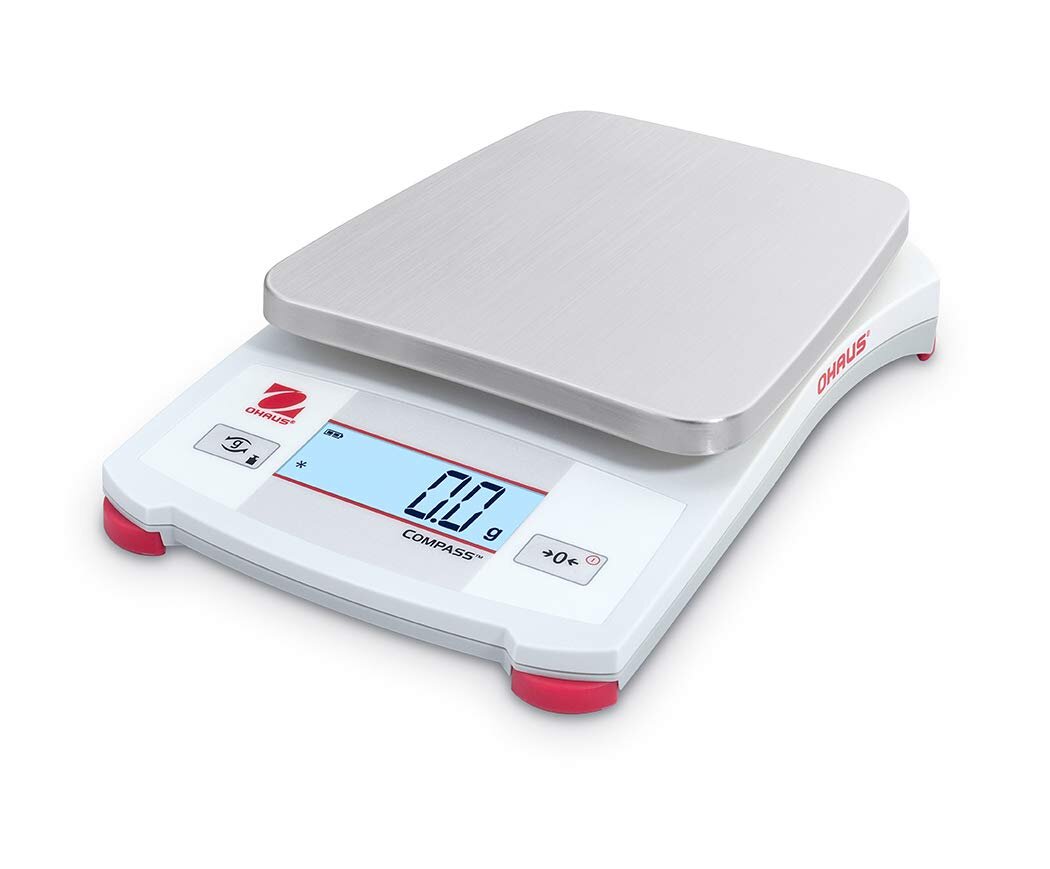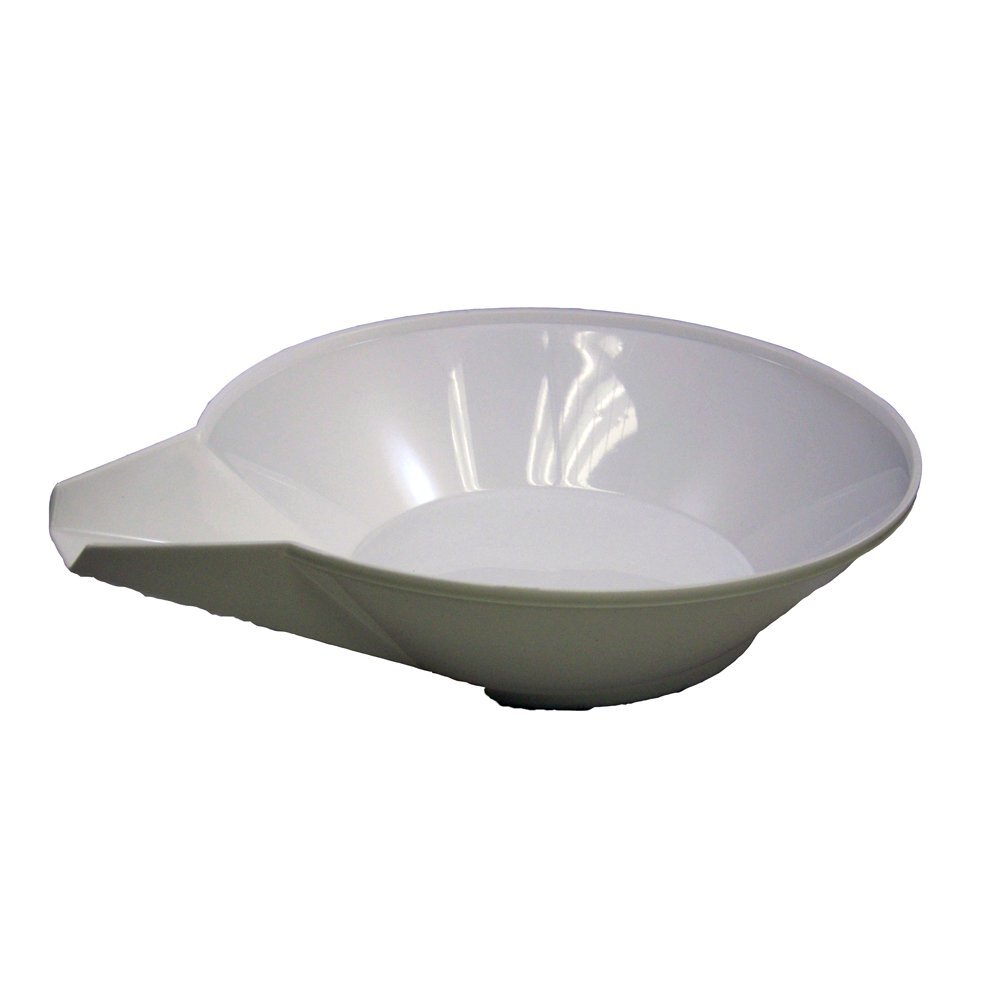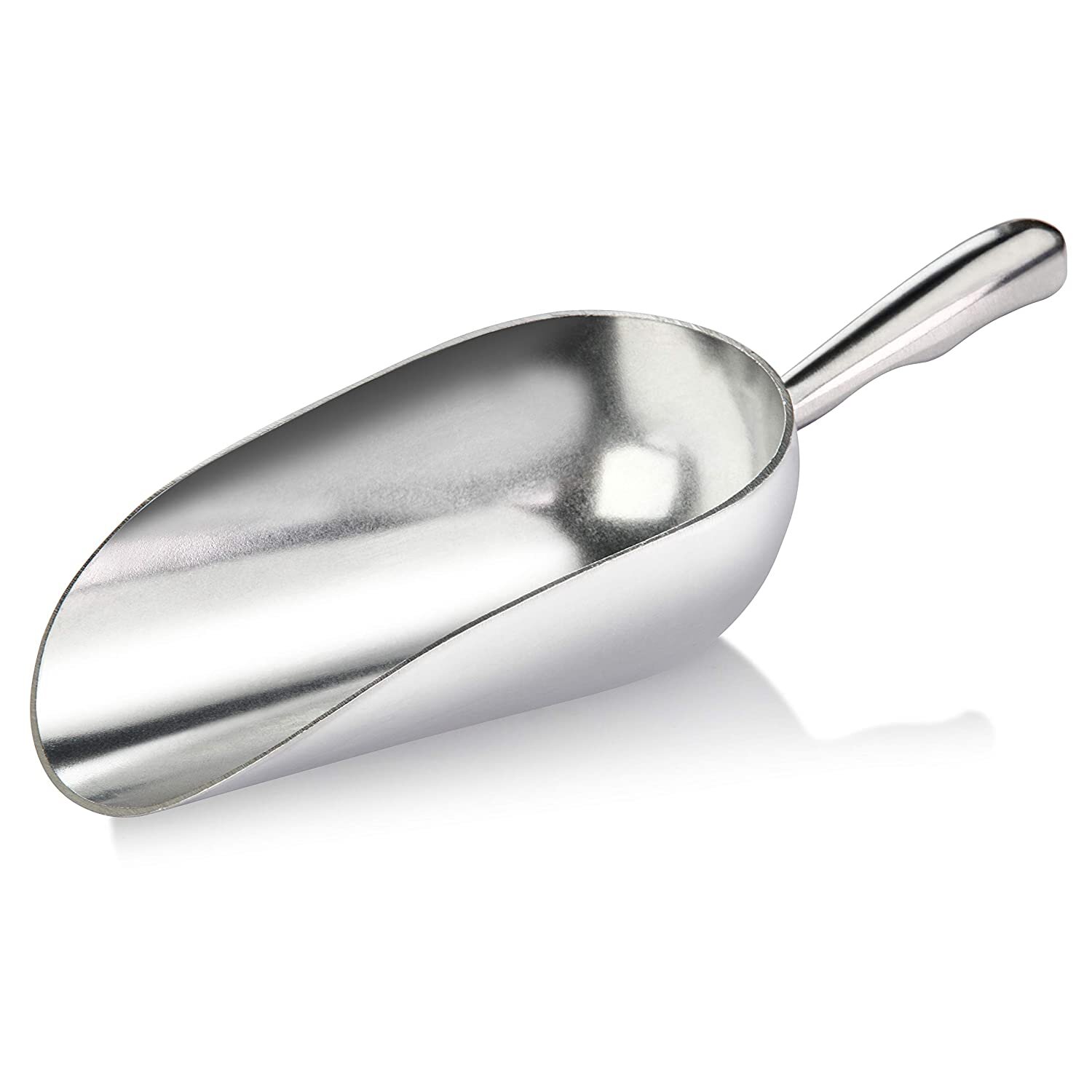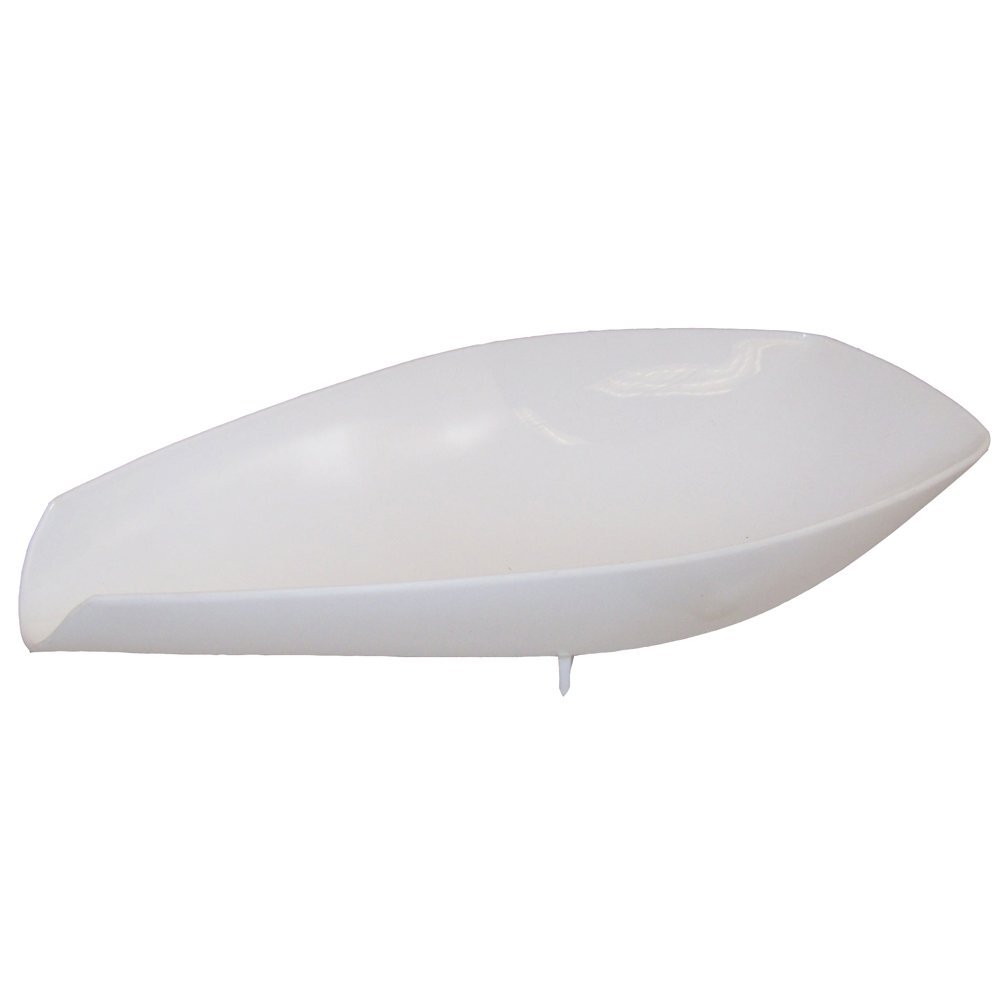Note: Updated pricing and info as of October 2023
Brent wheels are popular, dependable wheels known for an overbuilt style that features a strong plastic table with steel legs, sturdy splash pan, and a variety of belt-driven motors. You will see these yellow ochre machines everywhere and that’s because of their dependability and long-lasting quality. Brent wheels come with a 10 year warranty but expect them to last much longer than that.
This post will cover all the models and features of Brent pottery wheels. For other wheels, check out our 2023-24 pottery wheel buyer’s guide or a comparison chart of wheels.
TOP PICK: Brent Model C
Brent Model C pottery wheel in the classic Brent yellow.
The top pick for a Brent Wheel is the Model C. It features a 14” wheelhead, 3/4 HP motor, and can go forward or reverse with the flip of a switch. The Model C is generally available for around $1,980.
Model C is also the one model Brent has made available in a sleek, all-black model.
This model strikes a balance of features and affordability: The Model B has a smaller 12” wheelhead and less-powerful motor, while the other wheels feature larger, more costly, motors.
Most Brent Models, including the C, are also available in all black.
Read below for more info and an overview of each wheel offered by Brent.
Table of Contents
Overview of Brent Wheels
Brent Model B
Brent Model C
Brent Model CXC
Brent Model 16
Brent Pottery Wheel Accessories
Discontinued Brent Models
Notes on repairing Brent Wheels
Summary
Brent Wheels: Overview and Background
Founded in 1967 by Robert Brent, the wheels have been manufactured by the American Art Clay Company (AMACO) since 1978. There have been a variety of wheels over time (including the recently discontinued IE models) but for decades, Brent has had a classic lineup of wheels built on top of a similar table and frame. Each wheel has the same, high-quality foot pedal, the same frame, and same splash pan. The only differences will be wheelhead size and the power of the motor.
Brent wheels are easy to adjust and repair, and really hold up under heavy use such as at schools or community centers. In my experience, Brent splash pans are the sturdiest on the market and can take the most abuse. Brent has also made upgrades in the past few years, such as sealed switches that are easier to clean and can’t get clay and water jammed into them.
Brent wheels use belt-driven motors. These are strong motors with good torque; definitely get the largest motor your budget can afford. New Brent wheels are quiet and might stay that way over time, but if the wheelheads get waterlogged or the wheel gets abused (this will happen in most shared studio spaces) expect the belt, wheelhead and/or motor to develop some noise. It’s not the noisiest thing, but if this is a concern, check out other wheels such as the ultra-quiet Shimpo Whisper.
The B and C models are where most will find the sweet spot of power and price within the Brent product line. The difference in these models are the size of the motor (1/2 HP vs 3/4 HP) and the wheelhead diameter (12” vs 14”). The CXC and the EX model are basically the same as the C, but with bigger motors.
One note is the Brent centering capacity. These are some really big numbers — Brent claims a 150 lb centering capacity for the Model B with a 1/2 HP motor. Most other manufacturers claim 50 lbs for a 1/2 HP motor while other manufacturers don’t even use these numbers. So centering capacity may be a bit inflated but Brent’s numbers are included below. In general, I think Brent uses centering capacity to mean how much clay can be turned on the wheel. If you build big pots on the wheel, go for a bigger motor.
Overall, Brent makes great, dependable wheels. The Brent Wheels are workhorses and won’t disappoint, and will be a trusty, dependable studio tool for decades.
Brent Model B
Brent Model B Pottery Wheel.
The Brent Model B is currently Brent’s entry-level wheel. The main difference with this model is that it has a 12” wheelhead (most others have 14”) and a 1/2 HP motor. This motor is quite strong but if your budget allows, you might consider getting the Model C with a larger wheelhead and motor for about $100 more.
Brent Model B features
Motor: 1/2 Horsepower
Wheelhead: 12 inch diameter
Reversible: Yes, with a switch on the control panel
Dimensions: 21 x 28 x 21.5 inches
Weight: 119 lbs
Speed: 0 to 240 rpm
Warranty: 10 years
Centering Capacity: 150 lbs
Price: Usually available for around $1,898
Brent Model C
Brent Model C
Brent Model C has the sweet spot of features and price in the Brent lineup, making it our top pick. It’s also available in an all black model. Model C has a 3/4 horsepower motor and a 14” wheelhead.
Brent Model C is also available in an all-black model.
Brent Model C features
Motor: 3/4 Horsepower
Wheelhead: 14 inch diameter
Reversible: Yes, with a switch on the control panel
Dimensions: 21 x 28 x 21.5 inches
Weight: 121 lbs
Speed: 0 to 240 rpm
Warranty: 10 years
Centering Capacity: 225 lbs
Price: Usually available for $1,980.
Model C in black typically costs $2,023.
Brent Model CXC
The Brent CXC pottery wheel.
The Brent Model CXC is virtually identical to the Model C, except that it has a 1 horsepower motor.
Brent Model CXC features
Motor: 1 Horsepower
Wheelhead: 14 inch diameter
Reversible: Yes, with a switch on the control panel
Dimensions: 21 x 28 x 21.5 inches
Weight: 129 lbs
Speed: 0 to 240 rpm
Warranty: 10 years
Centering Capacity: 300 lbs
Price: Listed at $2,045 but usually available for $1,550 to $1,600.
Model 16
The Brent Model 16 accessible pottery wheel.
The Brent Model 16 is an accessible wheel for use in rehabilitation programs or for potters in wheelchairs. It’s a really innovate design that adds flexibility and accessibility to a studio. It is completely adjustable, such as a crank to raise or lower the wheel/table, so it can be used sitting down or standing up.
The Model 16 can roll on casters and fit through a 36” door, and the casters can be secured so that it will not move while in use.
Regarding the wheel specs, it’s the same numbers as the Model B, with a 12” wheelhead and a 1/2 horsepower motor.
Brent Model 16 features
Motor: 1/2 Horsepower
Wheelhead: 12 inch diameter
Reversible: Yes, with a switch on the control panel
Dimensions: 36 x 36 x 21 to 35 inches high
Weight: 287 lbs
Speed: 0 to 240 rpm
Warranty: 2 years
Centering Capacity: 150 lbs
Price: Listed at $3,590 but usually available for $2,900
Brent Pottery Wheel Accessories
Brent Workstation
A Brent Workstation mounted on a Model C wheel.
The Brent Workstation is a bean-shaped plastic table that will attach to almost any Brent wheel manufactured after 2009. It can really expand the work area within arms reach. It’s made of 3/8” thick black plastic—the same plastic used in Brent Plasti-Bats. It’s easy to clean, durable, and functional.
Brent Leg Extensions
The Brent Leg Extension Kit pictured here with a Model B wheel.
The Brent Leg Extension Kit will convert most Brent wheels made after 2009 into a standing wheel. The steel legs are adjustable from 35 3/4 to 40 3/4 in one inch increments.
To use, simply place the pin at the desired height and slide the leg extensions over the wheel legs, and then tighten the screws to hold in place. These extenders will work with any wheel leg that have 2 3/8” diameter leg tubes.
The leg extenders retail for $350 but can often be found for around $300.
Brent Leg Booties
Brent Leg Booties will give your wheel a lift of 2 or 4 inches. It’s a useful addition that can be screwed on tight. You can also place your wheel on cinder blocks or pieces of wood, but these are a more stable option.
Discontinued Brent Pottery Wheels
The Brent IE wheels were designed to work as full-size wheels or table top.
As recently as 2020, Brent made the IE models that could be used as a regular pottery wheel or could easily convert to a table top wheel. They are no longer listed on the AMACO Brent website, but you may find them available at stores.
Similarly, in 2023 we noted that the Model EX with a 1 1/2 HP motor is also no longer listed on the Brent website or is available for sale.
Over time, Brent has made kick wheels and other models, so you may seem some interesting used wheels out there.
For a short history on Robert Brent, the inventor of Brent wheels, check out this PDF or this 2018 article from the Santa Rosa (Calif.) Press-Democrat.
Notes on Repairing Brent Wheels
Brent Wheels are easy to repair and parts are readily available from AMACO Brent and ceramic supply stores.
The most common adjustment needed is to adjust the speed of the wheel via the foot pedal. This can be done by removing the bottom plate of the pedal and adjusting the potentiometers, which control the low and high limits on the wheel.
Other common repairs include replacing faulty on / off switches. You may also need to replace a belt. Brent has created repair videos for many of these common fixes, which can be found on YouTube.
The wheelhead is not designed to be oiled. Instead, the expectation is that the entire wheelhead assembly would be replaced if needed. For the most part, I think a wheel for an individual that is well maintained won’t need to be repaired much, if it all. But wheels that are used by beginners may have issues, such as being completely swamped by too much water, and the wheelhead can start making noise. For these more serious repairs, you may wan to ask at your local ceramic supplier if they know anyone who repairs wheels and can do these fixes for you.
Finally, if you find a used wheel you may or may not be able to find repair parts. Some of the original Brent wheels from the 1970s and 1980s are still working, or are still out there and turn up for sale. It’s hard to say if they are repairable. But a Brent Wheel that is 10 or 20 years old will probably be more straightforward to fix and use standard parts.
Summary
Brent Wheels are sturdy, dependable wheels that have been some of the most popular pottery wheels for the past 50 years. They are a worthwhile investment if you are serious about pottery. The product line doesn’t include a entry-level budget model, but instead focuses on professional-grade wheels that are great for beginners or professionals. If it’s the right wheel for you, it’ll be a dependable part of your studio for decades.
You might also enjoy:
2023-24 Pottery Wheel Buyer’s Guide
Pottery Wheel Comparison Chart
Table Top Wheel Buyers Guide 2023


